 Sign in
Sign in
Education
Business
Bookey
Bookey: Unlock big ideas from bestsellers in 30 mins audio, text, and mind maphttps://www.bookey.app/Bookey summarizes the key ideas of world’s bestselling books in 30-minute audio clips and text transcripts. Each book is complemented with a mind map that highlights the essence of the book, allowing users to grasp the gist of the book at a glance.1.Learning with no limits2.Get more in less time3.Download mode4.Inspired with mind map

The Tipping Point: Unveiling the Key to Social Epidemics
Chapter 1:Summary of The Tipping Point"The Tipping Point" by Malcolm Gladwell explores the idea of how trends, behaviors, and ideas spread like epidemics and reach a critical point where they become widespread and influential.Gladwell introduces the concept of the tipping point, which he defines as the moment when a certain idea, trend, or behavior crosses a threshold and spreads rapidly. He explains that there are three key factors that contribute to the tipping point: the law of the few, the stickiness factor, and the power of context.The law of the few refers to the idea that a small group of individuals, called connectors, mavens, and salesmen, play a disproportionate role in the spread of ideas. Connectors are people with large networks and social influence, mavens are individuals who have a deep knowledge and expertise in a particular area, and salesmen are persuasive individuals who can effectively sell an idea or product.The stickiness factor highlights the importance of making an idea or product memorable and engaging. Gladwell provides the example of the popular children's show "Sesame Street" and how its creators used research and storytelling techniques to make the show captivating and educational, thus making it highly influential.The power of context emphasizes the role of the environment in influencing behavior. Gladwell discusses the Broken Windows theory, which suggests that small signs of disorder in a community can lead to more serious crime. He also explores the role of a specific type of environment called a "tipping point" in spreading trends or behaviors.Gladwell provides numerous real-life examples throughout the book to support his theories, including the unexpected success of a brand of sneakers, the decline of New York City's crime rate, and the spread of a rare disease. He also touches on the concept of social epidemics and how they can potentially be utilized to create positive change.In summary, "The Tipping Point" delves into the factors that contribute to the sudden and widespread adoption of trends and ideas. Gladwell argues that understanding these factors can provide valuable insights into how to effectively spread positive change in various domains of society.Chapter 2:the meaning of The Tipping PointThe Tipping Point: How Little Things Can Make a Big Difference is a bestselling book written by Malcolm Gladwell. Published in 2000, the book explores the concept of the tipping point, which refers to that crucial moment when an idea, trend, or social behavior crosses a threshold and spreads rapidly throughout a population, ultimately resulting in a significant and lasting impact.Gladwell argues that there are three key factors that contribute to an idea or trend reaching its tipping point. These factors are:The Law of the Few: Gladwell suggests that a small group of individuals, known as connectors, mavens, and salesmen, play a crucial role in the spread of ideas. Connectors are individuals with a large and diverse network, while mavens are experts who accumulate knowledge and share it with others. Salesmen are persuasive individuals who have the ability to communicate a particular message effectively.The Stickiness Factor: This factor refers to the perceived value and memorability of an idea or trend. Gladwell argues that for something to reach its tipping point, it needs to have a unique and compelling attribute that makes it stick in people's minds.The Power of Context: Context plays a significant role in shaping behavior and influencing the success or failure of an idea. Gladwell highlights how certain environments and situations can create tipping points by amplifying or diminishing the impact of a particular trend or behavior.Overall, The Tipping Point explores the social dynamics and factors that lead to the sudden and widespread adoption of ideas, products, and changes in behavior. It emphasizes the importance of understanding these factors in order to create meaningful and positive social change.Chapter 3:The Tipping Point chaptersChapter 1: The Three Rules of EpidemicsIn this chapter, Gladwell introduces the concept of "tipping points" and discusses the three rules that govern epidemics: the law of the few, the stickiness factor, and the power of context.Chapter 2: The Law of the Few: Connectors, Mavens, and SalesmenHere, Gladwell explores the concept of connectors - individuals who have an innate ability to connect people across different social groups. He also discusses mavens - individuals who have a deep knowledge and expertise in a particular area - and salesmen - individuals who have exceptional persuasion skills. These three types of people play a crucial role in spreading ideas or information.Chapter 3: The Stickiness Factor: Sesame Street, Blue's Clues, and the Educational VirusThis chapter focuses on the importance of the stickiness factor, which refers to the ability of a message or idea to "stick" in the minds of people. Gladwell uses examples from children's television shows like Sesame Street and Blue's Clues to illustrate how these shows were able to capture and retain the attention of young viewers.hapter 4: The Power of Context: Bernie Goetz and the Broken Windows TheoryGladwell explores the role of context in shaping human behavior. He discusses the case of Bernie Goetz, who shot four men on a New York City subway, and links it to the Broken Windows Theory, which suggests that small acts of disorder can lead to an increase in crime and societal breakdown.Chapter 5: The Power of Thinking Without ThinkingIn this chapter, Gladwell delves into the power of intuition and how it can lead to quick decision-making. He discusses the concept of "thin-slicing," which refers to the ability to make accurate judgments based on very limited information.Afterword: Case Study - Rumors, Sneakers, and the Power of TranslationGladwell presents a case study on how reforming public school education in Michigan and introducing a new style of sneakers led to positive changes in communities. He highlights the importance of translation, where ideas or innovations need to be presented in a way that resonates with the target audience to achieve a tipping point.Chapter 4: Quotes of The Tipping Point"The tipping point is that magic moment when an idea, trend, or social behavior crosses a threshold, tips, and spreads like wildfire.""The Law of the Few: The success of any kind of social epidemic is heavily dependent on the involvement of people with a particular set of social skills.""The Stickiness Factor: There are specific ways of making a contagious message memorable; there is a simple set of rules that have effectively governed word-of-mouth epidemics for centuries.""The Power of Context: Human behavior is sensitive to and strongly influenced by its environment.""There is a simple way to package information that, under the right circumstances, can make it irresistible. All you have to do is find it.""Ideas and products and messages and behaviors spread just like viruses do.""A social epidemic starts with the efforts of a handful of people, and the tipping point is reached when it becomes part of the social fabric."The Law of the Few says that a tiny percentage of people do the majority of the work.""Connectors are the people who link us up with the world...they are a handful of people with a truly extraordinary knack for making friends.""The tipping point is the moment of critical mass, the threshold, the boiling point."
13:2623/10/2023
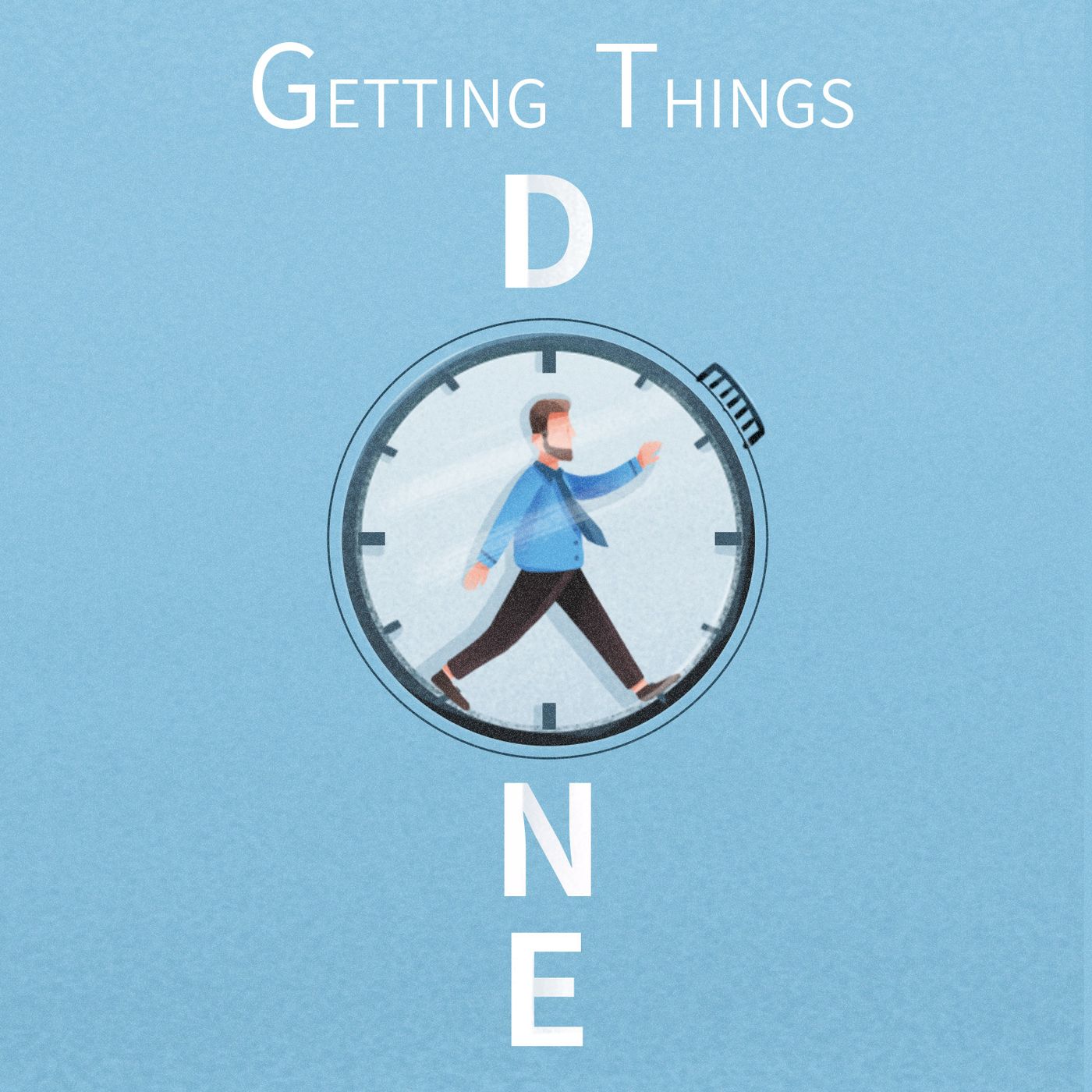
Clearing the Chaos: Mastering Productivity with "Getting Things Done" by David Allen
Chapter 1:what is the Getting things done about"Getting Things Done" by David Allen is a self-help book that offers a productivity system and methodology to help individuals effectively manage their tasks, projects, and responsibilities. The book introduces the concept of "stress-free productivity," where Allen emphasizes the importance of clearing one's mind and organizing tasks in a systematic way.The core of the book revolves around the GTD methodology, which consists of five steps:Capture: Collecting all tasks, ideas, and commitments into a trusted system, such as a to-do list or a digital organizer.Clarify: Processing each item captured by deciding what it means, identifying the desired outcome, and determining the next action required.Organize: Placing the clarified actions into appropriate categories and organizing them based on context, priority, and timeframe.Reflect: Regularly reviewing and updating the system, ensuring that it remains current and trustworthy.Engage: Taking action based on the decisions made during the previous stages. This involves selecting the right tasks based on context and availability.Allen also provides practical tips and techniques throughout the book, such as the two-minute rule (if a task takes less than two minutes, do it immediately), the concept of contexts (grouping tasks based on the available resources and location), and maintaining a "higher-altitude perspective" to prioritize work effectively."Getting Things Done" aims to help individuals achieve a state of mind where they can focus on the task at hand without being overwhelmed by distractions or incomplete commitments. The ultimate goal is to increase productivity, reduce stress, and gain control over one's professional and personal life.Chapter 2:Author of the Getting things doneDavid Allen is a productivity consultant, international speaker, and best-selling author known for his book "Getting Things Done: The Art of Stress-Free Productivity." He is widely recognized as a leading authority on personal and organizational effectiveness. Allen developed the widely acclaimed productivity methodology known as "Getting Things Done" (GTD), which has helped millions of people enhance their productivity, reduce stress, and achieve greater success in various aspects of their lives.Through his book and workshops, David Allen provides practical strategies and techniques for organizing tasks, managing priorities, and maintaining focus in a fast-paced, information-driven world. He emphasizes the importance of capturing, clarifying, and organizing all the tasks and commitments in one's life to achieve a clear and stress-free mind. His methodology involves creating a trusted system to track and manage all the inputs, ensuring that nothing falls through the cracks.David Allen's teachings have been embraced by individuals, entrepreneurs, and professionals from diverse fields, enabling them to improve their productivity, achieve better work-life balance, and experience greater peace of mind. His impact on the productivity and self-help industry has been profound, and his work continues to inspire people worldwide to optimize their performance and accomplish their goals.Chapter 3:why is the Getting things done worth readingThere are several reasons why "Getting Things Done" by David Allen is worth reading:Practical and actionable strategies: The book offers a comprehensive system for managing tasks and organizing your work and personal life. It provides practical techniques to increase productivity, reduce stress, and achieve your goals. The strategies presented in the book can be implemented immediately and customized to fit your specific needs. Time-saving techniques: Allen's methodology focuses on capturing all your tasks, ideas, and commitments in external systems, such as notes, calendars, and lists. By doing so, you free up mental space and reduce the mental clutter that often leads to overwhelm and inefficiency. The book provides tips and tools to help you streamline your workflow and make better use of your time.Stress reduction: "Getting Things Done" helps you identify and prioritize tasks, ensuring you stay organized and focused. By minimizing the mental burden of managing multiple responsibilities, the book allows you to be more present and engaged in your work and personal life, reducing stress and enhancing overall well-being.Flexibility and adaptability: Allen's methodology is not a one-size-fits-all approach but can be adapted to various work environments, professions, and personal situations. Whether you're a student, a professional, or a stay-at-home parent, the book offers valuable insights and techniques that can be tailored to your unique circumstances.Longevity and relevance: The book has remained popular since its initial publication in 2001, demonstrating its enduring value and applicability. The principles and practices outlined by Allen continue to be relevant in the fast-paced, modern world, where information overload and distractions are prevalent.Overall, if you are seeking a practical, holistic approach to time management and organization that can enhance your productivity and reduce stress, "Getting Things Done" is worth reading.Chapter 4: Books like Getting things done "The 4-Hour Workweek" by Timothy Ferriss"Atomic Habits" by James Clear"Deep Work" by Cal Newport"Essentialism: The Disciplined Pursuit of Less" by Greg McKeown"The Power of Habit" by Charles Duhigg"Rework" by Jason Fried and David Heinemeier Hansson"The Checklist Manifesto" by Atul Gawande"The ONE Thing" by Gary Keller and Jay Papasan"Eat That Frog!" by Brian Tracy"Smarter Faster Better" by Charles Duhigg
16:0423/10/2023

Pain and Profit: The Untold Story of the Empire
Chapter 1:Summary of Empire of Pain bookEmpire of Pain by Patrick Radden Keefe is a meticulously researched and deeply compelling book that delves into the rise and fall of the Sackler family and their role in the opioid crisis.The book begins by tracing the family's origins in Germany and their migration to the United States, where they eventually became one of the wealthiest and most influential families in America. The Sacklers built their fortune through their pharmaceutical company, Purdue Pharma, and their development of the highly addictive painkiller, OxyContin.Keefe explores the tactics the Sacklers used to market OxyContin, from their aggressive advertising campaigns to their influence over doctors and medical professionals. He uncovers the deceptive practices that Purdue Pharma employed to downplay the addictive nature of the drug and the devastating consequences it had on countless individuals and communities.Throughout the book, Keefe does not shy away from holding the Sackler family accountable for their actions. He delves into the family's culture of secrecy and their attempts to distance themselves from the crisis they helped create, revealing a web of deceit and manipulation.Keefe also highlights the efforts of individuals and communities affected by the opioid crisis to seek justice and bring attention to Purdue Pharma's role in fueling the epidemic. He discusses the numerous lawsuits and legal battles faced by the company and the Sackler family, as well as the implications for accountability in the pharmaceutical industry.In addition to providing a comprehensive account of the Sackler family's rise to power and the devastating impact of the opioid crisis, Empire of Pain raises broader questions about the influence of powerful corporations, the role of government regulation, and the ethics of the pharmaceutical industry.Overall, Empire of Pain is an eye-opening and thought-provoking exploration of the Sackler family's role in the opioid crisis and a powerful indictment of corporate greed and the devastating human toll it can exact.Chapter 2:the meaning of Empire of Pain book"Empire of Pain" by Patrick Radden Keefe is a book that examines the dark and troubling history of the Sackler family, who built a vast pharmaceutical empire with their company Purdue Pharma, primarily through the production and aggressive marketing of the highly addictive opioid painkiller OxyContin.The title "Empire of Pain" captures the essence of the Sackler family's business practices and the devastating consequences it had on individuals, families, and communities. The book explores how the Sacklers amassed enormous wealth and power, but at the cost of countless lives affected by addiction, overdose, and the broader opioid crisis in the United States.Through meticulous research and interviews, Keefe explores the intertwined narratives of the Sackler family, the rise of OxyContin, and the subsequent fallout from its widespread misuse. The book delves into the deceptive marketing tactics used by Purdue Pharma to downplay the addictive nature of OxyContin, influence doctors, and maximize profits.Overall, "Empire of Pain" conveys the meaning of a family empire built on the exploitation of pain, as well as the moral and ethical questions surrounding corporate responsibility, accountability, and the consequences of prioritizing profit over public health.Chapter 3:Empire of Pain book chapters1.Prologue: The Calling2.Part I: Patrimonyl The Beginnings of the Sackler Dynastyl Arthur's Ascentl Brothers3.Part II: Purdue Pharmal The Rise of OxyContinl A Salesman Named Mikel "We Can Do This. We Have To."4.Part III: Enemiesl Doctors and Patientsl Law Enforcementl Addicts and Advocates5.Part IV: Falloutl The Whistleblowerl Legal Battles and Settlementsl The Art World and Philanthropy6.Part V: Guilt and Accountabilityl Facing the Consequencesl Congressional Hearings7.Epilogue: AftermathChapter 4: Quotes of Empire of Pain book"The Sacklers had a genius for marketing pain, as if, with the right branding, they could make suffering sexy.""In the ruthless pursuit of profits, the Sacklers had helped create and unleash a nationwide epidemic of addiction.""By the time the Sacklers started selling OxyContin, they had already amassed immense wealth from selling other drugs. But OxyContin was their masterpiece—their Empire of Pain.""They exploited doctors’ trust, manipulated regulators, and pushed their highly addictive drug on patients who had no idea what they were getting into.""The Sacklers were not doctors, scientists, or addiction specialists. They were businessmen who saw an opportunity to profit from people's pain.""The Empire of Pain was built on the backs of countless individuals who became trapped in a cycle of addiction, their lives spiraling out of control.""The Sackler family amassed billions of dollars from the sale of OxyContin, while communities across America crumbled under the weight of addiction and overdose deaths.""The Sacklers lived lives of luxury and opulence, insulated from the devastation their actions had caused.""By glamorizing and normalizing the use of opioids, the Sacklers played a significant role in shaping the current addiction crisis.""The Empire of Pain stands as a grim reminder of the corrupting power of capitalism and the destructive consequences of prioritizing profit over human lives."
11:4820/10/2023

Unveiling the Fragility: The Coddling of the American Mind
Chapter 1:what is The Coddling of the American Mind about"The Coddling of the American Mind" is a book written by Greg Lukianoff and Jonathan Haidt which explores the rising trend of fragility and intolerance on college campuses in the United States. In the book, Lukianoff and Haidt argue that there is a generation of students who have grown up with what they call "a culture of safetyism," meaning they have been shielded from discomfort or potentially harmful experiences. This culture, they argue, has resulted in an overemphasis on emotional well-being and a diminished ability to handle differing opinions and ideas.The authors specifically focus on three "Great Untruths" that they argue are contributing to this cultural shift: the untruth of fragility (the belief that people are more vulnerable and delicate than they actually are), the untruth of emotional reasoning (the belief that feelings are more important than facts), and the untruth of us versus them (the belief that the world is divided into good and evil people).Throughout the book, Lukianoff and Haidt provide examples of incidents on college campuses and discuss the negative consequences of this mindset, including the stifling of free speech, the degradation of critical thinking skills, and the polarization of society. They also offer suggestions for how both students and institutions can address these issues and work towards creating a more open, tolerant, and intellectually engaging environment.Chapter 2:Author of The Coddling of the American MindGreg Lukianoff is an American attorney, author, and the CEO of the Foundation for Individual Rights in Education (FIRE). He has been actively involved in promoting free speech rights on college campuses and challenging restrictive speech policies. Lukianoff co-authored the book "The Coddling of the American Mind" with Jonathan Haidt.Jonathan Haidt is an American social psychologist, professor, and author. He is known for his research on moral psychology and the psychology of morality. Haidt is a professor of ethical leadership at the NYU Stern School of Business and also a visiting professor of psychology at the University of Virginia. He has written several books, including "The Righteous Mind" and "The Coddling of the American Mind," which he co-authored with Greg Lukianoff. In his works, Haidt explores how moral values, political beliefs, and culture impact human behavior and societal issues.Chapter 3:why is The Coddling of the American Mind worth reading"The Coddling of the American Mind" by Greg Lukianoff and Jonathan Haidt is worth reading for several reasons:Exploration of campus culture: The book delves into the increasingly prevalent phenomenon of "safetyism" on college campuses, where students are shielded from ideas or experiences that may be discomforting or challenging. It provides a deep analysis of how this trend emerged and the potential consequences it has on intellectual and emotional development.Understanding generational differences: The authors address the factors contributing to a change in student behavior and attitudes over recent years. They shed light on the societal shifts that have led to increased emotional fragility and a lack of resilience among college students, highlighting the generational differences between millennials and their predecessors.Examination of moral foundations: Lukianoff and Haidt explore the concept of moral foundations and how they shape people's attitudes and beliefs. They discuss the importance of recognizing and appreciating diverse perspectives, arguing that exposure to differing viewpoints and open dialogue on campus is crucial for intellectual growth and the development of critical thinking skills.Psychological insights: The book delves into various psychological theories and research to explain why certain trends, such as the prevalence of anxiety and depression among college students, have emerged. It provides valuable insights into the psychological factors contributing to these issues and offers suggestions for tackling them.Practical solutions: Rather than simply highlighting problems, the authors offer practical strategies and suggestions to promote intellectual diversity, open dialogue, and resilience on college campuses. They propose steps that individuals and institutions can take to foster a healthier academic environment.Overall, "The Coddling of the American Mind" combines intellectual rigor with accessible writing, making it a thought-provoking and engaging book. It offers a comprehensive exploration of the challenges facing American college campuses and provides insightful recommendations for navigating the complex landscape of higher education in the 21st century.Chapter 4: Books like The Coddling of the American Mind "The Righteous Mind: Why Good People Are Divided by Politics and Religion" by Jonathan Haidt - This book by Haidt delves into the moral foundations and reasoning behind the division between people with different political and religious beliefs. It provides insight into the psychology of morality and how it influences our political views."I Gen: Why Today's Super-Connected Kids Are Growing Up Less Rebellious, More Tolerant, Less Happy--and Completely Unprepared for Adulthood" by Jean Twenge - Twenge explores the impact of technology and social media on the younger generation, arguing that it has led to increased anxiety, depression, and a lack of resilience. This book discusses the challenges faced by young people growing up in the digital age."The Culture of Narcissism: American Life in an Age of Diminishing Expectations" by Christopher Lasch - Published in 1979, Lasch's book examines the rise of narcissism in American culture. It explores the self-centeredness and sense of entitlement that have become prevalent in society and how they affect social and political dynamics."The Shallows: What the Internet Is Doing to Our Brains" by Nicholas Carr - Carr examines the impact of the internet on our cognitive abilities and attention span. Drawing on scientific research, he argues that the constant distractions and information overload of the online world are changing the way our brains function and ultimately affecting our ability to think deeply."Don't Blame the Kids: The Rise of Young People Who Have Never Been Loved" by Henry Giroux - Giroux explores the experiences of young people who are growing up in a society that fails to provide them with love, care, and support. He argues that the neglect of young people by society is leading to negative consequences for their development, mental health, and future prospects.
15:4020/10/2023

The Information: Unveiling the Hidden Language of the Digital Era
Chapter 1:what is The Information book about"The Information" by James Gleick is a non-fiction book that explores the history, science, and impact of information and communication throughout human history. Gleick delves into the origins of information, starting from the earliest forms of communication in the animal kingdom to the development of human language and writing systems. He then explores the profound changes brought about by the invention of the telegraph, which revolutionized long-distance communication.The book also covers the development and significance of coding and cryptography, the impact of the printing press, the rise of the Internet and digital technology, and the challenges and opportunities brought by the information age.Throughout the book, Gleick weaves together historical anecdotes, scientific theories, and cultural implications to illustrate how information shapes our understanding of the world and society. He explores concepts like entropy and chaos theory, discusses influential figures such as Claude Shannon and Alan Turing, and reflects on the challenges of information overload and filtering.Overall, "The Information" provides a comprehensive exploration of the history, power, and cultural significance of information and its essential role in shaping human civilization.Chapter 2:Author of The Information bookJames Gleick is an American author, journalist, and science historian. He was born on August 1, 1954, in New York City. Gleick studied at Harvard University, where he graduated with a degree in English and linguistics. Gleick is known for his work in popularizing scientific concepts and exploring the impact of technology on society. He has written numerous books that delve into the intersection of science, history, and culture, with a particular focus on the development and significance of information.One of his most notable works is "The Information: A History, a Theory, a Flood," published in 2011. In this book, Gleick provides a comprehensive examination of the concept of information, its evolution throughout history, and its profound influence on human communication and knowledge. He delves into various fields, such as genetics, mathematics, and computer science, to demonstrate the fundamental role of information in shaping our understanding of the world.As an author, Gleick is praised for his ability to make complex scientific ideas accessible to a wide audience. His writing style incorporates storytelling elements, allowing readers to engage with the subject matter on a personal and relatable level. Gleick's works have garnered critical acclaim, earning him prestigious honors such as the National Book Award and the Pulitzer Prize nomination.Overall, James Gleick is a highly respected author known for his insightful and thought-provoking explorations of science and its impact on society. His book "The Information" serves as a valuable resource for those interested in understanding the history and significance of the concept of information in the modern world.Chapter 3:why is The Information book worth readingThere are several reasons why The Information by James Gleick is worth reading:Comprehensive exploration: The book provides a comprehensive exploration of the concept of information spanning from ancient times to the digital age. It covers a wide range of disciplines, including mathematics, technology, linguistics, philosophy, and psychology. Gleick masterfully weaves together various aspects of information, making it a rich and informative read.Historical context: The Information delves into the historical backdrop of how information has shaped societies and civilizations. It highlights key moments in history, such as the invention of writing, the development of the telegraph and telephone, and the advent of the digital revolution. Understanding the historical context helps to appreciate the significance of information in our modern world.Thought-provoking insights: Gleick offers numerous thought-provoking insights about the nature of information. He explores deep philosophical questions, such as the relationship between information and meaning, the distinction between signal and noise, and the impact of information overload on our daily lives. These insights challenge conventional wisdom and stimulate critical thinking.Interdisciplinary approach: The author seamlessly combines insights from various disciplines, providing a well-rounded view of information. Whether you're interested in science, history, literature, or technology, there is something in The Information for you. It bridges gaps between disciplines, revealing their interconnectedness and shedding light on the bigger picture.Engaging writing style: Gleick's writing style is engaging and accessible, even when explaining complex scientific concepts. He brings characters and anecdotes to life, making the book an enjoyable read for both experts and those new to the subject. The narrative flows smoothly, making it easy to follow along.Overall, The Information offers a fascinating journey into the history, science, and philosophical implications of information, making it a worthwhile read for anyone interested in understanding the fundamental role information plays in our lives.Chapter 4: Books like The Information book"The Information: A History, a Theory, a Flood" by James Gleick (obviously, other works by the same author)"The Shallows: What the Internet Is Doing to Our Brains" by Nicholas Carr"The Victorian Internet: The Remarkable Story of the Telegraph and the Nineteenth Century's On-line Pioneers" by Tom Standage"Code: The Hidden Language of Computer Hardware and Software" by Charles Petzold"The Filter Bubble: How the New Personalized Web Is Changing What We Read and How We Think" by Eli Pariser
13:1719/10/2023

Unmasking the Illusion: The Truth behind the Halo Effect
Chapter 1:Summary of The Halo Effect bookThe Halo Effect by Phil Rosenzweig is a book that challenges popular business theories and strategies by highlighting the flaws in our thinking process when it comes to evaluating success and failure in companies. Rosenzweig argues that many commonly accepted beliefs about successful companies are actually the result of flawed research and biased analysis. The book begins by debunking the notion that successful companies have a set of specific qualities that guarantee their success. Rosenzweig highlights how the "halo effect" influences our perception of success by attributing positive outcomes to a company's overall greatness, rather than analyzing the specific factors that contributed to its success. He argues that this flawed thinking allows companies to adopt poor strategies based on a false belief in their own invincibility.Furthermore, Rosenzweig criticizes the practice of using "common sense" and management fads to drive business decisions. He provides various examples of well-known companies that have fallen victim to this flawed thinking, illustrating how using simple formulas or following popular trends can lead to disastrous outcomes.The author also explores the problem of overgeneralization, pointing out how the practices of successful companies may not apply to other contexts. He emphasizes the importance of considering the specific circumstances of each company before blindly adopting strategies that worked elsewhere.In the final chapters, Rosenzweig offers suggestions for better decision-making in the business world. He emphasizes the need for more rigorous analysis and skepticism, as well as a greater focus on evaluating long-term results rather than short-term success.Overall, The Halo Effect challenges readers to critically examine the beliefs and assumptions underlying commonly accepted business principles. Rosenzweig makes a compelling argument for the need to question popular theories and think more carefully about how success and failure are evaluated in the business world.Chapter 2:The meaning of The Halo Effect bookThe Halo Effect refers to a cognitive bias where our overall impression of a person or entity influences our perception of their individual traits or abilities. In his book "The Halo Effect and the Eight Other Business Delusions That Deceive Managers," author Phil Rosenzweig explores how this bias can affect decision-making in the business world.Rosenzweig argues that when we have a positive impression of a company or its leaders, we tend to attribute all other positive qualities to them, even if there is no direct evidence to support these assumptions. Similarly, when we have a negative impression, we tend to overlook or downplay any positive aspects. This can lead to flawed assessments and decisions based on faulty information.Rosenzweig uses various real-life business examples to highlight how the Halo Effect can distort our understanding of performance, strategy, and future success. He emphasizes that successful companies and individuals are not always perfect, and their achievements may not always be replicable or sustainable.By exposing the fallacy of the Halo Effect, Rosenzweig aims to encourage managers and leaders to critically evaluate their decision-making processes. He suggests considering multiple perspectives and gathering objective data to make more accurate judgments, rather than relying solely on subjective impressions influenced by the Halo Effect.In summary, "The Halo Effect" by Phil Rosenzweig explores the impact of cognitive bias on decision-making in the business world, specifically how our overall impression of a person or organization can distort our perception of their abilities and achievements. By understanding and being aware of the Halo Effect, individuals can make more informed and objective decisions.Chapter 3:The Halo Effect book chaptersChapter 1: The Halo EffectIn this chapter, Rosenzweig introduces the concept of the Halo Effect, which refers to the tendency to judge a company's performance based on overall impressions rather than objective measures. He explains that the Halo Effect can lead to biased and inaccurate evaluations of success and failure in business.Chapter 2: The Delusion of Correlation and CausalityRosenzweig challenges the common belief that correlation implies causality, particularly in the context of evaluating business success. He argues that many factors besides a company's performance can contribute to its success or failure, and it is important to understand the underlying causes rather than relying on surface-level correlations.Chapter 3: The Halo Effect at WorkThis chapter explores different aspects of the Halo Effect and how it manifests in various business scenarios. Rosenzweig examines case studies to illustrate how common cognitive biases can influence decision-making, and how the Halo Effect can distort perceptions of employee performance, financial metrics, and company strategy.Chapter 4: Appraising the BoardRosenzweig discusses the role of boards of directors in evaluating company performance and the challenges associated with this task. He argues that the Halo Effect can impact board evaluations, leading to the misjudgment of directors' abilities and creating a false sense of security.Chapter 5: Getting Returns on Strategic InvestmentsIn this chapter, Rosenzweig examines the relationship between strategic investments and financial returns. He emphasizes the importance of critically evaluating the strategic choices made by companies and avoiding the tendency to attribute success solely to these choices when other factors may have played a more significant role.Chapter 6: Taking Stock of Stock Market PredictionsRosenzweig questions the credibility of stock market predictions and argues that the Halo Effect can lead to misguided assessments of a company's future prospects based on stock performance. He suggests that investors should exercise caution when using stock market trends alone to make investment decisions.Chapter 7: LeadershipThis chapter explores the impact of leadership on company performance and the biases that can influence perceptions of leadership effectiveness. Rosenzweig argues that the Halo Effect often leads to overestimating the impact of leadership on success and failure, and suggests that a more balanced and nuanced perspective is needed.Chapter 8: What Drives Corporate Performance?Rosenzweig challenges the notion that there is a single formula or set of factors that drive corporate performance. He emphasizes the complexity and multifaceted nature of business success, suggesting that it involves a combination of various internal and external factors that cannot be easily distilled into a formula.Chapter 9: From Good to Great to...In the final chapter, Rosenzweig critiques the widely popular book "Good to Great" by Jim Collins and challenges its central claims. He argues that the success described in the book may be the result of the Halo Effect, and warns against blindly following prescriptive theories without critically evaluating the underlying evidence.Overall, "The Halo Effect" exposes the flaws in common business thinking and provides a critical perspective on how bias and cognitive illusions can distort our understanding of success and failure in the business world.Chapter 4: Quotes of The Halo Effect book"We are all prone to embracing simple explanations for the success or failure of others, overlooking the complexities and randomness of reality.""A key characteristic of the halo effect is that our opinions are based on our perceptions of the overall quality of a person or company, rather than a critical evaluation of specific attributes or actions.""The halo effect can cloud our judgment and lead us to overestimate the abilities and effectiveness of individuals or organizations based on their past successes.""Success often breeds complacency and a reluctance to change, which can ultimately lead to failure.""The halo effect can also lead us to unfairly attribute positive outcomes solely to the actions and decisions of individuals or organizations, disregarding other contributing factors."
11:0219/10/2023

The Power of Compassionate Connection: Exploring Nonviolent Communication
Chapter 1:Summary of Nonviolent Communication bookNonviolent Communication by Marshall Rosenberg is a guidebook for effective communication that aims to foster understanding, collaboration, and empathy between individuals. The book presents a framework and set of practical tools for achieving more respectful and compassionate interactions.Rosenberg begins by highlighting the importance of compassionate communication and the problems that occur when people resort to violence or judgment in their interactions. He introduces the concept of nonviolent communication, which involves expressing oneself honestly while also listening empathetically to others.The author describes four key components of nonviolent communication: observation, feelings, needs, and requests. To communicate effectively, individuals first need to observe a situation without judgment, describing it objectively. They should then express their feelings associated with that observation, acknowledging their own emotional reactions.Moreover, Rosenberg emphasizes the importance of recognizing one's needs as the underlying motivators for their actions and emotions. By identifying and expressing these needs, individuals can better understand themselves and communicate their desires to others.To bridge the gap between needs and action, the author suggests making requests rather than demands. Requests are specific, doable actions that can help meet individuals' needs, and they allow room for negotiation and compromise.Rosenberg also delves into how to receive criticism and feedback without becoming defensive. He outlines strategies for empathetic listening, including paraphrasing, reflecting feelings, and clarifying needs. The book also covers ways to manage anger and resolve conflicts peacefully, offering practical exercises and examples for readers to practice these skills.Ultimately, Nonviolent Communication proposes that by empathizing with others' needs and expressing our own with sensitivity, we can create a world of deeper connection, understanding, and harmony. The book offers a comprehensive framework for improving communication skills in personal relationships, workplaces, and broader social contexts.Chapter 2:the meaning of Nonviolent Communication bookNonviolent Communication (NVC) is a communication framework and process developed by Marshall Rosenberg. It is a way of speaking and listening that helps people connect with each other empathetically and peacefully. The core principle of NVC is to focus on understanding and expressing feelings and needs, rather than judgments or demands.Rosenberg believed that conflicts and difficult situations arise because of unmet needs, and NVC provides a way to identify and address those needs in a nonviolent and compassionate manner. NVC aims to create a quality of connection and empathy between individuals, fostering understanding, and cooperation.NVC consists of four main components:Observation: This involves objectively describing a situation without evaluation, interpretation, or judgment. It focuses on the concrete actions or behaviors observed rather than personal interpretations.Feelings: Identifying and expressing emotions, which provides a better understanding of personal experiences and reactions to a certain situation. This step encourages individuals to connect with their own feelings and those of others involved.Needs: Identifying universal human needs that underlie these feelings. Recognizing and expressing needs allows for deeper empathy and understanding between individuals involved in a conversation.Requests: Making clear, positive, and doable requests to meet the needs identified. These requests are free from demands or coercion and are aimed at finding mutually satisfying solutions.By using Nonviolent Communication, individuals can often defuse conflicts, promote understanding, and find mutually satisfactory resolutions by focusing on the shared human needs and fostering empathy. The process also aims to empower individuals to take responsibility for their feelings and needs and communicate them effectively, fostering healthier and more compassionate relationships.Chapter 3:Nonviolent Communication book chaptersThe Purpose of Nonviolent Communication: This chapter introduces the concept of Nonviolent Communication (NVC) and explains its purpose, which is to create connections, resolve conflicts, and meet the needs of both parties in a compassionate way.Giving from the Heart: In this chapter, Rosenberg discusses the intentions behind our actions and emphasizes the importance of giving and receiving with empathy and genuine care.Observations, Feelings, Needs, and Requests: The author introduces the four key components of NVC: observations, feelings, needs, and requests. He explains how by expressing observations without judgment, identifying our feelings, connecting them to our underlying needs, and making specific requests, we can improve our communication with others.Communication That Blocks Compassion: This chapter explores the common communication patterns that hinder compassionate connection, such as moralistic judgments, comparisons, demand-based thinking, and denial of responsibility for one's own feelings.Connecting Compassionately with Ourselves: Rosenberg emphasizes self-compassion and self-understanding as the foundation for compassionate communication. The chapter provides practical exercises for developing self-empathy.Expressing Anger Fully: This chapter examines how to express anger without causing harm and how to transform anger into healthy understanding and connection with others.The Protective Use of Force: The author explores the concept of protective force, explaining how we can set healthy boundaries and protect ourselves without resorting to violence or aggression.Liberating Ourselves and Counseling Others: This chapter delves into the role of empathy and active listening in counseling others. It provides guidance on how to offer support and understanding to those in need.Expressing Appreciation: The author highlights the importance of expressing appreciation and gratitude, and provides guidance on how to do so effectively and sincerely.Receiving Empathically: This chapter focuses on the art of listening empathically, which involves fully understanding and reflecting back the emotions and needs of the speaker.The Power of Empathy: The author discusses the transformative power of empathy in resolving conflicts and creating a compassionate connection with others.Social Change: This chapter explores how NVC can be applied on a larger scale to foster social change and create a more compassionate world.The NVC Dance Floor: The final chapter provides a metaphorical dance floor for practicing and integrating the concepts and skills of Nonviolent Communication. It offers practical exercises and suggestions for ongoing learning and growth.Chapter 4: Quotes of Nonviolent Communication book"When we give from the heart, we don't measure or count. We give because we love the act of giving.""Empathy is a respectful understanding of what others are experiencing.""The more we connect with the universal human needs behind our actions, the easier it becomes to select strategies that fulfill everyone's needs.""Everything that we do is in service of our needs.""The more we listen with the intent to understand, the more our understanding deepens, and we become more fully present."
11:1318/10/2023

Unmasking the Human Psyche: Insights from 'Maybe You Should Talk to Someone' by Lori Gottlieb
Chapter 1:Summary of Maybe You Should Talk to Someone bookMaybe You Should Talk to Someone by Lori Gottlieb is a poignant and insightful memoir about therapy and the human experience. The book follows Gottlieb, a psychotherapist herself, as she shares the stories of four of her patients and her own journey in therapy.Gottlieb starts by introducing her readers to her own experience of seeking therapy after a breakup. Through her sessions with her therapist, Wendell, she explores her own vulnerabilities and begins to unravel the reasons behind her pain. At the same time, she treats her own diverse set of patients, providing a nuanced and empathetic look into their lives.The patients she introduces are John, a successful Hollywood producer grappling with a terminal illness; Julie, a young woman struggling with the aftermath of a breakup; Charlotte, a high-achieving woman who is skeptical about therapy; and Rita, a narcissistic and self-destructive senior executive. Through these patients, Gottlieb portrays the many ways in which therapy can be transformative and healing.The book seamlessly weaves together the personal stories of the patients with Gottlieb's own experiences in therapy. She presents the concept of the "symphony of selves," the idea that people have different parts of themselves that sometimes conflict with each other, and it is important to understand and reconcile these different selves. She also touches upon themes such as grief, love, forgiveness, and the importance of human connection.Maybe You Should Talk to Someone challenges the stigma surrounding therapy and highlights its potential for growth and self-discovery. Through the intimate stories of her patients, Gottlieb reminds us of the shared humanity and the power of vulnerability and introspection.Chapter 2:the meaning of Maybe You Should Talk to Someone book"Maybe You Should Talk to Someone" is a non-fiction book written by Lori Gottlieb, a psychotherapist and author. The book explores the experiences and insights of both the therapist and the patient's perspectives in therapy. It delves into the complexities and challenges of the therapeutic process as well as the universal human experiences of pain, loss, love, and personal growth.The central theme of the book revolves around the idea that sometimes we all need someone to talk to, regardless of our personal and professional backgrounds, as therapy can provide helpful tools in navigating life's difficulties and finding fulfillment. It highlights the power of therapy as a resource for personal growth, healing, and self-discovery.The book also delves into Gottlieb's own personal therapy journey, which adds a unique and relatable dimension to the narrative. Through her experiences as both a therapist and a patient, Gottlieb demonstrates the vulnerability and strength required to seek help for one's problems, highlighting the importance of human connection and the therapeutic process.Overall, "Maybe You Should Talk to Someone" offers a glimpse into the world of therapy, destigmatizing mental health struggles, and emphasizing the value of seeking help, understanding, and compassion in navigating life's challenges. It serves as a reminder that we all have the capacity for change and growth, and that sometimes, talking to someone can be the first step towards a more fulfilling and meaningful life.Chapter 3:Maybe You Should Talk to Someone book chapters"Maybe You Should Talk to Someone" by Lori Gottlieb is a memoir that delves into the author's experiences as both a therapist and a patient. It follows her own therapy journey, while also providing insights into her clients' experiences. Here is a summary of the chapters in the book:Chapter 1: "You-Centric" - The author introduces herself as a therapist who seeks therapy after facing a personal crisis. She describes her preconceived notions about therapy and her reluctance to be a patient.Chapter 2: "There’s a First Time for Everything" - Lori shares her first therapy session with her therapist, Wendell. She discusses her reasons for seeking therapy and explores her negative emotions surrounding her breakup with her boyfriend.Chapter 3: "Fit Bird" - The author talks about her client "John," a single father and terminal cancer patient. She discusses the challenges of working in a limited timeframe and the impact of death on her clients.Chapter 4: "Sinking" - Lori opens up about her own struggles with personal and professional matters. She delves into her dissatisfaction with her personal life and her difficulties navigating the dating scene.Chapter 5: "Doppelgängers" - The author focuses on a married woman, "Charlotte," who is plagued by guilt over having an affair. Through her sessions with Charlotte, Lori explores the complexities of relationships and fidelity.Chapter 6: "Turning Points" - Lori shares a therapy session during which her patient, "Julie," reveals that she is considering ending therapy. This makes Lori question her effectiveness as a therapist and reflects on the role of therapy in people's lives.Chapter 7: "Castles in the Air" - The author reflects on her own childhood and upbringing, discussing her strained relationship with her mother and the impact it has had on her life.Chapter 8: "Right Back at You" - Lori delves into her therapy sessions with another client, "Rita," who appears to be the complete opposite of her in terms of personality. Through Rita's sessions, the author contemplates the masks people wear and the human need for connection.Chapter 9: "Another Door" - The author explores her client "Linda's" session, which focuses on her struggles with her grown children and her feelings of loneliness. Lori reflects on the challenges of aging and the importance of cultivating meaningful relationships.Chapter 10: "The Knife" - Lori shares the story of her clients, "Julie" and "John," who are both facing imminent death due to terminal illnesses. She reflects on the transformative power of therapy, even in the face of death.Chapter 11: "The Love That Dare Not Speak Its Name" - The author discusses her own struggles with external judgment and societal expectations surrounding her romantic relationship. She explores the impact of these factors on her personal wellbeing and her identity.Chapter 12: "You’re Good, I’m Good" - Lori examines her patient, "Luke's," therapy session, which explores his struggles with self-doubt, identity, and career choices. She reflects on the universality of these struggles in young adults.Chapter 13: "Perfect Boyfriend, Case Closed" - The author explores her therapy session with a client named "Ryan," who believes that his boyfriend is perfect. Through this session, she examines the concept of idealization and the dangers it poses to relationships.Chapter 14: "Death by a Thousand Cuts" - Lori reflects on her work with a couple, "Sarah" and "Sam," who are on the brink of divorce. She explores the complexities of long-term relationships, the impact of past traumas, and the potential for growth and change.Chapter 15: "The Journey" - The author discusses her own progress in therapy and the growth she has experienced as a result. She reflects on the importance of vulnerability, self-awareness, and finding one's own true path in life.Chapter 16: "Beginnings and Endings" - Lori concludes her therapy journey and reflects on her experiences as both a therapist and a patient. She contemplates the power of therapy to heal and transform lives, and the connections that can be forged through the process.Chapter 4: Quotes of Maybe You Should Talk to Someone book1. "Sometimes, we don't want to know the end. A horoscope is supposed to be a map of the psychic terrain you will be covering in the coming year. But like voyagers who ignore forecasts of rain and hurricanes and set sail anyway, most of us don't want to know the specifics of our personal meteorology."2.There is an art to listening. To really listen to someone means that you have to be present, without judgment, without agenda, and open to whatever they might say."3."The past is never dead, it is not even past. The past exerts a strong pull on the present, even when we don't realize it. It's like gravity. We can't see it, but it's there, always."
16:5718/10/2023

Unveiling the Secrets to a Longer, Healthier Life: How Not to Die
Chapter 1:Summary of the How Not to Die"How Not to Die" by Michael Greger is a comprehensive guide to living a healthy and disease-free life through a whole-food, plant-based diet. The book emphasizes the importance of nutrition in preventing and reversing chronic diseases such as heart disease, cancer, diabetes, and obesity. Greger provides evidence-based information and practical advice on foods to avoid and those to include in the diet for optimal health.The key takeaways from the book include:The importance of a plant-based diet: Greger advocates for a diet rich in fruits, vegetables, whole grains, legumes, and other plant-based foods, which are shown to have numerous health benefits. He argues that these foods are packed with essential nutrients, fiber, antioxidants, and phytochemicals that can protect against chronic diseases.Specific foods for optimal health: Greger discusses the science behind various foods and their benefits. For example, he highlights the benefits of consuming cruciferous vegetables (such as broccoli and kale) for cancer prevention and the importance of including flaxseeds in the diet for their omega-3 fatty acids.The dangers of processed foods and animal products: The book delves into the negative health effects of processed foods, such as refined sugars and fats, and their association with chronic diseases. Greger also emphasizes the risks associated with consuming animal products, particularly red and processed meats, which have been linked to an increased risk of cancer, heart disease, and other health problems.Lifestyle factors: In addition to diet, the book also discusses other lifestyle factors that can contribute to overall health and longevity. These include exercise, stress management, adequate sleep, and avoiding harmful substances like smoking and excessive alcohol consumption.Practical tips for incorporating healthy habits: Greger provides practical tips and strategies for adopting a whole-food, plant-based diet. He includes meal plans, shopping lists, and recipes to help readers easily transition to a healthier lifestyle.Overall, "How Not to Die" is a comprehensive resource that presents evidence-based research on the benefits of a plant-based diet and offers practical strategies to improve health and prevent chronic diseases.Chapter 2:the meaning of the How Not to Die"How Not to Die" by Michael Greger is a book that discusses evidence-based approaches to prevent and even reverse major diseases using a plant-based diet. The book explores scientific research on nutrition and health, emphasizing the importance of consuming a wide variety of plant foods to optimize overall well-being and longevity. It includes practical tips and meal plans to help individuals make informed dietary choices that can potentially reduce the risk of chronic diseases such as heart disease, cancer, diabetes, and more. The main message of the book is to empower readers with knowledge about nutrition and provide them with the tools to make healthier choices in order to live a longer, healthier life.Chapter 3:the How Not to Die chaptersIntroduction: In the introduction, Michael Greger explains the importance of nutrition in preventing and treating diseases. He emphasizes that a plant-based diet can significantly reduce the risk of developing chronic diseases such as heart disease, diabetes, and cancer.How Not to Die from Heart Disease: This chapter focuses on heart disease, the leading cause of death globally. Greger discusses the role of diet in preventing and reversing heart disease, highlighting specific foods like whole grains, legumes, fruits, and vegetables that promote heart health.How Not to Die from Lung Diseases: Greger explores various lung diseases, including chronic obstructive pulmonary disease (COPD) and lung cancer. He discusses the impact of smoking, air pollution, and nutrition on lung health, as well as specific foods and nutrients that can help prevent these diseases.How Not to Die from Brain Diseases: This chapter examines conditions such as Alzheimer's disease, Parkinson's disease, and stroke. Greger highlights the importance of antioxidants, omega-3 fatty acids, and a plant-based diet in reducing the risk of developing these brain diseases.How Not to Die from Digestive Cancers: Greger focuses on digestive system cancers, including esophageal, stomach, and colorectal cancers. He discusses the link between diet and these cancers, emphasizing the importance of fiber, cruciferous vegetables, and avoiding processed meats.Chapter 4: Quotes of the How Not to Die"The take-home message is that diet is the single greatest predictor of our health and longevity.""There is no such thing as a 'magic pill' or a 'one-size-fits-all' diet. Instead, we should focus on a whole foods, plant-based diet.""Every time we eat animal-based foods, we are consuming harmful substances that increase our risk of chronic diseases.""Our bodies have an amazing ability to heal and repair themselves if we provide them with the right nutrition."
10:4217/10/2023

Unraveling the Mystery: What Happened To You
Chapter 1:what is the What Happened To You about"What Happened to You?" is a book written by Dr. Bruce D. Perry and Oprah Winfrey. In this book, the authors explore the impact of childhood trauma and discuss how it shapes individuals throughout their lives. Dr. Perry, a renowned psychiatrist and neuroscientist, offers a compassionate perspective on understanding trauma and its long-lasting effects on the brain and behavior.The book emphasizes the importance of empathy and connection in relationships, highlighting the significance of asking the question "What happened to you?" instead of "What's wrong with you?" By focusing on understanding an individual's experiences and the resulting trauma, the authors aim to promote healing, resilience, and growth.Dr. Perry combines his scientific expertise with Oprah Winfrey's personal narratives, sharing her own traumatic experiences, to create a powerful and accessible exploration of trauma. Together, they offer insights into the ways trauma affects different aspects of a person's life, including relationships, emotions, behaviors, and decision-making processes."What Happened to You?" also provides practical tools and strategies for both individuals who have experienced trauma and those who want to support them. The book aims to help readers develop a deeper understanding of trauma and how to offer empathetic support, fostering healing and connection.Overall, "What Happened to You?" offers a collaborative and compassionate approach to understanding and healing from trauma, encouraging empathy, connection, and resilience.Chapter 2:Author of the What Happened To YouBruce D. Perry, MD, Ph.D., is a renowned psychiatrist and author who co-authored the book "What Happened to You?: Conversations on Trauma, Resilience, and Healing". He is known for his expertise in understanding the impact of trauma on the developing brain and his work in promoting trauma-informed care and healing for individuals of all ages.Dr. Perry is the Senior Fellow of the ChildTrauma Academy, a nonprofit organization focused on improving the lives of traumatized children. He has held various academic positions throughout his career, including serving as the Chief of Psychiatry at Texas Children's Hospital and as a faculty member at several prestigious institutions, including the Columbia University College of Physicians and Surgeons.As a clinician, researcher, and teacher, Dr. Perry has dedicated his career to helping individuals understand the profound effects of trauma and creating strategies for healing. His book, "What Happened to You?", co-authored with Oprah Winfrey, explores how understanding trauma and shifting our perspectives from asking "What's wrong with you?" to "What happened to you?" can foster empathy, healing, and resilience.Dr. Perry's groundbreaking work has earned him numerous awards and recognition, and his expertise is widely sought after by professionals in the fields of mental health, education, and social services. Through his research, writings, and public speaking engagements, he continues to shed light on the profound impact of trauma and advocates for trauma-informed approaches that can make a meaningful difference in people's lives.Chapter 3:why is the What Happened To You worth reading"What Happened To You?" by Bruce D. Perry is worth reading for several reasons:Expertise: Bruce D. Perry is a renowned psychiatrist and neuroscientist who specializes in childhood trauma. He brings his extensive knowledge and experience to the book, providing readers with valuable insights into the impact of trauma on individuals.Empathy and Understanding: This book focuses on understanding and empathizing with individuals who have experienced traumatic events. Rather than asking, "What is wrong with you?" the authors ask, "What happened to you?" This perspective encourages compassion and promotes healing.Practical Applications: Through real-life examples and stories, the book offers practical strategies for healing and recovery from trauma. It explores the impact of traumatic experiences on various aspects of life, including relationships, education, and mental health.Research-Based: This book is grounded in scientific research and evidence. It covers the latest findings from neuroscience, psychology, and developmental research, making it a reliable resource for understanding the effects of trauma and how to address them.Broad Audience: "What Happened To You?" is accessible to a wide range of readers, including individuals who have experienced trauma, educators, mental health professionals, and anyone interested in gaining a deeper understanding of trauma's effects on human beings.Overall, "What Happened To You?" is worth reading because it compassionately explores the complex issue of trauma and provides valuable insights, strategies, and research to help individuals heal and thrive.Chapter 4: Books like the What Happened To YouIf you enjoyed "What Happened To You?" by Bruce D. Perry and are looking for similar books, here are a few recommendations:"The Deepest Well: Healing the Long-Term Effects of Childhood Adversity" by Nadine Burke Harris - This book explores the impact of childhood trauma and provides insights into how it affects physical and mental health throughout life."The Body Keeps the Score: Brain, Mind, and Body in the Healing of Trauma" by Bessel van der Kolk - Dr. Bessel van der Kolk, a renowned psychiatrist, delves into the ways trauma impacts the body and mind, as well as various therapeutic approaches for healing."In an Unspoken Voice: How the Body Releases Trauma and Restores Goodness" by Peter A. Levine - This book focuses on understanding how trauma affects the body and provides techniques for recovery and healing."Childhood Disrupted: How Your Biography Becomes Your Biology, and How You Can Heal" by Donna Jackson Nakazawa - This book examines the long-term effects of childhood adversity on physical and mental health and provides strategies for healing and resilience."The Boy Who Was Raised as a Dog: And Other Stories from a Child Psychiatrist's Notebook" by Bruce D. Perry and Maia Szalavitz - In this book, Bruce D. Perry shares case studies from his practice, highlighting the impact of early trauma and the potential for recovery and resilience.
02:3217/10/2023
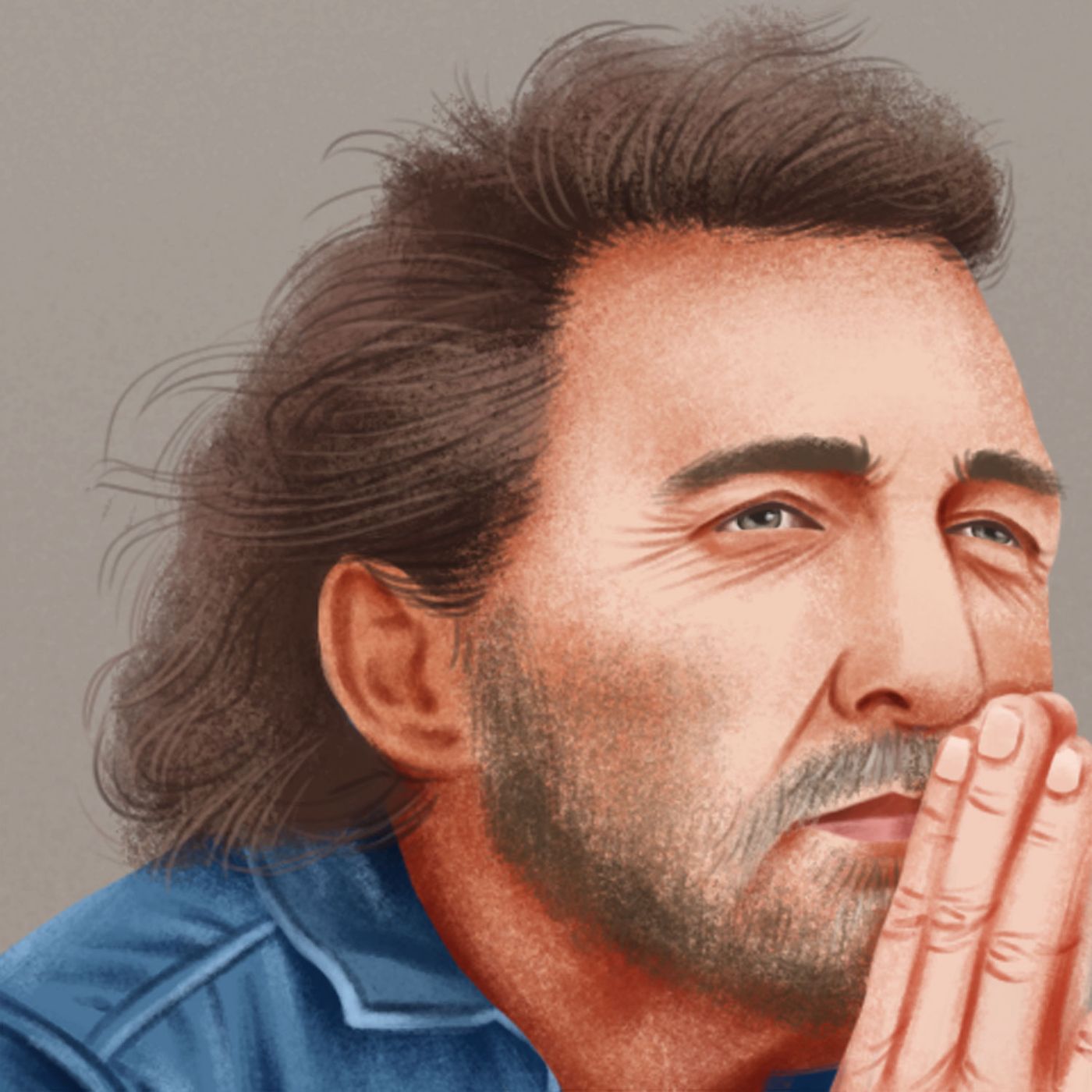
Driving Through Life's Greenlights: A Journey of Reflection and Triumph
Chapter 1:what is the Greenlights about"Greenlights" is both a memoir and a guide to living a fulfilling life, written by actor Matthew McConaughey. The book takes readers on a journey through McConaughey's life, sharing his personal experiences, lessons learned, and reflections on success and happiness.The title "Greenlights" is derived from the concept of seeing a green light as a signal to keep moving forward in life. McConaughey encourages readers to embrace the challenges, failures, and unexpected twists that come their way, as these often lead to personal growth and development. He shares various stories from his own life, from childhood and adolescence to his Hollywood career, offering insights on how to find one's own greenlights in life.Throughout the book, McConaughey explores themes such as love, family, spirituality, self-discovery, and his passion for acting. He also includes personal journal entries, poems, and anecdotes that shed light on his journey and philosophy.Overall, "Greenlights" is a contemplative and inspiring book that aims to guide readers toward embracing the highs and lows of life, finding one's authentic self, and ultimately achieving a sense of fulfillment.Chapter 2:Author of the GreenlightsMathew McConaughey is a renowned American actor and producer, known for his exceptional performances in various films and television series. However, he recently ventured into writing and released his debut book titled "Greenlights" in October 2020. Although McConaughey is primarily recognized for his on-screen talent, "Greenlights" showcases his skills as an author and his ability to craft captivating stories."Greenlights" is an unconventional memoir where McConaughey shares personal anecdotes, reflections, and life lessons that he has collected over the years. The book is divided into several categories, including his upbringing, career, love life, and philosophy on living a fulfilling life. Through his unique storytelling style, he encourages readers to find their own "greenlights," which are moments of significance and triumph in life.With "Greenlights," McConaughey not only showcases his storytelling abilities but also provides readers with valuable insights and wisdom. The book resonates with a wide range of audiences, as it combines personal anecdotes with universal experiences, making it relatable for readers from all walks of life.Mathew McConaughey's transition from acting to writing has been well-received, as "Greenlights" became a New York Times bestseller shortly after its release. His ability to engage readers through his storytelling skills demonstrates his versatility as a multi-talented artist.Through "Greenlights," Mathew McConaughey offers readers a glimpse into his life, sharing his inspiring journey and encouraging them to embrace life's challenges and opportunities. Whether you are a fan of his acting career or simply looking for a thought-provoking read, "Greenlights" promises to captivate and inspire with its unique blend of memoir and self-discovery.Chapter 3:why is the Greenlights worth reading"Greenlights" by Matthew McConaughey is worth reading for several reasons:Insightful and Inspirational: McConaughey shares personal stories, experiences, and lessons from his life, providing readers with valuable insights on how to navigate various challenges and find success. The book offers a unique perspective on personal growth, self-discovery, and living an authentic life.Engaging Writing Style: McConaughey's writing style is raw, honest, and conversational, making it easy for readers to connect with him. The book is filled with humorous anecdotes, philosophical musings, and memorable quotes, making it an enjoyable and engaging read.Universal Themes: Although McConaughey is a famous actor, the book is not solely focused on his Hollywood journey. Instead, it delves into universal themes such as resilience, self-reflection, and determination, making it relatable and applicable to readers from various backgrounds.Multifaceted Approach: "Greenlights" is not just a memoir but also a guidebook for living a more fulfilling life. McConaughey encourages readers to embrace their inner truths, take risks, and celebrate the seemingly ordinary moments. He blends personal stories with practical wisdom, making the book versatile and applicable to different aspects of life.Authenticity: McConaughey's authenticity shines through throughout the book. He doesn't shy away from sharing his failures, vulnerabilities, and mistakes, emphasizing the importance of embracing one's true self. This vulnerability inspires readers to reflect on their own lives and strive for a more authentic existence.Overall, "Greenlights" offers a refreshing and genuine perspective on life, success, and happiness. Whether you're a fan of McConaughey or simply seeking inspiration and self-reflection, the book has something valuable to offer.Chapter 4: Books like the GreenlightsIf you enjoyed Greenlights by Matthew McConaughey, you might appreciate these books that share similar themes or writing styles:Life's Operating Manual: With the Fear and Truth Dialogues by Tom ShadyacThe Alchemist by Paulo Coelho、Wild: From Lost to Found on the Pacific Crest Trail by Cheryl StrayedThe Last Lecture by Randy PauschBorn a Crime: Stories from a South African Childhood by Trevor NoahThe Road Less Traveled: A New Psychology of Love, Traditional Values, and Spiritual Growth by M. Scott PeckThe Four Agreements: A Practical Guide to Personal Freedom by Don Miguel Ruiz
11:3416/10/2023

The Future of Humanity: Homo Deus
Chapter 1:what is the Homo Deus aboutHomo Deus: A Brief History of Tomorrow is a book written by Yuval Noah Harari, a renowned historian and professor at the Hebrew University of Jerusalem. The book explores the future potential of humanity and how we may evolve as a species in the coming years.Harari argues that Homo sapiens, the human species, has successfully overcome famine, disease, and war to a considerable extent, and is now shifting its focus toward attaining god-like powers. He explores the technological advancements, particularly in the fields of artificial intelligence and biotechnology, that might enable humans to conquer the remaining challenges they face, such as death, ignorance, and suffering.In Homo Deus, Harari delves into the concepts of humanism, liberalism, and capitalism, examining how these ideologies have shaped the world we live in and how they may further transform in the future. He discusses the potential impact of these transformations on politics, religion, and social structures, challenging conventional ideas and presenting new possibilities for a highly interconnected and technologically-advanced world.The book raises thought-provoking questions about the ethical and moral implications of these advancements, discussing societal issues such as inequality, surveillance, and the potential loss of meaning and purpose in a world where humans may no longer be the most intelligent beings. Harari also discusses the potential clash between technological progress and traditional religious beliefs, as well as the potential rise of new religions centered around data and algorithms.Overall, Homo Deus offers a compelling and thought-provoking exploration of the future of humankind, pushing readers to examine their beliefs and consider the potential consequences of our relentless pursuit of progress and power.Chapter 2:Author of the Homo DeusYuval Noah Harari is an Israeli historian and a professor at the Hebrew University of Jerusalem. He is best known for his internationally acclaimed books, "Sapiens: A Brief History of Humankind," and "Homo Deus: A Brief History of Tomorrow." Harari's unique ability to combine historical analysis with insights from various disciplines, including biology, anthropology, and psychology, has made his works widely popular and thought-provoking. Through his writing, he explores the implications of humanity's past and present for our future.In "Homo Deus," Harari delves into the possibilities that lie ahead for humanity in the twenty-first century. He examines a wide range of topics, including the potential impact of technology on human life, the rise of artificial intelligence, and the challenges and ethical dilemmas that may arise as we continue to advance.Harari's thoughtful and often bold predictions, as well as his ability to critically analyze complex ideas, have garnered him a significant following. His work has been translated into numerous languages and has been praised for its ability to engage readers in deep and meaningful conversations about the future of humanity.Beyond his books, Harari is also a sought-after speaker and has given talks at various prestigious institutions around the world. He regularly contributes his insights to global discussions on topics such as technology, politics, and humanity's future.Overall, Yuval Noah Harari has made a significant impact on the field of history and has become a prominent voice in shaping our understanding of the past, present, and future of human existence.Chapter 3:why is the Homo Deus worth readingHomo Deus by Yuval Noah Harari is worth reading for several reasons:Depth of analysis: Harari provides a thorough and in-depth analysis of the current state of humanity and makes thought-provoking predictions about our future. He delves into various topics such as technology, artificial intelligence, and human enhancement, exploring their impact on society, religion, and individual lives.Unique perspective: Harari offers a unique perspective on history, drawing connections between past developments and future possibilities. He challenges traditional beliefs and assumptions, encouraging readers to think critically about the world we live in and the direction it may be heading. His insights and arguments can be eye-opening and paradigm-shifting.Engaging writing style: Despite delving into complex topics, Harari presents his ideas in an accessible and engaging manner. He uses relatable examples and anecdotes, making the book enjoyable to read for both experts and casual readers. The writing style is clear, concise, and thoughtfully structured.Understanding the future: In Homo Deus, Harari provides a glimpse into what might lie ahead for humanity. By extrapolating current trends and technological advancements, he offers a plausible vision of how the world could change in the coming decades. This can help readers better understand the potential challenges and opportunities that lie ahead, enabling them to be more prepared for the future.Thought-provoking content: Homo Deus explores profound questions about the nature of humanity, our place in the world, and the potential evolution of our species. It raises ethical, philosophical, and social dilemmas that are central to our modern existence. Reading this book can inspire introspection and stimulate meaningful conversations about the future of humanity.Overall, Homo Deus provides a compelling and insightful exploration of the challenges and opportunities humanity may face in the future. Harari's unique perspective, engaging writing style, and thought-provoking content make it a valuable read for anyone interested in understanding and navigating the complexities of our rapidly changing world.Chapter 4: Books like the Homo Deus"Sapiens: A Brief History of Humankind" by Yuval Noah Harari - This book, also written by Harari, explores the history of Homo sapiens from the emergence of our species in Africa to the present day."21 Lessons for the 21st Century" by Yuval Noah Harari - In this book, Harari examines the big issues that are shaping our present and future, such as nationalism, technology, and artificial intelligence."The Future of Humanity: Terraforming Mars, Interstellar Travel, Immortality, and Our Destiny Beyond Earth" by Michio Kaku - Kaku explores the prospects of human colonization of other planets and the potential for immortality through advancements in science and technology.
09:0816/10/2023
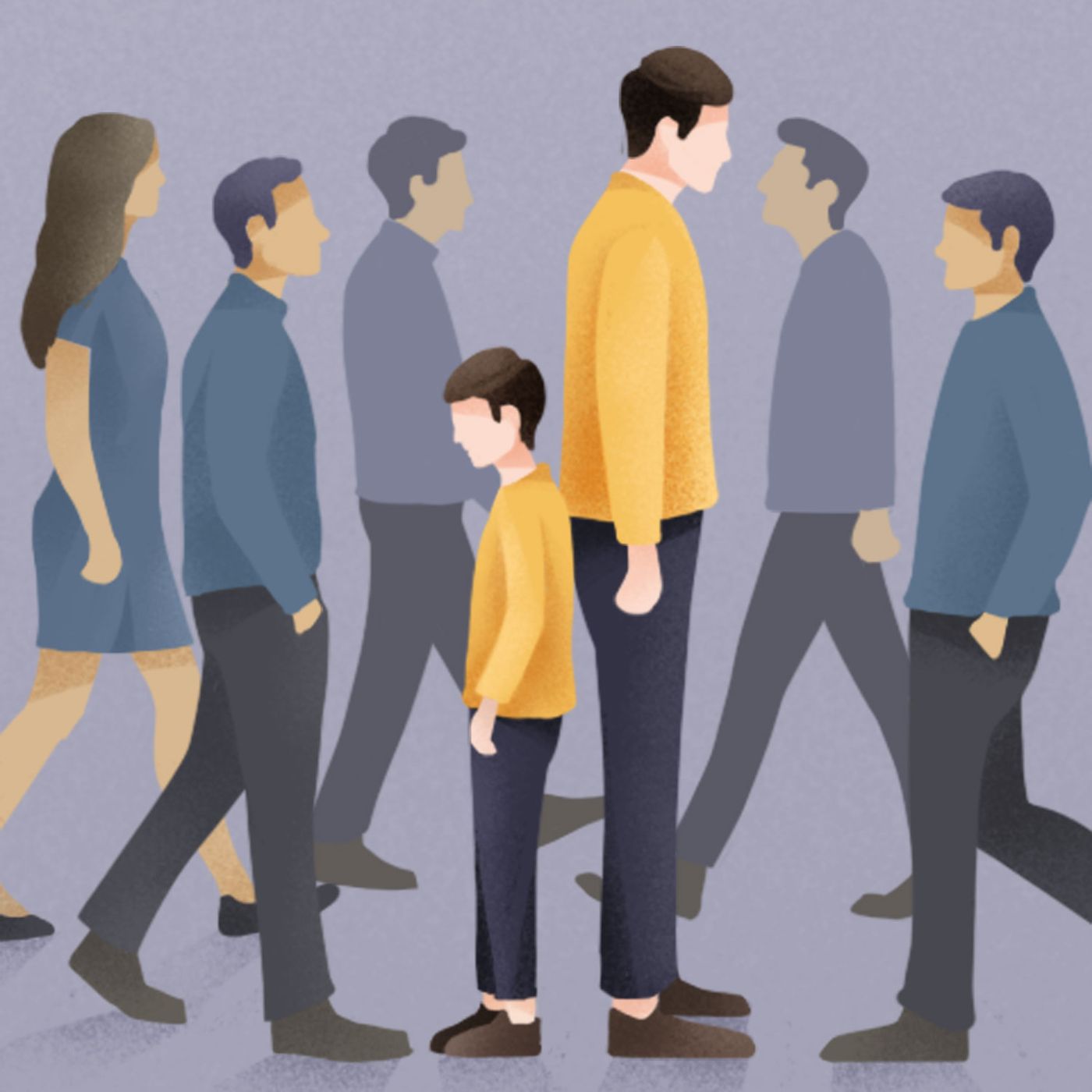
The Journey to Uncover Emotional Neglect: Running on Empty
Chapter 1:what is the Running on Empty about"Running on Empty" by Jonice Webb is a self-help book that focuses on understanding and healing from Childhood Emotional Neglect (CEN). CEN refers to a lack of emotional support, empathy, and validation received in childhood, which can have a lasting impact on an individual's emotional well-being in adulthood.Webb explores how CEN can manifest in adulthood as feelings of emptiness, low self-esteem, difficulties with emotional intimacy, and challenges in self-care. She discusses various coping mechanisms that individuals develop to deal with CEN, such as overachievement, perfectionism, and self-sufficiency.The book provides insights into recognizing the signs of CEN in oneself and others, and offers practical strategies and techniques for healing from the effects of CEN. Webb emphasizes the importance of reconnecting with one's emotions, learning self-compassion, and building healthy relationships. She guides readers through exercises and examples to help them navigate the healing process and develop a stronger sense of self.Overall, "Running on Empty" is a guidebook for individuals who have experienced Childhood Emotional Neglect, helping them understand their emotional needs, identify the impact of CEN in their lives, and ultimately work towards greater emotional fulfillment and authenticity.Chapter 2:Author of the Running on EmptyJonice Webb is a well-known author, psychologist, and speaker, best known for her groundbreaking book "Running on Empty: Overcome Your Childhood Emotional Neglect." As a licensed psychologist, she has dedicated her career to studying and understanding a common but under-recognized issue called Childhood Emotional Neglect (CEN).Dr. Webb's book, "Running on Empty," shines a light on the long-lasting effects of childhood emotional neglect and provides practical strategies to overcome its impact. Drawing on her own personal and professional experiences, she offers guidance on how to identify and heal from the consequences of CEN, which often manifest as depression, anxiety, emptiness, and relationship difficulties.Dr. Jonice Webb's work has resonated with countless individuals who have suffered from emotional neglect in their childhoods, offering them a path towards healing and self-discovery. Her expertise on this topic has not only helped individuals overcome the effects of CEN but has also provided awareness and insight to therapists and mental health professionals.In addition to "Running on Empty," Dr. Webb has co-authored another book, "Running on Empty No More," which expands upon the original work and focuses on healing relationships impacted by CEN. She conducts workshops, podcasts, and online courses to further share her knowledge and provide support to those affected by emotional neglect.With her compassionate approach and in-depth understanding, Jonice Webb continues to make a significant impact in the fields of psychology and mental health, helping people reclaim their emotional well-being and live fulfilling lives.Chapter 3:why is the Running on Empty worth reading"Running on Empty" by Jonice Webb is worth reading for several reasons:Insight into emotional neglect: The book delves deeply into the concept of emotional neglect and its impact on individuals. It helps readers understand and identify emotional neglect in their own lives, providing validation and perspective. Webb offers insights into how emotional neglect can shape one's self-perception, relationships, and overall emotional well-being.Practical guidance and strategies: Webb not only explains the concept of emotional neglect, but also provides practical tools and strategies for healing and recovery. She offers specific ways to recognize and address emotional neglect, fostering self-compassion, building emotional intelligence, and enhancing interpersonal connections.Clarity and empathy: Webb writes with clarity and empathy, making complex psychological concepts accessible to a broad audience. Her compassionate and non-judgmental approach helps readers feel understood and supported throughout their journey of self-discovery and healing.Personal anecdotes and case examples: Webb supplements her research and theory with personal anecdotes and real-life case examples. These stories make the content relatable and reinforce the importance of addressing emotional neglect. Readers can see themselves reflected in these narratives and gain valuable insights.Application beyond personal growth: While primarily aimed at individuals seeking personal growth and healing, Webb's book also has relevance in various professional fields. Therapists, counselors, educators, and caregivers can benefit from the knowledge and strategies presented in "Running on Empty." It helps professionals deepen their understanding of emotional neglect, refine their practice, and better support their clients or students.Overall, "Running on Empty" is worth reading as it offers a profound exploration of emotional neglect, provides practical guidance, and fosters a sense of validation, empowerment, and healing for individuals affected by emotional neglect.Chapter 4: Books like the Running on Empty"The Emotionally Absent Mother: A Guide to Self-Healing and Getting the Love You Missed" by Jasmin Lee Cori"Adult Children of Emotionally Immature Parents: How to Heal from Distant, Rejecting, or Self-Involved Parents" by Lindsay C. Gibson"The Childhood Roots of Adult Happiness: Five Steps to Help Kids Create and Sustain Lifelong Joy" by Edward M. Hallowell"From Surviving to Thriving: The Guide for Adult Children of Dysfunctional Families" by Pete Walker"The Body Keeps the Score: Brain, Mind, and Body in the Healing of Trauma" by Bessel van der Kolk
12:4415/10/2023
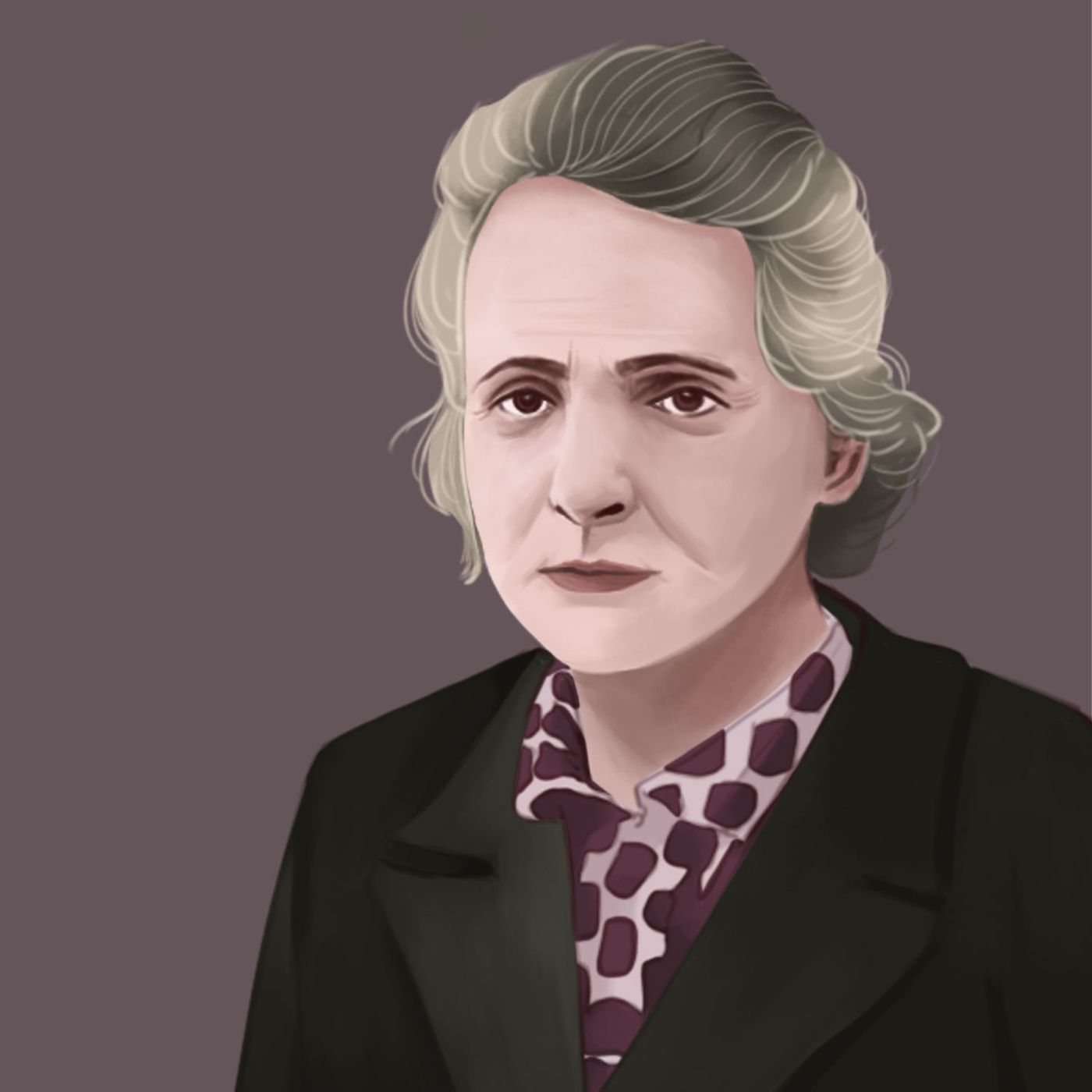
Beyond the Nobel: The Fascinating Life and Legacy of Madame Curie
Chapter 1:what is the Madame Curie about"Madame Curie" is a biography written by Ève Curie about her mother, Marie Curie, who was a renowned scientist and the first woman to win a Nobel Prize. The book provides an intimate and detailed account of Marie Curie's life, from her childhood in Poland and her early struggles as a female student in France, to her groundbreaking research in radioactivity and the scientific discoveries that led to her receiving two Nobel Prizes.Ève Curie describes the challenges and obstacles her mother faced as a woman in a male-dominated field, highlighting her determination, intellect, and perseverance. The book also delves into Marie Curie's personal life, including her marriage to Pierre Curie, their scientific collaboration, and her grief after his tragic death.In addition to Marie Curie's scientific achievements, the biography also explores her contributions during World War I, where she developed mobile radiography units nicknamed "Little Curies" to provide X-rays to wounded soldiers. Ève Curie's portrayal of her mother offers a poignant and inspiring story of a woman who dedicated her life to advancing scientific knowledge and overcoming societal barriers.Chapter 2:Author of the Madame CurieÉve Curie was a French author who wrote the biography "Madame Curie" about her mother, Marie Curie. Born on December 6, 1904, in Paris, France, Curie was the youngest daughter of Marie Curie and Pierre Curie, two renowned scientists and Nobel laureates.Growing up in a household of scientists, Curie was exposed to a world of intellectual curiosity from a young age. She pursued her education and graduated with a degree in English literature and philosophy. Later, she married Henry Labouisse, an American diplomat, and they had three children together.Curie's most notable work is her biography of her mother, titled "Madame Curie," published in 1937. This book remains one of the most widely read biographies of Marie Curie, shedding light on her incredible scientific contributions and personal struggles. "Madame Curie" explores Marie Curie's groundbreaking research on radioactivity, her tireless efforts and dedication to science, and her tragic death due to her prolonged exposure to radiation.Ève Curie's biography not only showcases her mother's accomplishments but also provides a portrait of a strong and determined woman who pushed boundaries and overcame adversity in a male-dominated field. Her book introduced Marie Curie's remarkable story to a wider audience, inspiring generations of women to pursue careers in science.Aside from her work as an author, Ève Curie was also involved in humanitarian efforts. During World War II, she served as an ambulance driver and a journalist. In addition, she became a UNICEF representative, advocating for the rights of children and visiting various countries to raise awareness and support for their welfare.Ève Curie's literary and humanitarian contributions have left a lasting impact, and she is remembered as an accomplished and influential figure in her own right.Chapter 3:why is the Madame Curie worth reading"Madame Curie" by Ève Curie is worth reading for several reasons:Insight into the life and work of Marie Curie: Ève Curie provides a comprehensive and intimate portrait of her mother, Marie Curie, the first woman to win a Nobel Prize and the only person to win Nobel Prizes in two different scientific fields. The book highlights Marie Curie's groundbreaking scientific discoveries, her struggles as a woman in a male-dominated field, and her passion for her work.Personal and emotional narrative: As Marie Curie's daughter, Ève Curie provides a unique perspective on her mother's life. She shares personal anecdotes, memories, and stories that offer readers a glimpse into the private world of the Curie family. This adds a touch of humanity and emotion to the scientific achievements, making the book more relatable and engaging to readers.Historical and cultural context: Through Marie Curie's life, Ève Curie explores the historical and cultural context of her time. The book delves into the challenges and discrimination faced by women in the early 20th century and how Marie Curie defied societal norms to pursue her scientific career. It also provides insights into the political and scientific climate of the time, offering a broader understanding of the era.Inspirational portrayal of a female scientist: "Madame Curie" celebrates the achievements of Marie Curie as a role model for women in science. The book emphasizes Marie Curie's perseverance, intelligence, and dedication, showcasing her as a groundbreaking figure who paved the way for future female scientists. Ève Curie's writing serves as a tribute to her mother's legacy and can be inspiring for readers, particularly women interested in pursuing careers in science.Overall, "Madame Curie" by Ève Curie is worth reading for its detailed account of Marie Curie's life, the personal narrative provided by her daughter, its historical and cultural context, and its inspiration for aspiring scientists, especially women.Chapter 4: Books like the Madame Curie"Marie Curie and Her Daughters: The Private Lives of Science's First Family" by Shelley Emling"Radioactive: Marie & Pierre Curie: A Tale of Love and Fallout" by Lauren RednissThe Radium Girls: The Dark Story of America's Shining Women" by Kate Moore"The Curies: A Biography of the Most Controversial Family in Science" by Denis Brian"Curie: Brave Genius" by Sean B. Carroll
08:5915/10/2023

The Inner Workings of Human Nature: Exploring Evolutionary Psychology
Chapter 1:what is the Evolutionary Psychology aboutEvolutionary Psychology: The New Science of the Mind is a book written by Professor David M. Buss, a prominent evolutionary psychologist. The book explores the field of evolutionary psychology, which seeks to understand human behavior and cognition through the lens of evolutionary biology.Buss argues that the human mind consists of specialized mental modules that have evolved to solve specific adaptive problems faced by our ancestors. He explores various aspects of human behavior and psychology, such as mating strategies, aggression, jealousy, emotions, and parenting, providing evolutionary explanations for their existence and prevalence.The book delves into topics like sexual selection, parental investment theory, evolutionary conflict, and gene-culture co-evolution. It also discusses the differences between male and female psychological mechanisms, examining how natural selection has shaped their minds in distinct ways due to differences in reproductive strategies.Buss presents empirical evidence from various research studies and cross-cultural comparisons to support his hypotheses and claims. He also addresses criticisms and debates within the field of evolutionary psychology, expanding on its implications for understanding human nature and human behavior in modern societies.Overall, Evolutionary Psychology by David M. Buss offers a comprehensive overview of the field, providing insights into human behavior from an evolutionary perspective and offering an alternative understanding of various psychological phenomena.Chapter 2:Author of the Evolutionary PsychologyDavid M. Buss is a renowned evolutionary psychologist and professor of psychology at the University of Texas at Austin. He is widely recognized as one of the leading researchers in the field of evolutionary psychology and has made significant contributions to our understanding of human behavior, particularly in areas such as mating strategies, sexual conflict, and aggression.Buss is best known for his book, "The Evolution of Desire: Strategies of Human Mating," published in 1994, which has remained a seminal work in the field. In this book, he explores the evolutionary origins of human mating behavior, delving deep into topics such as mate selection, jealousy, infidelity, and the differences between male and female strategies for reproduction.Throughout his career, Buss has conducted extensive research, often employing large cross-cultural studies, to uncover universal patterns in human behavior. His work has shed light on why certain behaviors and psychological tendencies exist within our species, rooted in the evolutionary pressures that shaped our ancestors' reproductive success.Apart from his academic contributions, Buss is also known for his engaging writing style, making his work accessible to both professionals and the general public. He has received numerous awards and honors, including the G. Stanley Hall award from the American Psychological Association for his contribution to developmental psychology.Overall, David M. Buss is an influential figure in the field of evolutionary psychology, contributing valuable insights into human behavior and mating strategies. His work continues to shape our understanding of the evolutionary forces that have influenced our psychology, and his books remain essential readings for those interested in this fascinating field of study.Chapter 3:why is the Evolutionary Psychology worth readingEvolutionary Psychology by David M. Buss is worth reading for several reasons:Comprehensive coverage: The book provides a thorough overview of the field of evolutionary psychology, covering a wide range of topics such as sexual selection, mate preferences, aggression, cooperation, and parenting. It offers a comprehensive understanding of human behavior and psychology from an evolutionary perspective. Scientific rigor: Buss presents the theories and concepts of evolutionary psychology in a rigorous and evidence-based manner. He supports his arguments with extensive research and studies conducted in various fields, including psychology, biology, anthropology, and genetics. This ensures that the information presented is grounded in scientific literature.Clear and accessible writing: Despite dealing with complex concepts, Buss writes in a manner that is clear and accessible to readers without a strong background in psychology or biology. He provides explanations and examples that make it easy for readers to understand the concepts and theories being discussed. Practical implications: The book goes beyond theory and provides insights into real-life applications of evolutionary psychology. Buss explores how evolutionary factors influence human behavior in various domains, such as relationships, parenting, aggression, and social interactions. This can help readers gain a deeper understanding of human nature and how evolutionary processes shape our daily lives.Engaging and thought-provoking: Buss's writing style is engaging and thought-provoking. He raises intriguing questions and challenges common assumptions about human behavior. This stimulates critical thinking and encourages readers to question existing models of psychology and consider alternative explanations based on evolutionary theory.Overall, Evolutionary Psychology by David M. Buss is worth reading for anyone interested in understanding the biological and evolutionary foundations of human behavior. It provides a comprehensive and scientifically rigorous exploration of the field, while also being accessible and thought-provoking.Chapter 4: Books like the Evolutionary Psychology"The Moral Animal: Why We Are the Way We Are: The New Science of Evolutionary Psychology" by Robert Wright"Why Zebras Don't Get Ulcers: The Acclaimed Guide to Stress-Related Diseases and Coping" by Robert Sapolsky"The Red Queen: Sex and the Evolution of Human Nature" by Matt Ridley"Human: The Science Behind What Makes Us Unique" by Michael S. Gazzaniga"The Selfish Gene" by Richard Dawkins
09:2114/10/2023
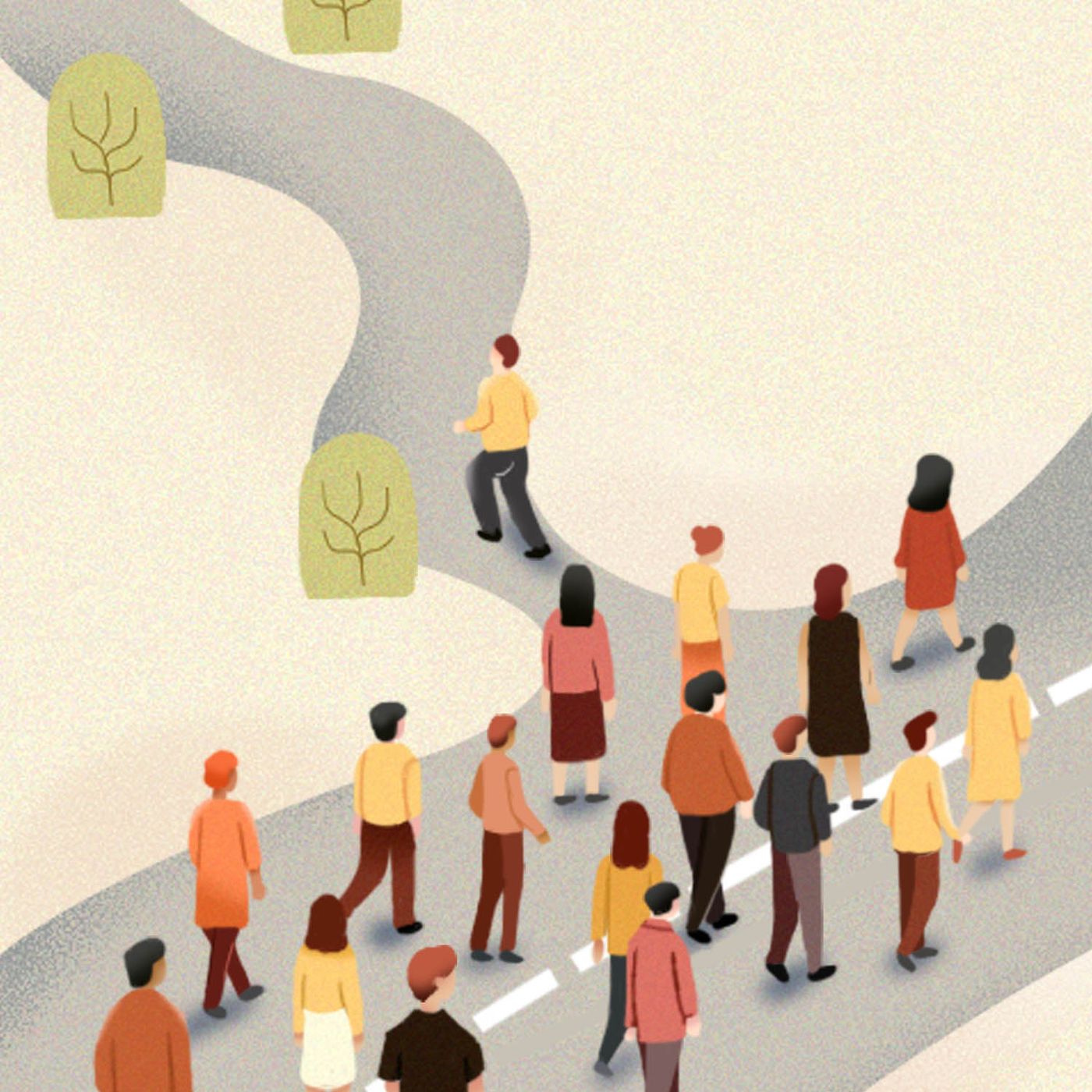
The Path to Personal Growth: Embracing The Road Less Traveled
Chapter 1:what is The Road Less Traveled about"The Road Less Traveled" is a self-help book written by psychiatrist M. Scott Peck. Published in 1978, the book explores various aspects of self-discipline, personal growth, and spiritual development. Peck introduces the idea that facing and solving life's problems requires effort and discipline, which he refers to as "the road less traveled." The book combines elements from psychology, spirituality, and philosophy to provide guidance on overcoming difficulties, embracing responsibility, and developing meaningful relationships. It challenges readers to confront their own unhealthy patterns and offers advice on building a fulfilling and authentic life.Chapter 2:Author of The Road Less TraveledM. Scott Peck was an American psychiatrist and author, best known for his book "The Road Less Traveled," published in 1978. Born on May 22, 1936, in New York City, Peck developed an interest in human psychology early on and pursued his education in the field. He graduated from Harvard University and received his medical degree from the Case Western Reserve University School of Medicine.Dr. Peck's breakthrough came with the release of "The Road Less Traveled," which became an instant success and stayed on The New York Times bestseller list for over a decade. The book offers a powerful exploration of personal growth and self-discipline, with an emphasis on the importance of taking responsibility for one's own life."The Road Less Traveled" gained attention for its unique perspective on spiritual growth, blending psychology and spirituality to encourage readers to confront life's challenges and develop healthier relationships. Peck's work often focused on peeling back the layers of human nature, exploring issues such as love, discipline, and the importance of truth.Apart from "The Road Less Traveled," M. Scott Peck wrote several other notable books, including "People of the Lie" and "The Different Drum: Community Making and Peace." He continued to write and work as a psychiatrist, gaining recognition for his insights into human behavior and his ability to bridge gaps between psychology and spirituality. M. Scott Peck's contributions to the field of psychology and personal growth continue to impact countless individuals seeking self-improvement and a deeper understanding of themselves and their relationships. Despite his passing on September 25, 2005, his work remains influential and well-regarded in the field of psychology.Chapter 3:why is The Road Less Traveled worth reading"The Road Less Traveled" by M. Scott Peck is worth reading for several reasons:Psychological Growth: The book explores the concept of personal development and psychological growth. Peck argues that the path to self-discovery involves confronting and overcoming challenges, and discusses different tools and techniques to facilitate this process. Readers seeking personal growth and a better understanding of themselves will find valuable insights in this book.Emotional and Mental Well-being: Peck delves into the importance of emotional and mental well-being, emphasizing the significance of self-discipline, delayed gratification, and taking responsibility for our own lives. By addressing common issues such as mental health, relationships, and spirituality, the book provides practical advice and guidance to improve one's emotional well-being.Spiritual Exploration: While "The Road Less Traveled" is not explicitly a religious book, it touches upon spiritual themes and incorporates insights from different spiritual traditions. Peck encourages readers to explore and question their beliefs, inviting them to embark on a spiritual journey regardless of their specific religious background. This approach resonates with those searching for a more profound understanding of life's meaning and purpose.Focus on Love: Love, in its various forms, is a central theme throughout the book. Peck explores the complexities of love in relationships, addressing the challenges of intimacy, commitment, and vulnerability. By emphasizing the importance of love, trust, and empathy, the book offers valuable insights into developing healthier and more fulfilling relationships.Engaging Writing Style: Peck’s writing style is accessible, engaging, and often combines personal experiences with psychological theory. This blend of personal anecdotes and professional expertise makes the book relatable and thought-provoking. Readers will find themselves drawn into the narrative and able to apply the concepts to their own lives.Overall, "The Road Less Traveled" offers a comprehensive guide to personal growth, emotional well-being, and spiritual exploration. Whether you are seeking self-improvement, a deeper understanding of relationships, or a new perspective on life, this book provides valuable insights and practical advice.Chapter 4: Books like The Road Less Traveled"Man's Search for Meaning" by Viktor E. Frankl"When Things Fall Apart: Heart Advice for Difficult Times" by Pema Chödrön"The Alchemist" by Paulo Coelho"The Four Agreements: A Practical Guide to Personal Freedom" by Don Miguel Ruiz"The Power of Now: A Guide to Spiritual Enlightenment" by Eckhart Tolle
10:0714/10/2023

The Art of Embracing Chaos: Unraveling the Antifragile
Chapter 1:what is the Antifragile aboutAntifragile: Things That Gain from Disorder is a book written by Nassim Nicholas Taleb. In the book, Taleb explores the concept of antifragility, which he defines as a condition that goes beyond mere resilience. He argues that certain systems, individuals, and organizations can actually benefit and grow stronger from shocks, volatility, and uncertainty.Taleb challenges the prevailing notions of fragility and stability, highlighting that many things in the world are not just robust or resilient but actively benefit from chaos and disorder. He examines various domains, such as economics, biology, psychology, and philosophy, to illustrate the principles of antifragility and how they can be applied to different aspects of life.Taleb presents his arguments through a combination of anecdotes, historical examples, and philosophical musings. He explores the consequences of interventionism, the role of randomness in human systems, and the importance of embracing uncertainty and variability.The book also delves into the concept of "black swan events," rare and unpredictable occurrences that can have significant impacts on society and individuals. Taleb argues that society should be prepared for such events and build systems and institutions that can benefit from them rather than being paralyzed by them.Overall, Antifragile is a thought-provoking exploration of how embracing and leveraging uncertainty and disorder can lead to a more robust and adaptable world. It challenges conventional thinking and offers insights into how individuals and societies can thrive in an unpredictable and ever-changing environment.Chapter 2:Author of the AntifragileNassim Nicholas Taleb is a Lebanese-American author, scholar, and former financial trader. He is best known for his book "Antifragile: Things That Gain from Disorder," which was published in 2012. Taleb's work explores the concepts of randomness, uncertainty, and probability in various fields, including finance, economics, and philosophy.Born on October 1, 1960, in Amioun, Lebanon, Taleb grew up in a culturally diverse environment and was exposed to different philosophies from an early age. He obtained his undergraduate degree in mathematics from the University of Paris and later pursued a career in finance, working as a trader in New York City.His breakthrough book, "Fooled by Randomness: The Hidden Role of Chance in Life and in the Markets," published in 2001, established him as a prominent thinker in the field of risk management and probability. However, it was "The Black Swan: The Impact of the Highly Improbable," published in 2007, that catapulted Taleb to international fame. In this book, he introduced the concept of a "black swan" event, which refers to an unpredictable event with significant consequences."Antifragile," widely considered as his magnum opus, expands upon the ideas explored in his previous works. Taleb argues that systems, whether technological, social, or financial, should not merely withstand or be resilient to shocks but rather thrive and benefit from them. He emphasizes the importance of embracing variability, uncertainty, and randomness to achieve robustness and long-term success.Taleb's writing style is known for its unconventional and contrarian approach, blending personal anecdotes, historical references, and mathematical insights to challenge conventional wisdom. His work has been highly influential and continues to provoke dialogues across different disciplines.Besides his writing, Taleb has taught at several prestigious universities and worked as a hedge fund manager. He has also been involved in public intellectual debates and is a popular public speaker. Known for his outspoken and sometimes controversial views, Taleb's contributions to the fields of probability, risk management, and the study of uncertainty have made him a highly regarded figure in the intellectual world.Chapter 3:why is the Antifragile worth readingAntifragile by Nassim Nicholas Taleb is worth reading for several reasons:Unique Perspective: Taleb introduces the concept of antifragility, which goes beyond resilience or robustness. He argues that some systems actually benefit and become stronger from shocks and volatility. This fresh perspective challenges conventional wisdom and provides a unique framework for understanding and navigating our unpredictable world.Practical Applications: Taleb’s ideas have practical applications in various domains, such as economics, finance, politics, healthcare, and personal decision-making. By understanding antifragility, readers can better adapt to uncertainty, mitigate risks, and capitalize on opportunities.Thought-Provoking Insights: The book is filled with thought-provoking insights and anecdotes that challenge common assumptions about stability and predictability. Taleb explores the detrimental effects of overprotecting systems and highlights the importance of embracing randomness and disorder to foster growth and innovation.Engaging Writing Style: Taleb’s writing style is engaging, witty, and accessible. He uses real-world examples, historical references, and personal experiences to illustrate his points, making the book enjoyable and relatable.Relevance to the Modern World: In an era characterized by increasing complexity, volatility, and uncertainty, the concepts in Antifragile are highly relevant. Whether you are interested in improving your personal decision-making or understanding the dynamics of global economies, Taleb’s insights provide valuable perspectives and strategies.Overall, Antifragile offers readers a unique and thought-provoking framework for understanding and thriving in our unpredictable world, making it a worthwhile read for anyone seeking to navigate uncertainty and embrace volatility.Chapter 4: Books like the AntifragileThe Black Swan: The Impact of the Highly Improbable by Nassim Nicholas Taleb - This book, also written by Taleb, explores the concept of unpredictable events that have profound consequences. It delves into the impact of randomness, uncertainty, and rare events on our lives and society.Skin in the Game: Hidden Asymmetries in Daily Life by Nassim Nicholas Taleb - In this book, Taleb examines the importance of having personal exposure and accountability for one's decisions and actions. He argues that individuals or institutions that do not have "skin in the game" often make poor choices and lack credibility.The Drunkard's Walk: How Randomness Rules Our Lives by Leonard Mlodinow - This book delves into the role of randomness and probability in our everyday lives. Mlodinow explores how randomness affects various aspects of life, including talent, success, and decision-making.
13:1113/10/2023
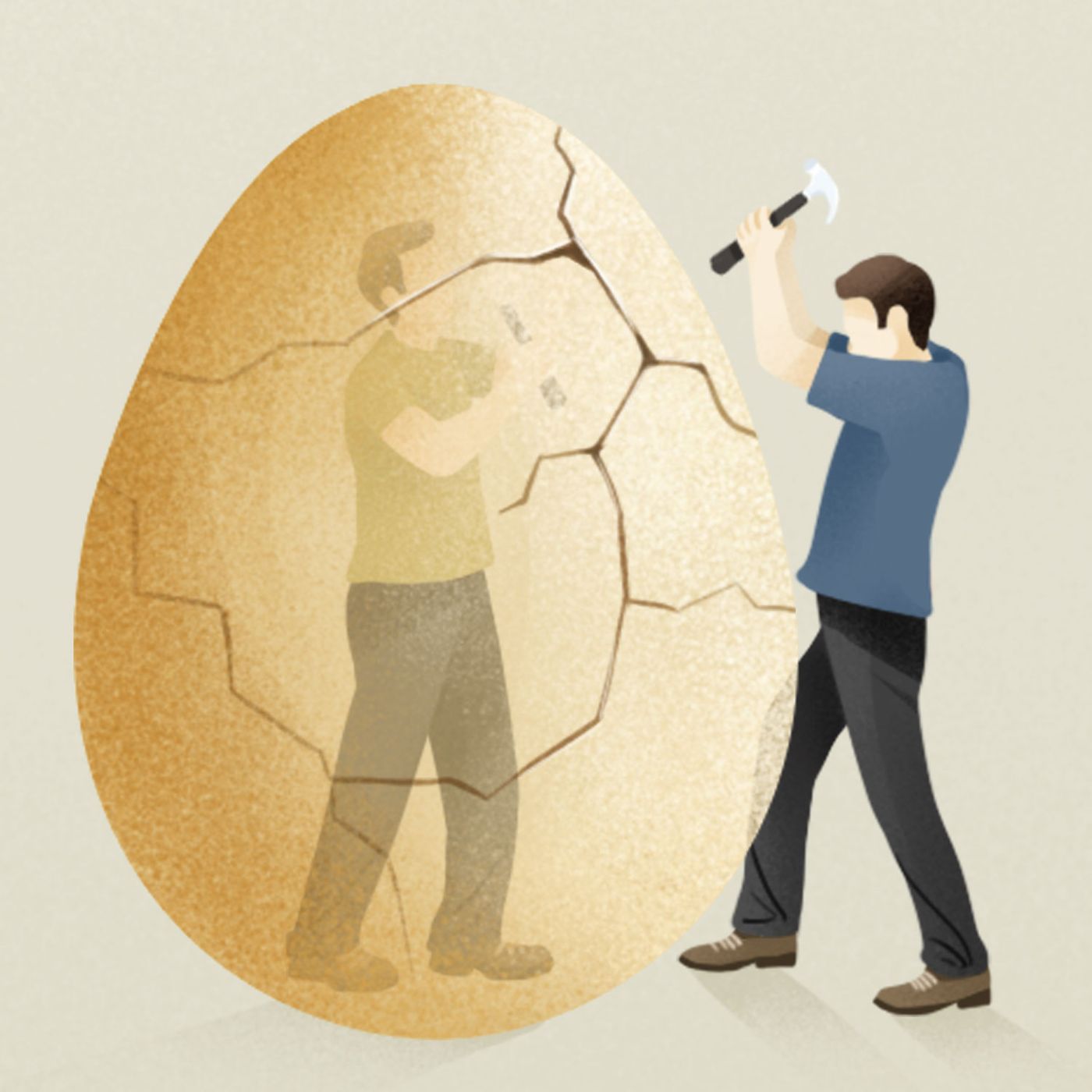
Upheaval: A Global Perspective on Societal Transformations
Chapter 1:what is the Upheaval about"Upheaval: How Nations Cope with Crisis and Change" is a book written by Jared Diamond. In this book, Diamond explores the factors that contribute to a nation's resilience or collapse in the face of crisis. He examines a range of historical case studies, focusing on nations such as Finland, Japan, Chile, and Germany, among others.Diamond delves into the experiences of these countries, examining how they coped with significant challenges such as civil wars, economic crises, and political upheaval. He identifies multiple key factors that determine a country's ability to adapt and recover from such crises, including national identity, political institutions, economic systems, and the willingness to confront difficult historical truths.By examining these different case studies, Diamond aims to draw lessons for individuals and nations facing their own crises. He highlights the importance of learning from historical events and emphasizes the need for introspection and adaptation to navigate periods of crisis successfully.Overall, "Upheaval" offers a broad perspective on the challenges nations face in times of crisis and the factors that contribute to their ability to recover and thrive.Chapter 2:Author of the UpheavalJared Diamond is an American scientist and author, best known for his works in the field of anthropology, geography, and evolutionary biology. He was born on September 10, 1937, in Boston, Massachusetts. Diamond is recognized for his multidisciplinary approach to studying human societies and their historical development.Diamond earned his bachelor's degree in anthropology and history from Harvard University in 1958. He continued his academic journey at the University of Cambridge, where he obtained a PhD in physiology in 1961. Throughout his career, he has held various prestigious positions, including professorship at UCLA and a visiting professorship at several universities worldwide. He is currently a professor of geography at the University of California, Los Angeles.Diamond gained international acclaim with his breakthrough book "Guns, Germs, and Steel: The Fates of Human Societies" published in 1997. The book explores the interplay between environmental factors and human history, attempting to explain why certain societies progressed while others remained stagnant. It won the Pulitzer Prize for General Nonfiction and became a bestseller, cementing Diamond's reputation as a prominent author and thinker.In his subsequent works, including "Collapse: How Societies Choose to Fail or Succeed," "The World Until Yesterday: What Can We Learn from Traditional Societies," and his most recent book, "Upheaval: Turning Points for Nations in Crisis," Diamond continues to explore the factors that shape the trajectories of different societies. "Upheaval," published in 2019, focuses on identifying significant crises faced by nations and offering insights into how they can learn from and overcome such challenges.Jared Diamond's contributions have had a profound impact on understanding human history, the impact of geography on society, and the importance of learning from the past. His works have been praised for their accessible and engaging style, making complex ideas accessible to a wide audience. He is often regarded as a leading scholar in his fields of interest and has received numerous accolades for his contributions to academia and popular science writing.Chapter 3:why is the Upheaval worth readingUpheaval by Jared Diamond is worth reading for several reasons:Broad Perspective: Jared Diamond is a renowned historian and author known for his ability to present complex historical events in a comprehensive and accessible manner. In Upheaval, he takes a broad perspective and examines a range of countries facing significant crises, such as Finland, Japan, Chile, and Australia. By exploring different countries and their responses to crises, Diamond provides readers with a global understanding of how nations cope and recover from upheavals.Historical Analysis: Diamond draws on historical analysis to explain how societies adapt and overcome challenges throughout history. By examining different case studies, he emphasizes the importance of learning from the past and highlights common patterns that can help societies navigate crises. This historical perspective offers valuable insights into the challenges faced by countries today, making Upheaval a relevant read for anyone interested in understanding current global affairs.Personal Reflection: In addition to historical analysis, Diamond incorporates personal anecdotes and reflections. He shares his experiences living in different countries and discusses how his own upbringing as well as interactions with locals shaped his understanding of their respective crises. These personal insights provide an intimate and relatable approach, allowing readers to connect with Diamond's observations on a deeper level.Practical Lessons: Upheaval serves as a guidebook for individuals and societies going through difficult times. Diamond outlines twelve factors that determine how nations deal with crises, including national identity, honest self-appraisal, and the ability to learn from other countries. These factors can be applied by individuals and leaders to navigate personal and societal challenges, making the book not just informative, but also practical and instructive.Overall, Upheaval by Jared Diamond is worth reading for its comprehensive analysis, historical perspective, personal reflections, and practical lessons. It offers a broad understanding of how societies cope with crises and provides valuable insights for individuals and nations facing their own challenges.Chapter 4: Books like the Upheaval"Collapse: How Societies Choose to Fail or Succeed" by Jared Diamond"Sapiens: A Brief History of Humankind" by Yuval Noah Harari"The Road to Unfreedom: Russia, Europe, America" by Timothy Snyder
13:1913/10/2023

Farewell to the Shadows: The Long Goodbye by Raymond Chandler
Chapter 1:what is The Long Goodbye aboutThe Long Goodbye is a detective novel written by Raymond Chandler and first published in 1953. The story follows the private detective Philip Marlowe as he investigates the case of his friend Terry Lennox, who has been accused of murdering his wife. Marlowe attempts to prove Terry's innocence and uncovers a web of deception, corruption, and betrayal along the way.Set in Los Angeles during the 1950s, the novel delves into the dark underbelly of the city, involving issues such as organized crime, police corruption, and the power of wealth and influence. Marlowe encounters a range of characters, including eccentric millionaires, femme fatales, and crooked cops, as he navigates the complex and interconnected mysteries surrounding Terry's involvement and his own personal journey.The Long Goodbye showcases Chandler's signature writing style, characterized by his sharp dialogue, vivid descriptions, and gritty realism. It explores themes of loneliness, loyalty, and the loss of moral values in a corrupt society. As Marlowe unravels the layers of the case, the novel also raises questions about identity, obsession, and the blurred lines between truth and illusion.The Long Goodbye is widely regarded as one of Chandler's finest works and a classic of the hardboiled detective genre. It stands out for its intricate plot, atmospheric setting, and morally ambiguous characters, making it a quintessential example of Raymond Chandler's contribution to crime fiction.Chapter 2:Author of The Long GoodbyeRaymond Chandler was an American-British author and screenwriter, widely regarded as one of the greatest writers in the genre of detective fiction. He was born on July 23, 1888, in Chicago, Illinois, and passed away on March 26, 1959, in La Jolla, California.Chandler started his professional career as an oil company executive but eventually turned to writing at the age of 44. He became well-known for his hardboiled detective novels, featuring the iconic character Philip Marlowe. His writing style combined intricate plots, gritty realism, sharp dialogue, and a cynical view of society."The Long Goodbye," published in 1953, is one of Chandler's most acclaimed works. The novel follows Philip Marlowe as he gets entangled in a case involving a friend accused of murder, leading him into the dark underbelly of Los Angeles. Chandler's masterful storytelling and intricate exploration of corruption and betrayal make this novel a standout in the detective fiction genre.Chandler's works are recognized for their lasting impact on crime fiction and the noir aesthetic. His writing influenced countless authors, filmmakers, and even video game creators, shaping the hardboiled detective archetype that remains popular to this day. His sharp wit, atmospheric writing, and memorable characters continue to captivate readers and maintain his status as a literary legend.Chapter 3:why is The Long Goodbye worth readingThe Long Goodbye by Raymond Chandler is considered worth reading for several reasons:Unique Protagonist: The novel features Philip Marlowe, one of the most iconic and complex private detectives in literature. Marlowe's character is sharp, gritty, and possesses a dry wit, making him a compelling and enduring figure. Readers often find themselves enthralled by his charm, intelligence, and unyielding determination. Engaging Plot: The Long Goodbye presents a gripping and intricate storyline. Chandler's masterful storytelling introduces a web of intrigue, crime, and corruption that keeps readers on the edge of their seats. The novel expertly weaves together multiple plotlines, offering unexpected twists and turns.Noir Atmosphere: Chandler is renowned for his ability to create a vivid and atmospheric setting. The Long Goodbye is set in 1940s Los Angeles, which sets the stage for an atmospheric, noir-like experience. The descriptions of the city, with its dark underbelly and morally ambiguous characters, beautifully evoke a sense of time and place.Social Commentary: Beyond being a thrilling detective novel, The Long Goodbye delves into deeper societal issues. Chandler explores themes of corruption, betrayal, power dynamics, and the dark side of the American Dream. Through Marlowe's lens, readers gain insights into the complexities of human nature and the moral dilemmas faced in a corrupt society. Literary Merit: Chandler's writing style is often praised for its literary quality. He combines sharp dialogue, vivid imagery, and hard-boiled prose, creating a distinct and immersive writing style that is captivating for readers. The Long Goodbye showcases Chandler's skill at crafting poetic sentences and memorable quotes.Overall, The Long Goodbye is worth reading for its compelling protagonist, engrossing plot, atmospheric setting, social commentary, and literary merit. It continues to be celebrated as a classic in the crime fiction genre, offering readers an immersive and thought-provoking reading experience.Chapter 4: Books like The Long GoodbyeThe Big Sleep by Raymond Chandler: Another classic Raymond Chandler novel featuring private detective Philip Marlowe, struggling to solve a case involving blackmail, corruption, and murder.Farewell, My Lovely by Raymond Chandler: This book follows Marlowe as he becomes entangled in a web of deceit when he takes on a case to find a missing ex-convict's former girlfriend.The Postman Always Rings Twice by James M. Cain: A noir crime novel that explores themes of passion, murder, and betrayal. The story follows Frank Chambers, a drifter who becomes involved in a love affair turned deadly.The Maltese Falcon by Dashiell Hammett: Considered one of the greatest detective novels of all time, this book is about Sam Spade, a private detective investigating the murder of his partner while being pulled into a web of deception surrounding the mysterious Maltese Falcon.The Little Sister by Raymond Chandler: In this novel, Marlowe takes on a case for a young woman who is being blackmailed, which ultimately leads him into a dark world of Hollywood corruption.
12:5612/10/2023

The Unraveling Chaos: A High-Stakes Journey through the Meltdown
Chapter 1:what is the Meltdown about"Meltdown: Why Our Systems Fail and What We Can Do About It" is a book written by Chris Clearfield and András Tilcsik. It explores the underlying causes and patterns of failures in complex systems and provides insights into how these failures can be prevented.The book investigates a wide range of real-world disasters, accidents, and crises, such as the Three Mile Island nuclear meltdown, the Deepwater Horizon oil spill, the 2008 financial crisis, and more. By conducting in-depth research and interviews, the authors analyze the factors that contribute to these failures, including human error, organizational culture, cognitive biases, and flawed designs.Clearfield and Tilcsik argue that many of these system failures are not isolated incidents, but rather the result of similar underlying issues and patterns. They identify concepts such as tight coupling, complexity, and psychological factors that often lead to catastrophic events. The authors also emphasize the importance of learning from these failures to improve system design and prevent future meltdowns."Meltdown" offers practical strategies and solutions for organizations and individuals to avoid or mitigate system failures. It encourages a systemic approach to risk management, emphasizes the need for diversity of perspectives, highlights the importance of open and effective communication, and suggests redesigning systems to promote resilience.Overall, "Meltdown" provides a thought-provoking and compelling analysis of system failures, offering valuable insights for professionals in various fields, including engineering, finance, healthcare, and more.Chapter 2:Author of the MeltdownChris Clearfield is a writer, speaker, and expert in complex systems and risk management. He is the co-author of the bestselling book "Meltdown: Why Our Systems Fail and What We Can Do About It," along with András Tilcsik.Clearfield has a background in engineering and finance, which gives him a unique perspective on understanding and analyzing complex systems in various industries. He has conducted extensive research and provided consulting services to organizations across the globe, helping them identify and mitigate risks associated with their systems.Through their collaboration, Clearfield and Tilcsik explore the concept of failure in systems and how it can lead to catastrophic consequences. In their book "Meltdown," they delve into real-world examples from industries like finance, aviation, and technology to illustrate why even the most advanced systems can fail.Their work sheds light on the common underlying causes of system failures, such as complexity, interconnectedness, and a lack of transparency. They also emphasize the importance of building resilience into our systems to prevent and recover from failures effectively.Chris Clearfield's expertise and András Tilcsik's academic background in strategy and organizational behavior together make them a formidable duo in the field of system failure analysis. Their insights and recommendations have helped organizations enhance their risk management practices and develop more resilient systems.In conclusion, Chris Clearfield is an accomplished writer and expert in complex systems and risk management, co-authoring the influential book "Meltdown" alongside András Tilcsik. Their work provides valuable insights into understanding and preventing failures in various industries, equipping organizations with the knowledge to build more resilient systems.Chapter 3:why is the Meltdown worth readingMeltdown by Chris Clearfield and András Tilcsik is worth reading for several reasons:Insightful analysis: The book offers a compelling analysis of major disasters and system failures, exploring the underlying causes and common patterns that lead to these catastrophic events. By examining case studies from diverse fields like finance, aviation, and technology, the authors uncover valuable insights into how small, unexpected glitches can snowball into large-scale meltdowns.Engaging storytelling: Although the topic of system failures may seem technical and dry, Meltdown is written in a way that makes it accessible and engaging for all readers. The authors use real-life stories and anecdotes to illustrate their points, making the book more relatable and interesting.Lessons for personal and organizational improvement: The book not only highlights the causes of meltdowns but also provides strategies and techniques to prevent them. Readers can learn how to better recognize and respond to failures in their personal and professional lives, helping them to avoid making the same mistakes.Cross-disciplinary approach: Meltdown draws from a wide range of industries and case studies, providing a diverse perspective on system failures. This interdisciplinary approach allows readers to see commonalities and patterns across different sectors, expanding their understanding of meltdowns and their implications. Timely and relevant: In today's complex and interconnected world, meltdowns and system failures continue to occur with increasing frequency. By understanding the root causes and mechanisms behind these failures, readers can be better prepared to navigate and anticipate potential risks in their own lives.Overall, Meltdown is worth reading for anyone interested in understanding the underlying causes and consequences of major disasters, and for those seeking practical strategies to prevent future meltdowns.Chapter 4: Books like the Meltdown"The Black Swan: The Impact of the Highly Improbable" by Nassim Nicholas Taleb - This book explores the concept of rare and unpredictable events and their profound impact on society and individual lives. It delves into the domains of finance, economics, and natural disasters, similar to "Meltdown.""Thinking, Fast and Slow" by Daniel Kahneman - Kahneman, a Nobel laureate, explores the two systems of thinking that govern human decision-making: the intuitive and the analytical. He discusses how biases and cognitive errors can lead to catastrophic consequences, touching upon similar themes of human fallibility as "Meltdown.""The Big Short: Inside the Doomsday Machine" by Michael Lewis - This non-fiction book explores the housing bubble that led to the 2008 financial crisis. It delves into the story of how a few insightful investors saw the impending disaster and bet against the market, similar to the investigation of system failures in "Meltdown."
11:4212/10/2023
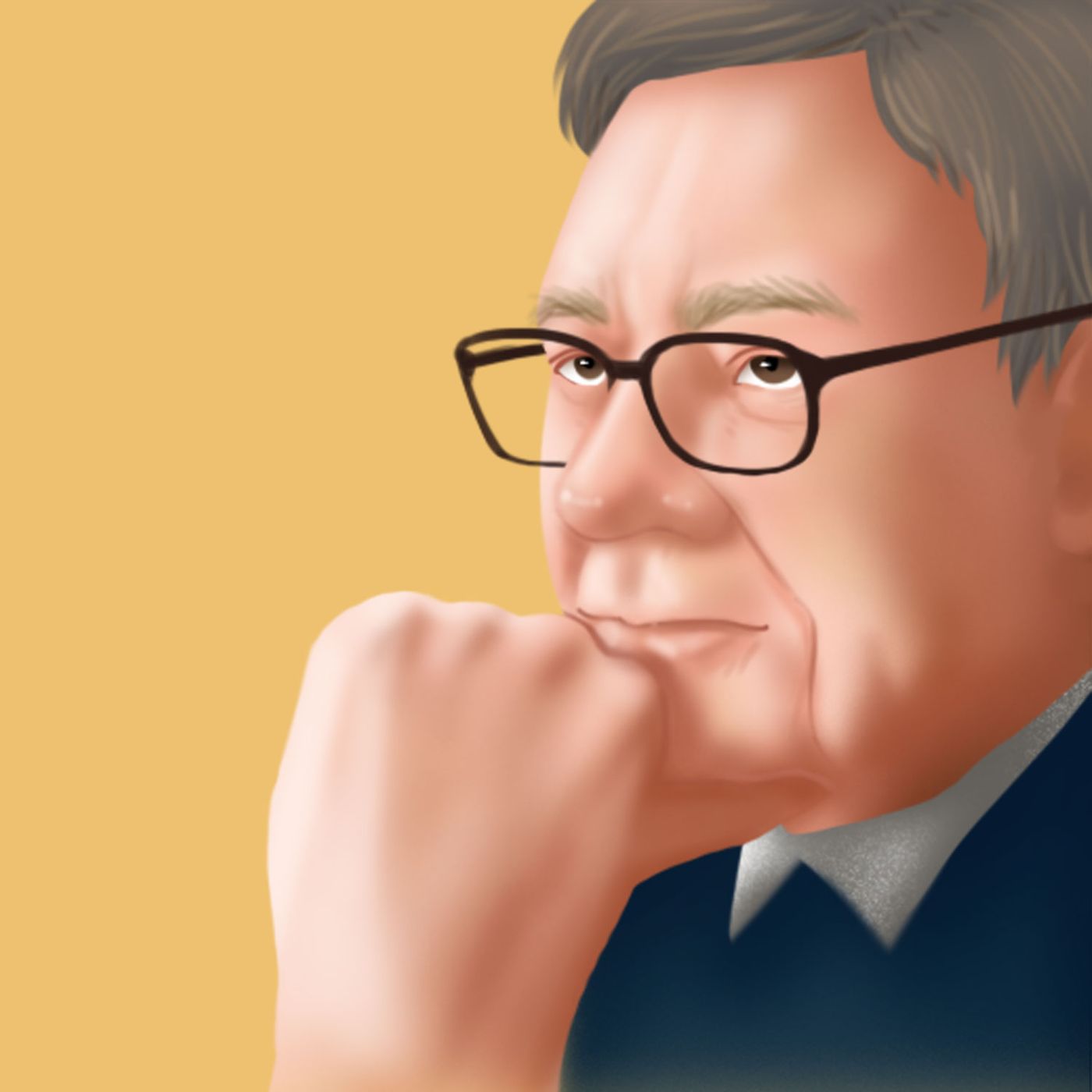
The Oracle of Omaha: Exploring the Life and Strategies of Warren Buffett
Chapter 1:what is the Buffett about"Buffett: The Making of an American Capitalist" by Roger Lowenstein is a biography that explores the life of Warren Buffett, one of the most successful investors of all time. The book delves deep into Buffett's early years, his approach to investing, and the principles that have guided his career.Lowenstein begins by tracing Buffett's childhood in Omaha, Nebraska, and his early fascination with stocks and investing. The author then provides insights into Buffett's time at Columbia Business School, where he studied under Benjamin Graham, a renowned value investor. Lowenstein discusses how Graham's ideas influenced Buffett's investment philosophy and shaped his approach to finding undervalued stocks.The book also covers the establishment of Buffett's investment partnership in the 1950s and his subsequent transformation into a full-time investor. Lowenstein examines Buffett's unique investing strategies, such as his emphasis on long-term value and his avoidance of speculative investments. He details Buffett's methodology, which involves thoroughly analyzing companies, understanding their businesses, and investing in those with enduring competitive advantages.Lowenstein delves into pivotal moments in Buffett's career, such as his acquisition of Berkshire Hathaway, a textile company that he transformed into a diversified conglomerate. The author also explores Buffett's involvement in various industries, including insurance, energy, and consumer goods.In addition to analyzing Buffett's investments, the book sheds light on his personal life and values. Lowenstein highlights Buffett's frugality, humility, and commitment to integrity. The author illustrates how these qualities have not only shaped Buffett's investment decisions but also his philanthropic endeavors, as he has pledged a significant portion of his wealth to philanthropic causes.Overall, "Buffett" provides a comprehensive and insightful account of the life and investment philosophy of Warren Buffett, offering readers a deeper understanding of his success and the principles behind his approach to investing.Chapter 2:Author of the BuffettRoger Lowenstein is an American financial journalist and author who is known for his insightful and in-depth writing on business and investing. He attained widespread recognition for his biography on legendary investor Warren Buffett, titled "Buffett: The Making of an American Capitalist," which was published in 1995.Lowenstein's book on Buffett provides a detailed account of the life and investment strategies of the renowned billionaire. It delves into Buffett's early years, his approach to investing, and his notable business decisions. The book offers readers a comprehensive understanding of the principles and philosophy behind Buffett's investing success.In addition to his work on Buffett, Lowenstein has written several other acclaimed books that cover a range of financial topics. These include "When Genius Failed: The Rise and Fall of Long-Term Capital Management," which chronicles the dramatic collapse of a prominent hedge fund, and "While America Aged: How Pension Debts Ruined General Motors, Stopped the NYC Subways, Bankrupted San Diego, and Loom as the Next Financial Crisis."Lowenstein's writing showcases his ability to explore complex financial concepts while also engaging readers with captivating storytelling. His meticulous research and thorough analysis have earned him praise from both the financial industry and general readership, solidifying his reputation as a respected author and authority on investment and finance.Chapter 3:why is the Buffett worth reading"Buffett" by Roger Lowenstein is worth reading for several reasons:Comprehensive Biography: The book provides a detailed and well-researched biography of Warren Buffett, one of the most successful investors of all time. It covers his life from childhood to present, including his childhood influences, early business ventures, investment strategies, and philanthropic efforts.Insight into Buffett's Investment Philosophy: Lowenstein offers deep insights into Buffett's investment philosophy and how he developed his approach to value investing. The book delves into his strategies, including his focus on buying undervalued stocks of companies with sustainable competitive advantages, his long-term mindset, and his aversion to speculation.Lessons in Business and Investing: Reading about Buffett's life and the way he approaches business and investing can provide valuable lessons for readers. Lowenstein explores Buffett's successes and failures, highlighting key principles that have guided him throughout his career. These lessons can be applied by individuals who are interested in improving their own investment strategies or gaining insights into successful business practices.Engaging Writing Style: Lowenstein is known for his ability to make complex financial topics accessible to a wide range of readers. He keeps the narrative engaging by blending personal anecdotes, historical context, and financial analysis. The book is written in a clear and accessible manner, making it easy to understand Buffett's story and strategies.Balanced Perspective: The author does not shy away from discussing both the strengths and weaknesses of Buffett as an investor and as a person. Lowenstein provides a balanced perspective, addressing potential criticisms and controversies, thus offering a nuanced understanding of Buffett's life and career.Overall, "Buffett" by Roger Lowenstein is worth reading for anyone interested in learning about the life, investment strategies, and philosophies of one of the world's most successful investors.Chapter 4: Books like the Buffett"The Snowball: Warren Buffett and the Business of Life" by Alice Schroeder"The Warren Buffett Way: Investment Strategies of the World's Greatest Investor" by Robert G. Hagstrom"Common Stocks and Uncommon Profits and Other Writings" by Philip Fisher "The Intelligent Investor: The Definitive Book on Value Investing" by Benjamin Graham"Beating the Street" by Peter Lynch
10:2411/10/2023
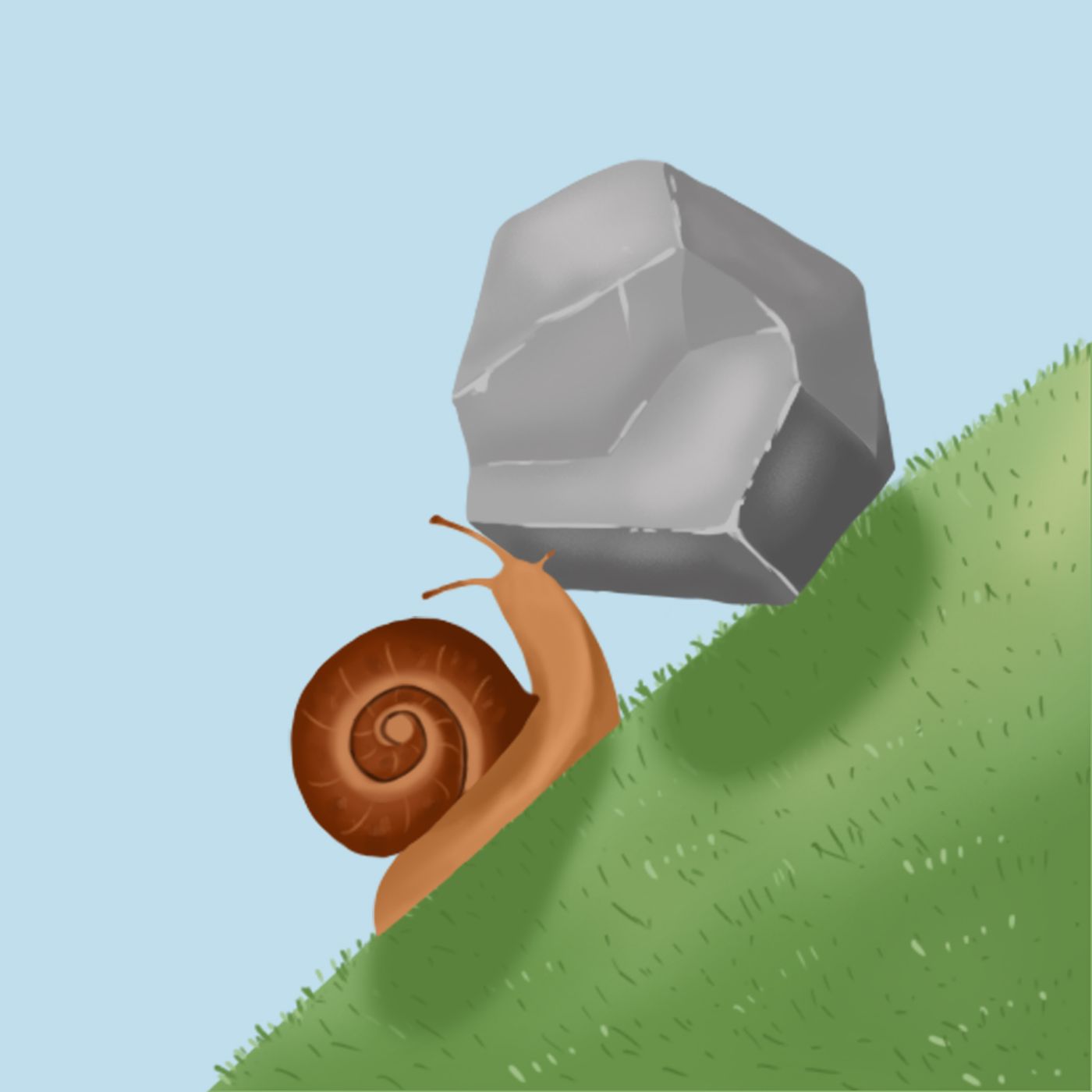
The Willpower Blueprint: Unlocking the Science of Self-Control
Chapter 1:what is the willpower about"Willpower: Rediscovering the Greatest Human Strength" is a book written by Roy F. Baumeister, a social psychologist, and John Tierney, a science writer. It explores the concept of willpower and provides insights into how to enhance and utilize it effectively in various aspects of life.The authors argue that willpower is not an innate characteristic but rather a finite mental resource that can be depleted. They draw upon extensive research and studies to explain how willpower works and its significance in achieving personal and professional goals.Baumeister and Tierney discuss various aspects related to willpower, including its role in self-control, decision-making, addiction, achieving long-term success, managing time and stress, and improving relationships. They provide practical strategies and techniques to strengthen willpower and overcome common challenges.The book also addresses common misconceptions about willpower, such as viewing it as a fixed trait or relying solely on motivation. It emphasizes the importance of understanding and managing one's mental energy to make more effective choices and maintain self-discipline.Overall, "Willpower" presents a comprehensive exploration of the concept, backed by scientific research and real-life examples. It offers practical advice and strategies for readers to harness their willpower and achieve their personal and professional goals.Chapter 2:Author of the willpowerRoy F. Baumeister is a well-known social psychologist and a professor of psychology at Florida State University. He has made significant contributions in the field of self-control and willpower, exploring how individuals regulate their thoughts, emotions, and behaviors to achieve long-term goals. Baumeister is particularly known for his research on ego depletion, which is the idea that self-control draws from a limited resource that can be depleted with use.His work has been influential in understanding various aspects of human behavior, such as decision-making, impulse control, addiction, and achievement motivation. Baumeister has authored numerous papers and co-authored several books, including "Willpower: Rediscovering the Greatest Human Strength" with John Tierney.John Tierney, on the other hand, is a science journalist and author who has written for The New York Times and co-authored the book "Willpower" with Roy F. Baumeister. Tierney brings a unique perspective to the topic of willpower, blending research with personal anecdotes and practical advice. His writing style appeals to both academics and general audiences, making complex psychological concepts accessible and engaging.As co-authors of "Willpower," Baumeister and Tierney combine their expertise to provide insights into how self-control works, why it matters, and how it can be strengthened. Their collaboration offers a comprehensive understanding of willpower as a fundamental element of human behavior and its implications for personal development and success.Chapter 3:why is the willpower worth readingWillpower: Rediscovering the Greatest Human Strength" by Roy F. Baumeister and John Tierney is worth reading for several reasons:Groundbreaking Research: Baumeister and Tierney bring together extensive research from various disciplines, including psychology, neuroscience, sociology, and economics, to provide a comprehensive understanding of willpower. They present the latest findings in an accessible manner, making it an informative read for both professionals and those interested in the topic.Practical Insights: The authors delve into how willpower affects our lives, covering areas such as self-control, decision-making, impulse control, productivity, and personal success. They offer practical strategies and techniques to enhance willpower, enabling readers to apply their insights to their personal and professional lives. Engaging Writing Style: Baumeister and Tierney seamlessly weave together scientific research, real-life examples, and anecdotes in an engaging manner. Their writing style makes the book easy to read and understand, making it accessible for a wide range of audiences. Debunking Myths: The authors challenge common misconceptions about willpower, such as the notion that it is an innate trait or that it is limitless. They provide evidence-based explanations, leading readers to a more accurate understanding of willpower and its limitations.Practical Applications: "Willpower" provides practical guidance for individuals looking to improve their willpower and self-control. The authors provide actionable strategies and techniques, making it a valuable resource for those seeking personal growth and self-improvement.Overall, "Willpower" offers a well-researched and engaging exploration of the science behind willpower, providing practical advice and insights. Whether you are interested in personal development, psychology, or understanding human behavior, this book is a worthwhile read.Chapter 4: Books like the willpower"The Power of Habit: Why We Do What We Do in Life and Business" by Charles Duhigg"Thinking, Fast and Slow" by Daniel Kahneman"Mindset: The New Psychology of Success" by Carol S. Dweck "Influence: The Psychology of Persuasion" by Robert Cialdini "The Marshmallow Test: Mastering Self-Control" by Walter Mischel
14:2211/10/2023
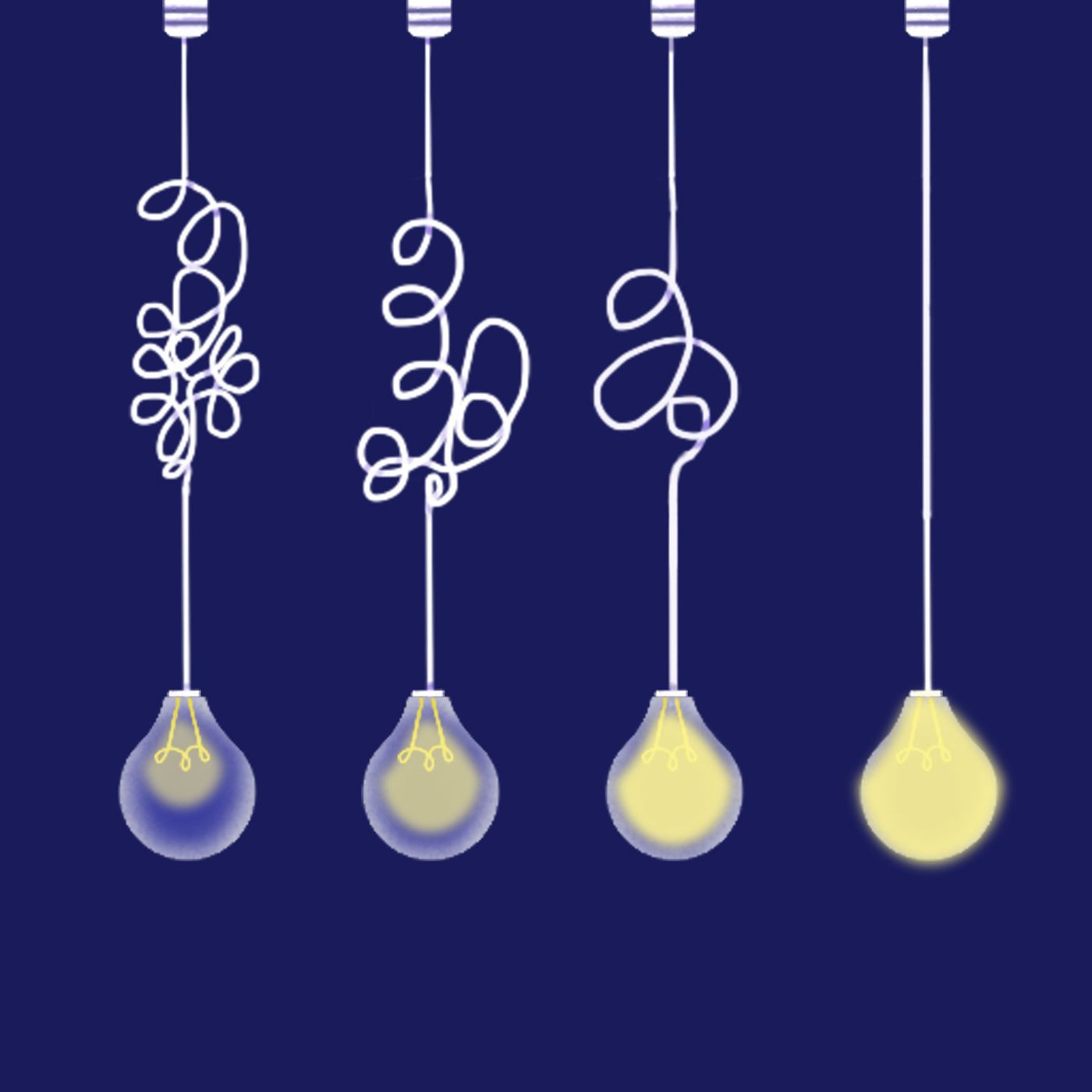
The Art of Priority: Mastering Essentialism for a Purposeful and Simplified Life
Chapter 1:what is the Essentialism about"Essentialism: The Disciplined Pursuit of Less" by Greg McKeown is a self-help book that focuses on the concept of essentialism and how it can enhance productivity and personal fulfillment. McKeown defines essentialism as the disciplined pursuit of less but better, emphasizing the importance of identifying what is truly essential and eliminating non-essential tasks, responsibilities, and commitments.The book argues that many people fall into the trap of trying to do it all, saying yes to everything, and spreading themselves too thin, which ultimately leads to burnout, stress, and unfulfilled potential. McKeown explores the mindset shifts, strategies, and habits necessary to prioritize and focus on what really matters.Through a combination of personal anecdotes, case studies, and practical advice, McKeown provides a framework for readers to embrace essentialism in all aspects of life – from work to relationships to personal development. He encourages readers to set clear boundaries, learn how to say no gracefully, make deliberate choices aligned with their values, and spend more time on what brings joy and fulfillment.By adopting essentialism, McKeown argues that individuals can have greater clarity, increased effectiveness, and a greater sense of satisfaction in their lives. Ultimately, the book aims to help readers shift their mindset, redefine success, and live a more intentional and fulfilling life.Chapter 2:Author of the EssentialismGreg McKeown is an accomplished author and public speaker known for his book "Essentialism: The Disciplined Pursuit of Less." He is widely recognized for his expertise in the areas of productivity, time management, and leadership. McKeown's book has gained international acclaim as a guide to help individuals and organizations focus on what truly matters and eliminate non-essential distractions in order to achieve greater clarity and success.Through his writing and speaking engagements, McKeown advocates for the concept of essentialism, which emphasizes the importance of ruthless prioritization and saying no to non-essential tasks and commitments. His approach encourages individuals to make intentional choices and invest their time and efforts in activities that align with their core values and goals.McKeown has shared his insights with audiences at renowned organizations such as Apple, Google, and Facebook, and has been featured in prominent media outlets including The New York Times, Harvard Business Review, and NPR. With his practical and thought-provoking ideas, Greg McKeown continues to empower individuals and organizations to lead more meaningful and fulfilling lives by focusing on what truly matters.Chapter 3:why is the Essentialism worth readingEssentialism by Greg McKeown is worth reading for several reasons:It provides a powerful framework for focusing on what truly matters: In a world filled with endless options and demands, Essentialism helps readers cut through the noise and focus on the few things that are truly important. McKeown's ideas and strategies help individuals identify and prioritize their essential goals, tasks, and relationships, enabling them to make a significant impact in their personal and professional lives.It offers practical techniques and actionable advice: Unlike many self-help books that are heavy on theory but light on practicality, Essentialism provides tangible techniques and actionable steps for implementing the principles discussed. McKeown offers practical advice on how to say "no" gracefully, how to prioritize effectively, and how to eliminate non-essential activities to make room for what truly matters.It challenges conventional wisdom: McKeown questions the prevailing notions of success and productivity, challenging readers to rethink their approaches. By shedding light on the traps of busyness and the "more is more" mentality, Essentialism forces readers to question their habits and make intentional choices in line with their values and goals.It emphasizes the importance of self-care: Essentialism goes beyond professional productivity and success; it recognizes the significance of self-care and personal well-being. McKeown emphasizes the need to take care of oneself and prioritize activities that recharge and rejuvenate, enabling individuals to sustain their focus and efforts in the long run. It shares inspiring stories and examples: McKeown weaves inspiring real-life stories and examples throughout the book to illustrate the impact of essentialism. These stories add depth and relatability to the concepts, making the book engaging and motivating to read.Overall, Essentialism by Greg McKeown is worth reading as it offers a fresh perspective on prioritization, productivity, and personal well-being. It provides actionable steps, challenges existing beliefs, and offers valuable insights that can help readers make meaningful changes in their lives.Chapter 4: Books like the Essentialism"The Power of Less: The Fine Art of Limiting Yourself to the Essential in Business and in Life" by Leo Babauta"The 4-Hour Workweek: Escape 9-5, Live Anywhere, and Join the New Rich" by Timothy Ferriss"Deep Work: Rules for Focused Success in a Distracted World" by Cal Newport "The ONE Thing: The Surprisingly Simple Truth Behind Extraordinary Results" by Gary Keller and Jay Papasan "Atomic Habits: An Easy & Proven Way to Build Good Habits & Break Bad Ones" by James Clear
12:1210/10/2023
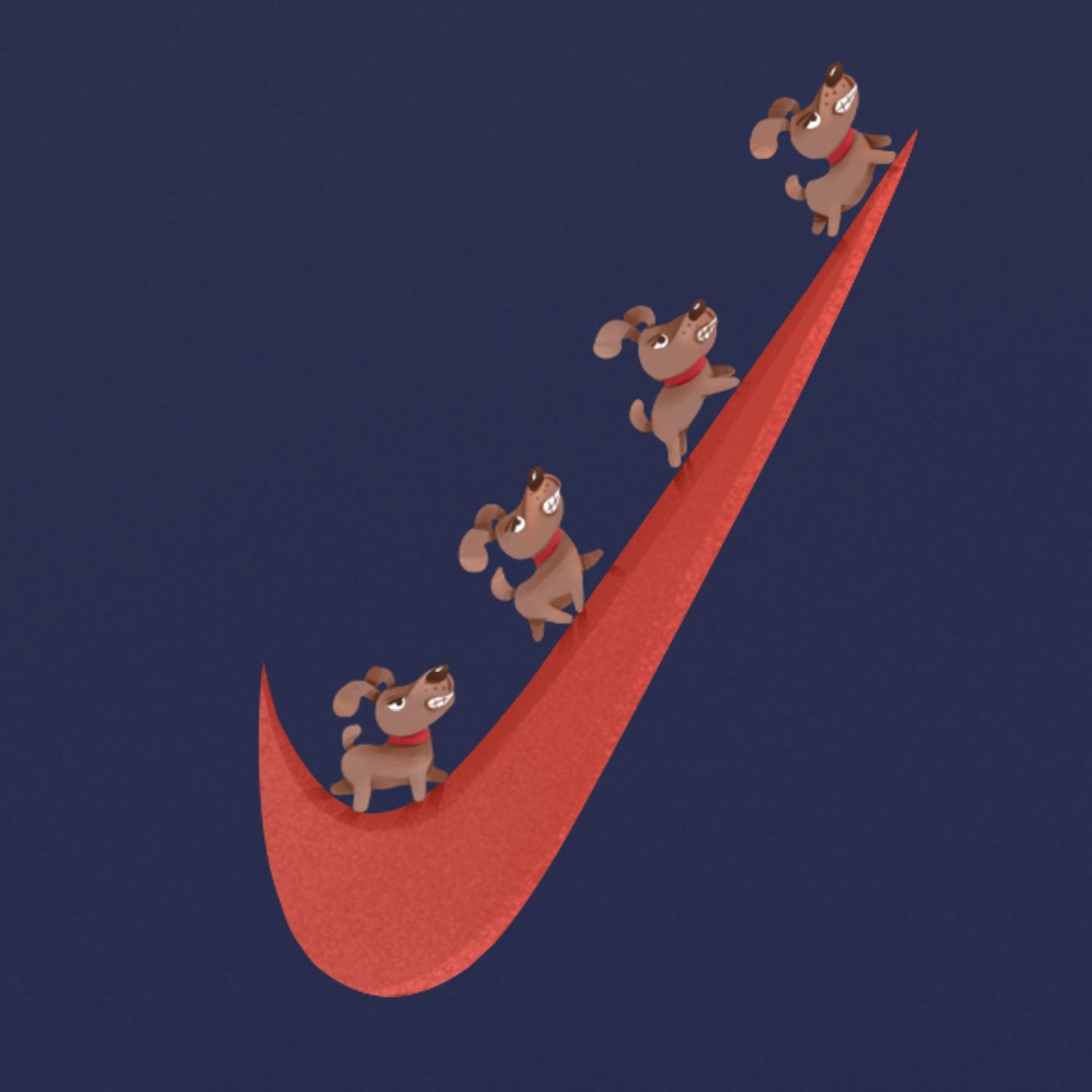
Running Towards Dreams: The Journey of Shoe Dog
Chapter 1:what is the Shoe Dog aboutShoe Dog: A Memoir by the Creator of Nike, written by Phil Knight, is a memoir that chronicles the journey of the author in founding and building the renowned sportswear company Nike.The book begins with Knight's early days as a fresh business graduate and his idea of importing high-quality, low-cost running shoes from Japan to sell in the United States. Knight recounts the challenges he faced in getting his venture off the ground and how he started the company with minimal resources and a tight-knit team. He also explores his deep passion for running and his belief in the potential of sports.As the story unfolds, Shoe Dog reflects on the numerous hurdles Knight encountered, including financial setbacks, legal battles, and navigational difficulties in dealing with suppliers and competitors. It highlights the determination, resilience, and resourcefulness Knight exhibited in building Nike from the ground up.Moreover, the memoir delves into the personal struggles Knight faced on his entrepreneurial journey, including moments of self-doubt and strained relationships. It provides glimpses into his ambitious mindset, his relentless pursuit of success, and the sacrifices he made along the way.Shoe Dog not only explores the business aspect but also delves into the friendships and partnerships that were pivotal in the development of Nike. It showcases the close relationships Knight fostered with individuals like his co-founder Bill Bowerman and the athletes who endorsed Nike, such as Steve Prefontaine and Michael Jordan.Overall, Shoe Dog gives readers an intimate look into the creation and growth of one of the world's most recognizable brands. It provides insights about the challenges and triumphs of entrepreneurship, the power of a vision, and the relentless pursuit of one's dreams.Chapter 2:Author of the Shoe Doghil Knight is an American entrepreneur, philanthropist, and author. He is best known as the co-founder and former CEO of Nike, Inc., one of the world's largest and most renowned sportswear companies. Born on February 24, 1938, in Portland, Oregon, Knight was passionate about sports from a young age.Knight attended the University of Oregon, where he ran track and field. It was during his time at university that he came up with the idea of importing high-quality, low-cost running shoes from Japan to fulfill the needs of American runners. In 1964, with a loan from his father, he co-founded Blue Ribbon Sports (BRS) with his former track coach, Bill Bowerman.Under Knight's leadership, BRS grew and eventually transformed into Nike, Inc. in 1971. The name "Nike" was inspired by the Greek goddess of victory, and it perfectly encapsulated the brand's mission to empower and inspire athletes worldwide. Despite facing numerous challenges and setbacks along the way, Knight's determination and innovative mindset pushed Nike to become a global powerhouse in the sportswear industry.After stepping down as CEO in 2004, Knight focused on his philanthropic efforts and invested in various ventures. In 2016, he released his memoir, "Shoe Dog: A Memoir by the Creator of Nike," providing an intimate insight into his journey from founding Nike to building it into one of the most recognizable brands globally. The book received critical acclaim for its honest and captivating storytelling, offering readers a behind-the-scenes look at the challenges, triumphs, and personal sacrifices Knight encountered throughout his entrepreneurial career.Beyond his professional achievements, Knight is also known for his significant contributions to society. He and his wife, Penny, have been deeply involved in various charitable initiatives, primarily in the fields of education, healthcare, and environmental conservation. Their philanthropic endeavors have had a lasting impact on numerous communities and organizations.Overall, Phil Knight's entrepreneurial spirit, determination, and innovative mindset have made him a highly influential figure in the business world. Through Nike and his memoir, "Shoe Dog," he has left a lasting legacy that continues to inspire aspiring entrepreneurs and athletes alike.Chapter 3:why is the Shoe Dog worth readingShoe Dog by Phil Knight is worth reading for several reasons:Inspirational story: The book offers an inspiring account of Phil Knight's journey as the co-founder and CEO of Nike. It chronicles how he started the company from scratch and navigated through countless challenges and setbacks. Knight's determination, resilience, and entrepreneurial spirit serve as a source of motivation for readers.Business insights: Shoe Dog provides valuable insights into the world of business, including the complexities of starting and running a company. Knight shares useful lessons about entrepreneurship, leadership, and decision-making, providing readers with a deeper understanding of the challenges that come with building and scaling a successful business.Sports and pop culture: Nike is not just a company; it is an iconic brand that has greatly influenced sports and pop culture. Shoe Dog delves into the history and evolution of Nike, giving readers a behind-the-scenes look at how the brand became a global phenomenon. It explores partnerships with athletes, marketing strategies, and the cultural impact of Nike's innovative products.Personal growth: The book offers personal growth opportunities as Knight openly discusses his own failures, doubts, and insecurities along the way. The story teaches readers about self-discovery, learning from mistakes, and taking risks. Knight's vulnerability in sharing his personal journey allows readers to reflect on their own aspirations and dreams.Engaging narrative: Shoe Dog is a well-crafted memoir that captivates readers with its engaging storytelling. Knight's writing style is honest, humorous, and reflective, making it an enjoyable read that keeps readers hooked from start to finish.Overall, Shoe Dog is worth reading for its inspiring story, valuable business insights, cultural impact, personal growth opportunities, and engaging narrative. It is a book that appeals to a wide range of readers, not just those interested in entrepreneurship or sports.Chapter 4: Books like the Shoe Dog"Start Something That Matters" by Blake Mycoskie"The Everything Store: Jeff Bezos and the Age of Amazon" by Brad Stone"Smartcuts: How Hackers, Innovators, and Icons Accelerate Success" by Shane Snow"The Lean Startup: How Today's Entrepreneurs Use Continuous Innovation to Create Radically Successful Businesses" by Eric Ries"Outliers: The Story of Success" by Malcolm Gladwell
11:4010/10/2023

The Power of Choice: Nudging Towards Better Decision-Making
Chapter 1:what is the Nudge about"Nudge: Improving Decisions About Health, Wealth, and Happiness" by Richard H. Thaler and Cass R. Sunstein is a book that explores the concept of a "nudge" and its potential to influence people's behavior towards making better choices.The authors argue that human beings often make irrational decisions due to cognitive biases and other factors, leading to negative outcomes in various areas of life, such as health, finance, and happiness. They propose the idea of a nudge, which refers to any small and subtle alteration in the context in which choices are made, aiming to guide individuals towards making better decisions without restricting their freedom of choice.Thaler and Sunstein provide numerous real-life examples of nudges, including default settings in retirement plans, placement of healthier foods in cafeterias, and personalized feedback on energy consumption. They outline different types of nudges, such as providing information, altering default options, or using social incentives, to help individuals make choices that align with their long-term goals and well-being.The book also discusses the ethical implications of nudges and addresses potential concerns regarding manipulation and paternalism. Thaler and Sunstein argue that carefully designed nudges can be morally acceptable and socially beneficial, as they can help people overcome their own biases and improve their lives without infringing upon their autonomy.Overall, "Nudge" presents an insightful perspective on human decision-making and offers practical suggestions for policy-makers, organizations, and individuals to implement nudges as a means to lead a healthier, wealthier, and happier life.Chapter 2:Author of the NudgeRichard H. Thaler is an economist and professor at the University of Chicago, known for his contributions to the field of behavioral economics. He was awarded the Nobel Prize in Economic Sciences in 2017 for his work in integrating psychology and economics. Thaler's primary focus is on understanding the systematic biases and irrational behavior that individuals often exhibit when making economic decisions. His research has shed light on how people's choices are influenced by factors such as social norms, cognitive limitations, and lack of self-control. Thaler's work has had a significant impact on policymaking, and he has advised governments and organizations on issues such as retirement savings, health decision-making, and consumer protection.Cass R. Sunstein is a legal scholar, professor, and author who has worked extensively on regulatory and constitutional law. He is a professor at Harvard Law School and has held various advisory positions in the U.S. government, including serving as the Administrator of the Office of Information and Regulatory Affairs under President Barack Obama. Sunstein is known for his influential book, "Nudge: Improving Decisions about Health, Wealth, and Happiness," co-authored with Richard H. Thaler. In "Nudge," Sunstein and Thaler explore how small changes in the way choices are presented can have significant impacts on people's behavior and decision-making. Their concept of "nudges" has gained widespread attention and has been applied in numerous policy domains to guide people towards making better choices without restricting their freedom of choice. Sunstein's work has been influential in interdisciplinary fields such as behavioral economics, psychology, and public policy.Chapter 3:why is the Nudge worth reading"Nudge: Improving Decisions About Health, Wealth, and Happiness" by Richard H. Thaler and Cass R. Sunstein is worth reading for several reasons:Insightful Exploration of Behavioral Economics: The book offers an accessible introduction to the field of behavioral economics and its implications for decision-making. It explains how individuals' behavior is influenced by biases and heuristics, and how these can be harnessed to steer individuals towards making better choices.Practical Applications: Thaler and Sunstein provide numerous real-life examples of how small changes in the way choices are presented can have a significant impact on decision-making. These "nudges" can be implemented by policymakers, employers, and other individuals or institutions to help people make better choices in various areas of life, such as saving for retirement, improving health habits, and contributing to environmental sustainability.Ethical Considerations: The authors also discuss the ethical implications of nudging and provide guidelines for responsible nudging. They emphasize the importance of transparency, choice, and promoting individual autonomy while still guiding people towards beneficial decisions. This ethical dimension adds an interesting perspective to the book, making it relevant for people interested in both economics and ethics.Engaging Writing Style: Thaler and Sunstein present their ideas in a clear and engaging manner, using storytelling techniques and practical examples to illustrate their points. The book is not overly technical, making it accessible to a wide audience, including those without an economics background.Influence on Policy and Public Discourse: "Nudge" has had a significant impact on policy discussions, both in academia and in government circles. The concept of nudging is now widely used in public policy to design interventions that help individuals make better choices. By reading "Nudge," readers can gain valuable insights into the principles and applications of nudging, which can be applied in various domains to solve societal challenges.Overall, "Nudge" is worth reading for its insights into behavioral economics, practical applications, ethical considerations, engaging writing style, and influence on policy and public discourse.Chapter 4: Books like the Nudge "Thinking, Fast and Slow" by Daniel Kahneman - Similar to "Nudge," this book explores the cognitive biases that affect our decision-making processes and how they can be harnessed to improve outcomes. "Predictably Irrational" by Dan Ariely - Ariely examines the irrational behaviors that influence our decision-making in various scenarios, providing insights into how certain nudges can be used to bring about positive change. "Influence: The Psychology of Persuasion" by Robert Cialdini - This book explores the principles of persuasion and how they can be used to influence people's decisions and behaviors, shedding light on the strategies behind effective "nudges." "The Undoing Project" by Michael Lewis - Lewis tells the story of the collaborative work between psychologists Daniel Kahneman and Amos Tversky, exploring the human tendency to make irrational decisions and the implications for economic theory. "Sway: The Irresistible Pull of Irrational Behavior" by Ori Brafman and Rom Brafman - This book delves into the psychological forces that lead us to make irrational decisions and provides strategies for overcoming these biases and making better choices.
11:2409/10/2023

The Enlightened Inventor: The Life and Legacy of Benjamin Franklin
Chapter 1:what is the Benjamin Franklin about"Benjamin Franklin" by Walter Isaacson is a biography that provides a comprehensive and detailed account of the life of one of America's founding fathers, Benjamin Franklin. The book explores Franklin's upbringing, his scientific discoveries, his role in politics, his contributions to the creation of the United States, and his later years as a diplomat. Isaacson portrays Franklin as a multifaceted individual, showcasing his intelligence, curiosity, wit, and impact on American society. The biography also delves into his personal life, including his relationships with his family and his struggles with his own ambition. Overall, the book offers a rich and insightful portrait of a remarkable figure in American history.Chapter 2:Author of the Benjamin FranklinWalter Isaacson is not the author of Benjamin Franklin. However, he is a highly acclaimed American author and biographer renowned for his in-depth and meticulously researched biographies of some of history's most influential figures. One of his notable works is "Benjamin Franklin: An American Life," which was published in 2003. In this comprehensive biography, Isaacson effectively portrays the life and achievements of Benjamin Franklin, one of America's founding fathers. Isaacson's book delves into Franklin's multifaceted personality, exploring his roles as a scientist, inventor, diplomat, writer, and one of the key architects of the United States.Chapter 3:why is the Benjamin Franklin worth reading"Benjamin Franklin" by Walter Isaacson is worth reading for several reasons:1) Thorough research: Walter Isaacson is known for his meticulous research and attention to detail. He offers readers a comprehensive and well-rounded view of Benjamin Franklin's life, featuring a wealth of information and insights.2) Engaging storytelling: Isaacson expertly weaves together the details of Franklin's life, creating a compelling narrative that keeps the reader engrossed. He brings Franklin's character and accomplishments to life, making the book an enjoyable and captivating read.3) Balanced perspective: Isaacson portrays Benjamin Franklin in a balanced manner, neither idolizing nor vilifying him. He presents Franklin's strengths and weaknesses, allowing readers to form their own judgments about the man and his contributions.4) Insight into American history and society: Benjamin Franklin played a crucial role in shaping the United States, both politically and intellectually. By studying his life, readers gain a deeper understanding of American history and the societal context in which Franklin thrived.5) Relevance for personal growth: Franklin was a polymath who excelled in various fields, including science, writing, and diplomacy. By delving into his life, readers can learn valuable lessons about self-improvement, curiosity, and ambition.Overall, "Benjamin Franklin" by Walter Isaacson is a worthwhile read because it offers a well-researched, engaging, and balanced portrayal of one of America's most influential founding fathers.Chapter 4: Books like the Benjamin Franklin "Leonardo da Vinci" by Walter Isaacson - Another biography by Isaacson, this time exploring the life and works of the famous Italian artist and inventor."Steve Jobs" by Walter Isaacson - A comprehensive biography of the co-founder of Apple Inc., Steve Jobs, which delves into his personal life, business achievements, and technological innovations."Einstein: His Life and Universe" by Walter Isaacson - Isaacson's biography of Albert Einstein, exploring his scientific achievements, personal life, and his impact on the world of physics. "The Wright Brothers" by David McCullough - A biography of the pioneering aviators, Wilbur and Orville Wright, who invented and built the world's first successful airplane."John Adams" by David McCullough - A detailed biography of the second president of the United States, John Adams, and his political career during the American Revolution and early years of the nation.
11:2609/10/2023

The Unconventional Insights of Freakonomics: Demystifying the Hidden Side of Economics
Chapter 1:what is the Freakonomics about"Freakonomics: A Rogue Economist Explores the Hidden Side of Everything" is a book written by economist Steven D. Levitt and journalist Stephen J. Dubner. The book investigates various social, economic, and cultural aspects of life by applying economic principles and data analysis. The authors analyze unconventional topics such as the impact of legalizing abortion on crime rates, the economics of drug dealing, the reasons behind successful parenting, and the importance of incentives in various contexts. They also explore the hidden side of real estate agents' motivations, whether or not sumo wrestlers cheat, and the influence of names on a person's life outcomes.The book challenges conventional wisdom and encourages readers to question prevailing narratives. Levitt and Dubner present economics as a tool to understand human behavior and explore how incentives shape decision-making. "Freakonomics" aims to make economics accessible and applicable to everyday life, offering a fresh perspective on social phenomena and human motivations.Chapter 2:Author of the FreakonomicsSteven D. Levitt and Stephen J. Dubner are the co-authors of the best-selling book Freakonomics and its sequels. Steven D. Levitt is an economist and professor at the University of Chicago. He is known for his unconventional and data-driven approach to studying various aspects of human behavior and social issues. Levitt's research often challenges conventional wisdom and explores the hidden incentives and motivations behind certain phenomena.Stephen J. Dubner, a journalist and author, collaborated with Levitt to bring his economic insights to a wider audience. Dubner's engaging storytelling and ability to communicate complex ideas in a compelling manner have made Freakonomics and its subsequent books incredibly popular among both general readers and experts from various fields.Together, Levitt and Dubner have developed a unique brand of economics that combines empirical analysis with storytelling, exploring topics such as cheating in sumo wrestling, the impact of legalized abortion on crime rates, and why drug dealers often live with their mothers. Through their work, they have challenged conventional thinking and introduced a fresh and fascinating perspective on economic and social phenomena.Chapter 3:why is the Freakonomics worth readingFreakonomics by Steven D. Levitt and Stephen J. Dubner is worth reading for several reasons:Insightful and Unique Perspectives: The book offers a fresh and unconventional approach to looking at various aspects of everyday life. It delves into a wide range of topics like crime rates, parenting techniques, and the impact of economics on unexpected areas, providing readers with unique insights and perspectives.Engaging Writing Style: The authors present complex ideas and concepts in a highly accessible and engaging manner, making it a captivating read for both economists and non-economists alike. The book is filled with intriguing stories, thought-provoking questions, and real-life examples, which help to make the content relatable and interesting.Data-Driven Analysis: Levitt, a renowned economist, employs rigorous data analysis and statistical modeling techniques to explore various socioeconomic phenomena. By using these empirical tools, the authors challenge common assumptions and uncover surprising correlations that often go against conventional wisdom.Critical Thinking: Freakonomics encourages readers to think critically and question prevailing beliefs. It highlights the importance of examining data objectively and developing a deeper understanding of cause and effect relationships. This approach promotes a more nuanced and informed view of the world around us.Applicable Lessons: The book provides valuable lessons that can be applied to real-life situations. It introduces economic principles and concepts in a way that allows readers to consider how these ideas can inform decision-making, problem-solving, and understanding human behavior.Overall, Freakonomics offers a fresh and thought-provoking take on a wide range of topics, challenging readers to think differently and explore the hidden side of everyday phenomena. Its engaging writing style, data-driven analysis, and actionable insights make it a book that is worth reading.Chapter 4: Books like the Freakonomics "The Tipping Point: How Little Things Can Make a Big Difference" by Malcolm Gladwell - This book explores the concept of the tipping point, or the moment when an idea, trend, or behavior reaches critical mass and spreads like wildfire. It delves into the social dynamics and influences that contribute to such tipping points."Blink: The Power of Thinking Without Thinking" by Malcolm Gladwell - In this book, Gladwell explores the power of intuition and split-second decision-making. Similar to Freakonomics, it combines research and real-life examples to shed light on the unseen forces that shape our behavior and choices."Predictably Irrational: The Hidden Forces That Shape Our Decisions" by Dan Ariely - Ariely explores the irrational aspects of our decision-making process and highlights how our behavior is often influenced by factors we may not be aware of. It uses experiments and anecdotes to reveal the hidden biases that shape our choices.
13:2709/10/2023

Unmasking the Power of White Fragility: Understanding Racism and Resistance
Chapter 1:what is the White Fragility about"White Fragility: Why It's So Hard for White People to Talk About Racism" is a book written by Robin DiAngelo in 2018. It explores the concept of white fragility, which refers to the defensive responses and discomfort that white individuals often experience when engaging in conversations about race and racism. DiAngelo argues that since white people have been socialized in a society that reinforces white supremacy, they often struggle to acknowledge and address their own racial biases and privileges. This fragility hinders honest and productive discussions about racism and prevents meaningful progress toward racial equity.The book examines the manifestations of white fragility in various contexts, such as workplaces and educational institutions, highlighting common patterns and reactions among white individuals. It also explores how white fragility perpetuates systemic racism and provides strategies for white people to actively engage in anti-racist work by recognizing and challenging their own biases.Overall, "White Fragility" aims to facilitate a deeper understanding of white privilege and encourage white individuals to confront the impact of their racism in order to contribute to dismantling systemic racial inequalities.Chapter 2:Author of the White FragilityRobin DiAngelo is a prominent author, educator, and lecturer who specializes in the field of critical race theory and whiteness studies. She is best known for her book "White Fragility: Why It's So Hard for White People to Talk About Racism," published in 2018. DiAngelo has spent the majority of her career working as a diversity trainer, consultant, and facilitator for various organizations, including corporations, nonprofits, and educational institutions. Her work primarily focuses on helping individuals and groups understand and navigate issues around race, racism, and white privilege.In "White Fragility," DiAngelo explores the notion that white people often struggle to engage in discussions about racism, often becoming defensive or avoiding it altogether. She delves into the concept of white fragility, which refers to the discomfort and defensiveness that many white individuals experience when confronted with the topic of racism. DiAngelo examines the social and cultural factors that contribute to this fragility, along with its impact on conversations around race and efforts towards racial justice.Her book has received widespread acclaim and has been influential in shaping discussions around racism, particularly within white communities. It has been recognized for its insights into white privilege, systemic racism, and personal growth, and has been required reading in many educational and professional settings.Robin DiAngelo continues to be an important voice in the ongoing national conversation on race, challenging individuals to confront their own biases and work towards dismantling systemic racism.Chapter 3:why is the White Fragility worth reading"White Fragility" by Robin DiAngelo is worth reading for several reasons:Deepens understanding of racism: The book provides insights into the concept of white fragility, which refers to the defensive responses white people often have when their racial privilege is challenged. It helps readers understand why conversations about race can be difficult for white individuals by examining the underlying dynamics of power and privilege.Self-reflection and personal growth: DiAngelo encourages readers to engage in self-reflection and examine their own racial biases and assumptions. The book provides tools and strategies to recognize and address these biases, allowing readers to begin the journey of personal growth and awareness.Enhances empathy and understanding: By exploring white fragility, the book offers a perspective that can enhance empathy and understanding towards people of color who navigate systemic racism on a daily basis. It also encourages white individuals to actively listen and learn from the experiences and perspectives of people of color.Offers practical strategies: "White Fragility" includes practical strategies for challenging racism, both individually and collectively. It provides guidance on how to engage in productive conversations about race, how to identify and address unconscious bias, and how to dismantle systems of oppression.Timely and relevant: In the wake of heightened discussions about race and racial justice, "White Fragility" offers a timely and relevant analysis of whiteness in America. Its insights help readers navigate these conversations with greater understanding and effectiveness.Overall, "White Fragility" is worth reading as it broadens perspectives, fosters self-reflection, and offers strategies for combating racism. It equips readers with the knowledge and tools needed to be more actively anti-racist and engage in productive conversations about race.Chapter 4: Books like the White Fragility"Stamped from the Beginning: The Definitive History of Racist Ideas in America" by Ibram X. Kendi"Just Mercy: A Story of Justice and Redemption" by Bryan Stevenson"The Color of Law: A Forgotten History of How Our Government Segregated America" by Richard Rothstein"Between the World and Me" by Ta-Nehisi Coates"The New Jim Crow: Mass Incarceration in the Age of Colorblindness" by Michelle Alexander
10:4409/10/2023
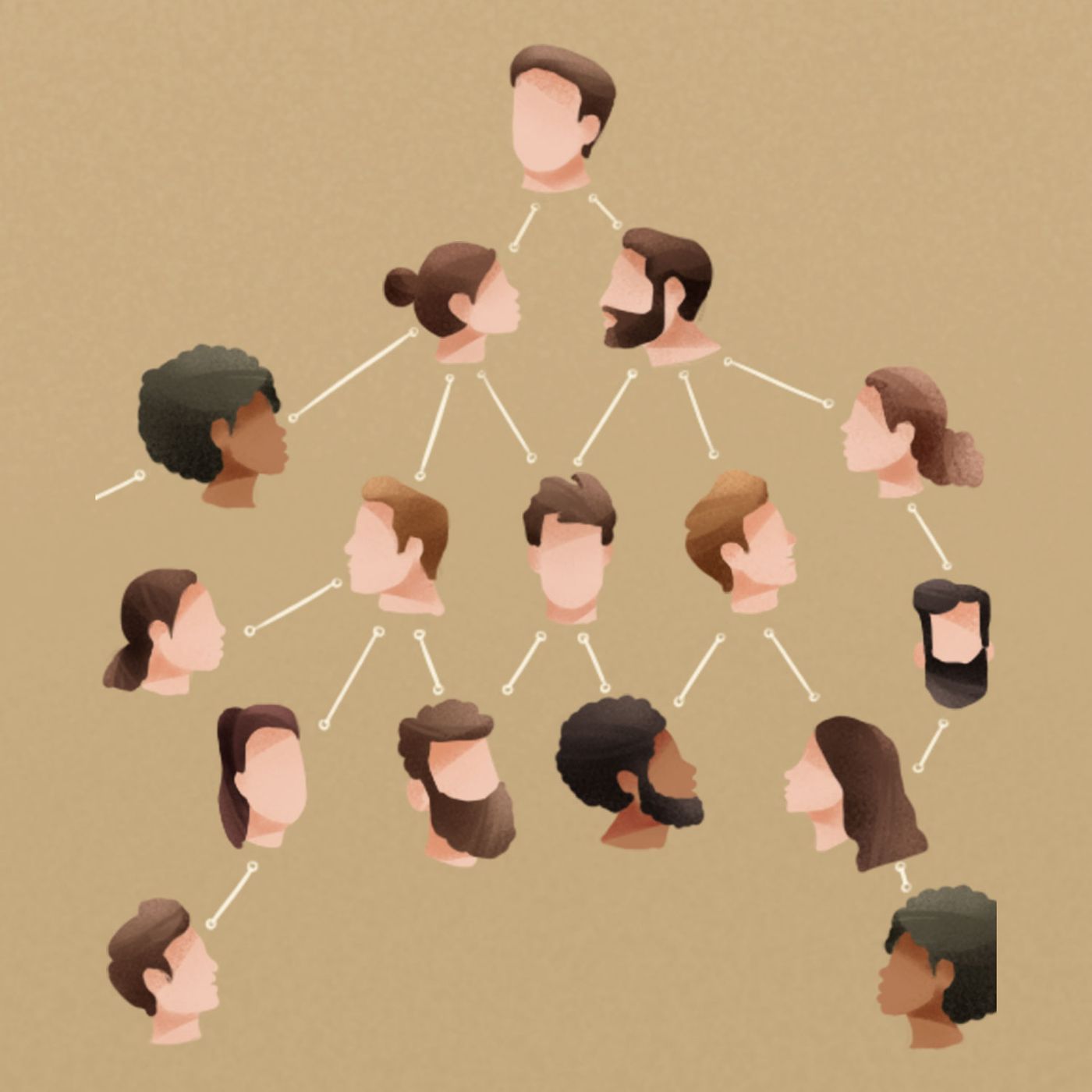
The Power of Contagion: Revealing the Secrets Behind Viral Ideas and Products
Chapter 1:what is the Contagious about"Contagious: How to Build Word of Mouth in the Digital Age" by Jonah Berger is a book that explores why certain ideas, products, and behaviors become viral and spread rapidly. Berger, a marketing professor at the University of Pennsylvania, examines the common features of contagious content and provides a framework for creating and promoting ideas that capture public attention.The book presents six principles, or STEPPS, that contribute to the contagiousness of products or information: Social Currency, Triggers, Emotion, Public, Practical Value, and Stories. Berger explains how these elements can be harnessed to make a product or idea more shareable and memorable.Berger uses real-world examples and case studies to illustrate his concepts, drawing from diverse fields like marketing, psychology, and social science. He explains why some advertisements go viral, how rumors spread, and how behavior can be influenced through social proof and word-of-mouth.Overall, "Contagious" aims to provide a deeper understanding of why certain ideas catch on while others fail to capture attention. It offers practical strategies for marketers, entrepreneurs, and anyone interested in creating a contagious message in the digital age.Chapter 2:Author of the ContagiousJonah Berger is an American author, professor, and expert in the field of marketing and social influence. He gained recognition for his bestselling book "Contagious: Why Things Catch On," which explores the science behind viral trends and how ideas, products, and behaviors spread among individuals and communities.Berger is a Professor of Marketing at the Wharton School of the University of Pennsylvania, where he has been teaching since 2007. He earned his Ph.D. in Marketing from Stanford University and has received numerous awards for his research and teaching, including the Wharton Iron Prof Teaching Award."Contagious" has become a highly acclaimed resource for marketers, entrepreneurs, and anyone interested in understanding the principles behind engaging and shareable content. In the book, Berger delves into the key factors that make something contagious, outlining six principles that influence virality: social currency, triggers, emotions, public, practical value, and stories. Through engaging case studies and real-world examples, he provides practical tips for creating contagious ideas and products.Berger's work has had a significant impact on the fields of marketing and consumer behavior. His research has been published in top academic journals, and he has provided strategic consulting for various companies, including Apple, Google, and Coca-Cola. He is also a frequent speaker at industry conferences and has been featured in media outlets such as The New York Times, The Wall Street Journal, and NPR.With his expertise in social influence and contagious ideas, Jonah Berger continues to shape the way we think about marketing, communication, and the power of word-of-mouth in our digital age.Chapter 3:why is the Contagious worth readingContagious by Jonah Berger is worth reading for the following reasons:Insights on viral marketing: The book provides valuable insights into why certain ideas, content, and products become popular, while others go unnoticed. Berger presents a framework called the STEPPS model (Social Currency, Triggers, Emotion, Public, Practical Value, Stories) that explains how things become contagious. This model can be applied in various fields such as advertising, social media marketing, or product development.Real-world examples: The book is filled with real-world examples and case studies that bring the concepts to life. Berger draws on a wide range of examples from pop culture, advertising campaigns, and business success stories, which make the book practical and relatable.Practical advice: Berger not only explains the science behind contagiousness but also provides actionable advice on how to make ideas and products more contagious. He breaks down each element of the STEPPS model and provides specific strategies and tactics that marketers and business owners can apply to their own work.Easy to read and engaging: The book is written in a clear and engaging style, making it accessible to a wide range of readers. Berger uses storytelling techniques to convey his ideas and keeps the reader hooked throughout the book.Relevant in a digital age: In today's digital age, where information spreads rapidly and competition for attention is fierce, understanding the principles of contagiousness is crucial. Contagious offers a fresh perspective on how to create content, products, or ideas that stand out and have the potential to go viral in a crowded online landscape.Overall, Contagious by Jonah Berger is worth reading for anyone interested in marketing, advertising, or understanding the dynamics of what makes things contagious. The book provides valuable insights, practical advice, and a compelling narrative that keeps readers engaged from start to finish.Chapter 4: Books like the Contagious"The Tipping Point" by Malcolm Gladwell: Like "Contagious," this book delves into the principles of virality and how ideas spread. It discusses the factors that contribute to an idea's popularity and the role of influential individuals."Invisible Influence" by Jonah Berger: This book by the same author explores the unseen forces that shape our behavior and decision-making. It delves into the power of social influence and how it affects our choices and actions."Made to Stick" by Chip Heath and Dan Heath: This book explores why some ideas thrive and spread while others fade away quickly. It provides practical strategies for creating ideas that are memorable, impactful, and contagious."Predictably Irrational" by Dan Ariely: While not directly about contagiousness, this book explores the irrational decision-making processes that influence our behavior. It explores psychological triggers and biases that can be leveraged to make messages more contagious."The Power of Habit" by Charles Duhigg: This book delves into the science of habits and why we do what we do. It explores how habits are formed, changed, and how they can be leveraged to make ideas more contagious.
14:2409/10/2023

Gut: Unlocking the Secrets of Our Digestive System
Chapter 1:what is the Gut about"Gut: The Inside Story of Our Body's Most Underrated Organ" by Giulia Enders is about the importance and functioning of the human digestive system. The book provides an accessible and entertaining journey through the digestive tract, exploring topics such as digestion, nutrient absorption, microbial flora, and the gut-brain connection.Enders, a medical student herself, uses humor and personal anecdotes to explain complex scientific concepts and dispel common misconceptions about the gut. She also discusses the latest research findings and offers practical advice on how to achieve a healthy gut through diet and lifestyle choices.The book emphasizes the significance of a well-functioning gut for overall health, as it plays a vital role in not only digestion but also in immunity, mental health, and various other bodily functions. It showcases the gut as an intelligent and interconnected organ that often goes unnoticed and underappreciated."Gut" has been praised for its engaging writing style, clear explanations, and ability to make a typically dry subject matter interesting and relatable. It has become a popular resource for both medical professionals and general readers interested in understanding and improving their gut health.Chapter 2:Author of the GutGiulia Enders is a German medical doctor and author who gained international recognition for her book "Gut: The Inside Story of Our Body's Most Underrated Organ." Born on November 20, 1990, in Mannheim, Germany, Enders developed a fascination with the human digestive system from a young age. She obtained her medical degree from the University of Frankfurt and is currently pursuing her PhD in gastroenterology at the Institute for Microbiology in Frankfurt.Enders gained widespread attention when she won the Science Slam in 2012 with her presentation on the digestive system. This success led to the publication of her first book, "Darm mit Charme" (Gut with Charm), which became an instant bestseller in Germany."Gut," the English translation of her debut book, has been praised for its accessible and engaging style of explaining complex scientific concepts. In it, Enders delves into the fascinating world of the human gut, exploring its crucial role in our overall health and well-being. She explains how the gut, often overlooked or misunderstood, impacts various aspects of our lives, including digestion, mental health, and immune system function. Through her book, Enders aims to empower readers to take better care of their gut health and make informed choices regarding their overall well-being.Enders' work has been widely acclaimed by both scientific and general audiences, with her book being translated into over 40 languages and selling millions of copies worldwide. She frequently gives lectures and presentations, sharing her knowledge on the importance of gut health and promoting a better understanding of our bodies. By combining her medical expertise with her ability to communicate complex ideas in an accessible way, Giulia Enders has become a renowned figure in the field of gastroenterology.Chapter 3:why is the Gut worth readingGut by Giulia Enders is worth reading for several reasons:Informative and educational: The book provides a wealth of information about the digestive system, intestinal health, and the role of gut bacteria. The author presents this complex topic in a engaging and understandable manner, making it accessible to both healthcare professionals and laypeople.Research-backed content: The information shared in Gut is based on scientific studies and research, ensuring that readers are getting accurate and up-to-date knowledge about the gut. Enders extensively cites sources, giving readers confidence in the reliability of the information presented.Personal touch: Enders incorporates personal anecdotes and experiences, making the book relatable and inviting. This helps to create a connection with readers, as they can see the author's passion for the subject and the impact it has had on her own life.Engaging writing style: Enders writes in a clear, conversational, and often humorous style, making the book entertaining to read. She avoids using overly technical language, making the content accessible to a wide range of readers.Practical advice: In addition to explaining how the gut works, Enders provides practical advice and tips for maintaining good gut health. This includes information on diet, exercise, stress management, and the use of probiotics, among others. The book empowers readers to take charge of their own gut health in a proactive way.Overall, Gut is worth reading because it offers a comprehensive, well-researched, and engaging exploration of the digestive system and its impact on overall health. It is both educational and practical, making it a valuable resource for anyone interested in understanding and improving their gut health.Chapter 4: Books like the GutThe Mind-Gut Connection: How the Hidden Conversation Within Our Bodies Impacts Our Mood, Our Choices, and Our Overall Health by Emeran MayerThe Second Brain: A Groundbreaking New Understanding of Nervous Disorders of the Stomach and Intestine by Michael GershonThe Good Gut: Taking Control of Your Weight, Your Mood, and Your Long-term Health by Justin Sonnenburg and Erica SonnenburgThe Gut Makeover: 4 Weeks to Nourish Your Gut, Revolutionize Your Health, and Lose Weight by Jeannette HydeThe Clever Gut Diet: How to Revolutionize Your Body from the Inside Out by Michael Mosley
15:1809/10/2023

Unraveling the Lessons in Life from the Little Prince
Chapter 1: The Little Prince Synopsis The Little Prince is a beloved novella written by Antoine de Saint-Exupéry. It tells the whimsical and philosophical story of a young prince who travels from planet to planet in search of meaning and understanding.The story begins with an aviator stranded in the Sahara Desert and encounters the little prince, who asks him to draw a sheep. As they spend time together, the prince recounts his journey through various planets and shares his unique perspectives on life.On each planet, the little prince meets different inhabitants, all representing different aspects of human nature. He encounters a king who claims to rule everything but has no subjects, a vain man seeking admiration, a drunkard avoiding his shame, a businessman obsessed with counting stars, and a geographer who never explores.The little prince's most significant encounter is with a fox, who teaches him about the importance of forming meaningful connections and taming.Through their friendship, the prince learns that what is essential is invisible to the eye and that true love requires care, time, and dedication. After leaving the fox, the prince arrives on Earth and meets a snake that promises to help him return home. The snake bites the prince, allowing him to leave his physical body behind. The aviator, saddened by the prince's departure, believes he has returned to his asteroid.In the end, the author reflects on his newfound understanding of the little prince's teachings. He realizes that adults often lose sight of the simple joys and truths in life as they become consumed by material pursuits and societal expectations. The book concludes with the reminder that "what is essential is invisible to the eye." Chapter 2:What Does the The Little Prince Mean Innocence and Imagination:The little prince embodies innocence, curiosity, and a childlike view of the world. Through his encounters with adults, the book critiques the loss of these qualities as people grow older and become preoccupied with material concerns. Importance of Relationships:The story emphasizes the significance of human connections and friendship. The little prince forms unique relationships with the characters he meets, fostering a sense of companionship and understanding.Critique of Materialistic Society:Saint-Exupéry critiques society's obsession with material possessions and superficial values. He suggests that true wealth lies in meaningful experiences, genuine connections, and appreciating the simple wonders of life.Reflection on Human Nature:The book delves into the complexity of human nature, highlighting our flaws, desires, and existential dilemmas. It encourages readers to reflect upon their own lives, choices, and priorities.Exploration of Love and Loss:"The Little Prince" explores the themes of love, loneliness, and loss. It reflects on the pain of separation and the longing for connection, reminding us of the importance of cherishing those we care about. Chapter 3:Books Similar to The Little Prince "Jonathan Livingston Seagull" by Richard Bach: This novella tells the story of a seagull who seeks perfection in flight and explores themes of individuality, self-discovery, and the pursuit of personal freedom."Siddhartha" by Hermann Hesse: This philosophical novel follows the journey of Siddhartha, a young man searching for spiritual enlightenment and meaning in life. It delves into themes of self-discovery, love, and the interconnectedness of all things."The Alchemist" by Paulo Coelho: This allegorical novel tells the story of Santiago, an Andalusian shepherd boy who embarks on a quest to find his personal legend. It explores themes of destiny, following one's dreams, and finding purpose in life."The Phantom Tollbooth" by Norton Juster: A beloved children's book that takes readers on a whimsical adventure with Milo, a bored boy who discovers a magical tollbooth that transports him to a fantastical world. It combines witty wordplay, clever allegory, and playful storytelling."The Giving Tree" by Shel Silverstein: Although it is a picture book, this classic tale explores profound themes of love, selflessness, and the passage of time. It tells the story of a tree that gives everything it has to a boy throughout his life.
02:2407/07/2023

Understanding the Patterns of Why Nations Fail
Chapter 1: Why Nations Fail review"Why Nations Fail" is a groundbreaking book written by Daron Acemoglu and James A. Robinson that explores the origins of economic and political success or failure in nations across the globe. This review aims to provide an overview of the main ideas presented in the book, evaluate its strengths and weaknesses, and offer insights into its significance in understanding the dynamics of nation-building and development.Main Arguments:Importance of Inclusive Institutions: The central thesis put forward in "Why Nations Fail" is that inclusive institutions are vital for long-term prosperity. Acemoglu and Robinson argue that nations succeed when they establish political systems that distribute power broadly, protect property rights, promote innovation, and encourage broad participation. Conversely, extractive institutions, characterized by elite control and limited economic opportunities, hinder progress and perpetuate poverty.Role of Historical Contingency:The authors emphasize that historical events and choices shape institutional trajectories. They argue against theories that attribute national success solely to geography, culture, or other predetermined factors, emphasizing that history is full of instances where nations have changed their paths through political and institutional reforms. Creative Destruction as a Catalyst:Acemoglu and Robinson highlight the importance of "creative destruction," whereby outdated economic and political structures are disrupted, making room for new innovations and institutions. This process encourages economic growth and prosperity, but it may also lead to resistance from entrenched elites who fear losing their privileges. Chapter 2:Accessible Read Online Resources of Why Nations Fail Official Website: The official website of the book provides information about the authors, summaries of the main arguments, reviews, and additional resources. Goodreads: Goodreads is a popular platform for book lovers, and it provides user reviews, ratings, and discussions on "Why Nations Fail."Amazon: Amazon's page for the book includes user reviews, ratings, and a preview of the content. You can find the book on website. Google Books: Google Books allows you to see previews or selected pages from "Why Nations Fail."Academic Research Platforms: If you have access to academic research databases, you can find scholarly articles, critiques, and discussions related to "Why Nations Fail" on platforms like JSTOR, ScienceDirect, or Google Scholar. Chapter 3:Daron Acemoglu and James A. Robinson Quotes "Institutions, we argue, are the fundamental cause of economic and political outcomes." - Daron Acemoglu and James A. Robinson"When institutions fail to provide inclusive economic and political opportunities, they become extractive, concentrating power and wealth in the hands of a few." - Daron Acemoglu and James A. Robinson"Economic institutions determine whether a country is poor or prosperous and political institutions determine whether a country is free or repressive." - Daron Acemoglu and James A. Robinson"Political and economic institutions are interrelated and mutually reinforcing: inclusive economic institutions lead to inclusive political institutions, and vice versa." - Daron Acemoglu and James A. Robinson "The roots of prosperity and poverty lie in the political and economic institutions that structure the incentives for economic activity." - Daron Acemoglu and James A. Robinson
11:4706/07/2023

The Millionaire Next Door Summary
Chapter 1: The Millionaire Next Door review Data-Driven Insights: "The Millionaire Next Door" is based on thorough research, including surveys and interviews with affluent individuals. This empirical approach lends credibility to the authors' claims and provides readers with valuable insights into the habits and mindset of the wealthy. Eye-Opening Perspective: The book challenges widely held beliefs about what it means to be wealthy and illustrates how one can accumulate substantial wealth through discipline, frugality, and sound financial management. It encourages readers to reevaluate their own spending habits and financial goals. Practical Advice: Stanley and Danko offer practical advice throughout the book, such as tips for saving, investing, and identifying business opportunities. Readers can glean actionable strategies to apply in their own lives to improve their financial situation.Chapter 2:Accessible Read Online Resources of The Millionaire Next Door Summary Websites: Various websites provide summaries and key takeaways from "The Millionaire Next Door." These summaries condense the main concepts and ideas discussed in the book, making it easier to grasp its core principles. A simple internet search for "The Millionaire Next Door summary" will yield multiple options.Book Reviews: Popular book review websites like Goodreads and Amazon contain extensive reviews from readers who have already read "The Millionaire Next Door." You can gain insights from these reviews, which often discuss the book's strengths, weaknesses, and notable points.Articles and Blog Posts: Many personal finance blogs and financial websites have published articles and blog posts discussing the lessons learned from "The Millionaire Next Door." These pieces often highlight the key concepts and offer practical advice based on the book's teachings. Searching for "The Millionaire Next Door articles" or "lessons from The Millionaire Next Door" will lead you to such resources. Podcasts and YouTube Videos: Several podcasts and YouTube channels feature interviews, discussions, or summaries related to "The Millionaire Next Door." These audio and video resources can be an engaging way to learn about the book's content and understand its key principles.Chapter 3:Thomas J. Stanley and William D. Danko. quotes "If you want to be rich, stop acting like you have money and start acting like you don't." This quote emphasizes the importance of frugality and living below your means in order to build wealth. "The foundation stone of wealth accumulation is defense, and this defense should be anchored by budgeting and planning." Stanley and Danko emphasize the significance of creating a budget and planning for financial goals as a crucial step towards building wealth. "What you do today determines what you'll have tomorrow." This quote emphasizes the importance of taking action and making wise financial decisions in the present to secure a prosperous future. "Wealth is more often the result of hard work, diligent savings, and living below your means than it is the result of inheritance, advanced degrees, or high salaries." This quote highlights that true wealth comes from disciplined habits such as saving money consistently, working hard, and maintaining a frugal lifestyle rather than relying solely on external factors like inheritance or education. "In most cases, wealth is the result of a lifestyle of hard work, perseverance, planning, and, most of all, self-discipline." This quote underscores the idea that wealth accumulation is not an overnight success but instead a result of consistent effort, determination, strategic planning, and self-control.
13:1104/07/2023

Animal Farm Retold:The Fable of Manor Farm
Chapter 1: Animal Farm review Introduction:George Orwell's Animal Farm is an exceptional piece of literature that combines the charm of a fable with the depth of political satire. Published in 1945, this novel has since become a classic, captivating readers of all ages. Orwell ingeniously uses a farm setting to depict the rise and fall of a revolution, shedding light on the flaws and corruption inherent in human nature.Synopsis:Animal Farm tells the story of Manor Farm, where animals overthrow their human oppressors and establish a utopian society void of exploitation. Led by the visionary pig, Old Major, the animals unite against their common enemy, humans. Their newfound freedom, however, gradually deteriorates as some power-hungry pigs manipulate their way into leadership positions. The promise of equality and justice quickly fades, leaving the animals disillusioned and oppressed once more.Writing Style:Orwell's writing style in Animal Farm is straightforward and accessible, making it suitable for readers of all ages. The simplicity of his prose allows the allegorical elements to shine through, ensuring that the underlying messages are not lost. Through vivid descriptions and engaging dialogue, Orwell masterfully captures the nuances of each character and their role in the story. Chapter 2:Accessible Read Online Resources Project Gutenberg: Animal Farm is available for free on Project Gutenberg, a digital library offering over 60,000 free eBooks. You can access the book in various formats, such as HTML, EPUB, Kindle, and plain text. Visit the Project Gutenberg website and search for "Animal Farm" to find and read the book. Internet Archive: Another reliable platform to access Animal Farm is the Internet Archive. It offers a vast collection of books, including Animal Farm. You can either read the book online or download it in different formats like PDF, EPUB, and more. Visit the Internet Archive website and search for "Animal Farm" in the Books section to find the book.Open Library: Open Library is an open-source project that provides access to millions of books. Animal Farm is available to read online or borrow as an eBook through Open Library. Simply visit the Open Library website , create an account (if necessary), and search for "Animal Farm" to access the book.Google Books: A large portion of Animal Farm can be found on Google Books. While not the entire book may be accessible there, you should still be able to read significant portions of it. Visit the Google Books website and search for "Animal Farm" to explore the available content. Chapter 3:George Orwell quotes "In a time of deceit telling the truth is a revolutionary act." "Political language... is designed to make lies sound truthful and murder respectable, and to give an appearance of solidity to pure wind." "War is peace. Freedom is slavery. Ignorance is strength." "The most effective way to destroy people is to deny and obliterate their own understanding of their history."
11:0503/07/2023

Reflections of an Old Man and the Sea
Chapter 1: the Old Man and the Sea review Santiago, a weathered old fisherman, has experienced a long streak of bad luck without catching a single fish. Despite his struggles, he remains resolute and decides to venture into the deep sea alone, determined to change his fortune. On the eighty-fifth day of his dry spell, Santiago hooks a massive marlin, engaging in a fierce struggle that lasts for days. Throughout his arduous ordeal, Santiago displays unwavering determination and strength of character. He battles exhaustion, hunger, and physical pain, refusing to let go of the line or surrender to defeat. As he fights the marlin, Santiago develops a profound respect for his adversary, recognizing its remarkable strength and beauty.The novella also delves into the protagonist's introspection and contemplation of life. Santiago reflects on his past experiences as a fisherman and questions the meaning of success and worthiness amidst his solitary existence. The narrative beautifully captures the essence of the human spirit and the indomitable will to face adversity head-on. Chapter 2:Accessible Read Online Resources Project Gutenberg: Project Gutenberg is a popular website that offers free access to a wide range of literary works, including "Old Man and the Sea." You can visit their website and search for the book using the provided search bar.Google Books: Google Books provides an extensive collection of books that you can read online. Simply visit the Google Books website and search for "Old Man and the Sea" in the search bar. You should be able to find the book and read it online.Open Library: Open Library is an open, editable library catalog that aims to provide free access to millions of books. You can visit their website and search for "Old Man and the Sea" in their search bar. If available, you will be able to read the book online.ManyBooks: ManyBooks is another platform offering thousands of free eBooks, including classics like "Old Man and the Sea." You can go to their website and search for the book using their search function.Chapter 3:Ernest Hemingway quotes "The world breaks everyone, and afterward, many are strong at the broken places." Analysis: This quote from Hemingway's novel "A Farewell to Arms" reflects his belief in the resiliency of individuals. It suggests that adversity and hardship are inevitable in life, but those who endure and overcome their struggles become stronger as a result. "Courage is grace under pressure." Analysis: Hemingway often explored themes of bravery and stoicism in his works. In this quote, he emphasizes that true courage lies not only in facing challenging situations but also in maintaining composure and dignity during difficult times."There is no friend as loyal as a book." Analysis: Hemingway had a deep love for literature, and this quote expresses his appreciation for the companionship and reliability found in books. He believed that books could provide solace, wisdom, and understanding, making them steadfast allies in a person's life."Happiness in intelligent people is the rarest thing I know." Analysis: Hemingway's observation about happiness speaks to his perception of the world around him. He often depicted complex characters struggling with existential crises and inner turmoil. This quote suggests that intelligent individuals, due to their deeper understanding of life's complexities, may find it more challenging to attain lasting happiness."All you have to do is write one true sentence. Write the truest sentence that you know." Analysis: Hemingway was known for his concise and minimalist writing style. In this quote, he emphasizes the importance of authenticity and truthfulness in writing. By focusing on capturing one true sentence, Hemingway encourages writers to strip away unnecessary details and get to the heart of their message.
03:5028/06/2023

The Secrets of Millionaires: Lessons from 'Rich Dad Poor Dad' on How to Create Lasting Wealth
Chapter 1:Why the book Rich Dad Poor Dad classicThe book "Rich Dad Poor Dad" is considered a classic because it has had a significant impact on the personal finance genre and popularized the idea of financial literacy. The book was written by Robert Kiyosaki and was first published in 1997. One reason for its popularity is that it challenges traditional beliefs about money and wealth, and encourages readers to think differently about their finances. It emphasizes the importance of understanding the difference between assets and liabilities, and how to use them to create wealth. Additionally, "Rich Dad Poor Dad" provides practical advice on how to manage and grow your money, such as investing in real estate and starting your own business. It also emphasizes the importance of having a mindset focused on financial education and taking control of your financial future. Overall, the book has resonated with millions of people around the world and has helped many improve their financial literacy and make better financial decisions.Chapter 2:Themes about the book Rich Dad Poor Dad Financial education is crucial One of the main themes in Rich Dad Poor Dad is that financial education is crucial to achieving financial success. The author, Robert Kiyosaki, emphasizes the importance of understanding the difference between assets and liabilities, as well as how to make your money work for you through investing. He argues that traditional education often fails to teach people how to manage money effectively, and that it's essential to seek out financial knowledge and advice from those who have achieved financial success. The power of mindset Another key theme in Rich Dad Poor Dad is the power of mindset. Kiyosaki writes about the importance of developing a "rich mindset," which involves thinking positively about money and seeing opportunities where others see obstacles. He also discusses the ways in which our beliefs and attitudes about money can either help or hinder our financial success.Building wealth through passive income A major focus of Rich Dad Poor Dad is the idea of building wealth through passive income. Kiyosaki argues that the traditional model of working a 9-to-5 job and relying on a salary is flawed, and that true financial freedom comes from generating passive income streams through investments such as real estate, stocks, and businesses. He encourages readers to think outside the box and find creative ways to generate income that don't require them to trade their time for money.Taking risks and embracing failure Kiyosaki also stresses the importance of taking risks and being willing to fail in order to achieve financial success. He writes about his own experiences with failed business ventures and how he learned from those experiences to ultimately achieve greater success. He argues that fear of failure often holds people back from pursuing their dreams and that embracing risk and failure is an essential part of any successful entrepreneur's journey. The importance of financial independence Finally, Rich Dad Poor Dad emphasizes the importance of achieving financial independence. Kiyosaki argues that being financially independent means being able to support yourself and your family without relying on a job or a traditional paycheck, and that it's a necessary step towards achieving true freedom and security in life. He encourages readers to take control of their finances and work towards achieving financial independence through strategic investments and careful planning. Chapter 3:Accessible Read Online ResourcesRobert Kiyosaki's official website - You can find a lot of information about the book, including reviews, summaries, and additional resources. Goodreads - A great platform to read reviews from other readers who have read the book, and you can also find quotes, trivia, and discussions related to the book. Amazon - One of the best places to purchase the book in different formats (paperback, hardcover, e-book, audiobook) and also to read the reviews from other customers. YouTube - There are several videos on YouTube that provide summaries of the book, key takeaways, and lessons that can be learned from it. Audible - If you prefer audiobooks, you can listen to Rich Dad Poor Dad on Audible with a free trial subscription.
02:0725/06/2023

From Stuck to Unstoppable: Mastering Change with Who Moved My Cheese
Chapter 1:Why the book Who Moved My Cheese classic The story uses the metaphor of four characters (two mice and two little humans) who encounter a sudden change in their environment, specifically the disappearance of their regular source of cheese. The different responses of the characters to this change reflect the attitudes and behaviors that people often display when faced with unexpected changes in their own lives. The book encourages readers to embrace change, let go of fear, and be proactive in adapting to new situations. The book's concise and engaging storytelling style allows it to resonate with a wide range of readers, from business leaders and managers to high school students and homemakers. Its message is relevant not only in the context of career or workplace changes but also in personal growth and relationships. In summary, "Who Moved My Cheese?" has become a classic because it provides a practical and relatable framework for navigating change, empowering readers to take control of their lives and achieve success in their chosen paths.Chapter 2:Themes about a book Who Moved My Cheese Change: The book explores the theme of change and how it can be difficult to accept and adapt to at times. The characters in the book struggle with the sudden disappearance of their cheese and have to learn to navigate a new reality. Adaptability: Along with change, the book also highlights the importance of adaptability. The characters who are able to adapt to the changes around them are the ones who ultimately find success. Fear: Fear is another key theme in the book, as many characters are afraid of what will happen if they don't find their cheese or if they try something new. Overcoming fear is necessary for personal growth and success.Resilience: Resilience is another important theme as the characters face setbacks and challenges along the way. Those who are resilient are able to bounce back from failures and keep moving forward towards their goals.Motivation: Motivation is explored in the book, as the characters must find ways to stay motivated and focused on finding their cheese. Different characters have different motivations driving them, such as fear or desire for success.Lifestyle: The book also touches on lifestyle choices and how they can impact one's ability to adapt to change. Those who are stuck in their ways and resistant to change may struggle more than those who are open to new experiences and willing to take risks.Self-improvement: Finally, self-improvement is an important theme in the book, as each character must learn to reflect on their own behaviors and beliefs in order to grow and achieve success.Chapter 3:How does Who Moved My Cheese EndThe four characters represent different aspects of human nature and how people deal with change. At the end of the book, two of the characters (Sniff and Scurry) find a new source of cheese and continue their journey, while the other two characters (Hem and Haw) struggle to adapt to the change and remain in the same spot hoping for the return of the old cheese.Eventually, Hem realizes that he needs to embrace change and sets off to find new cheese. The book concludes with a message about the importance of being open to change and adapting to new situations in order to succeed in life.
20:0120/06/2023
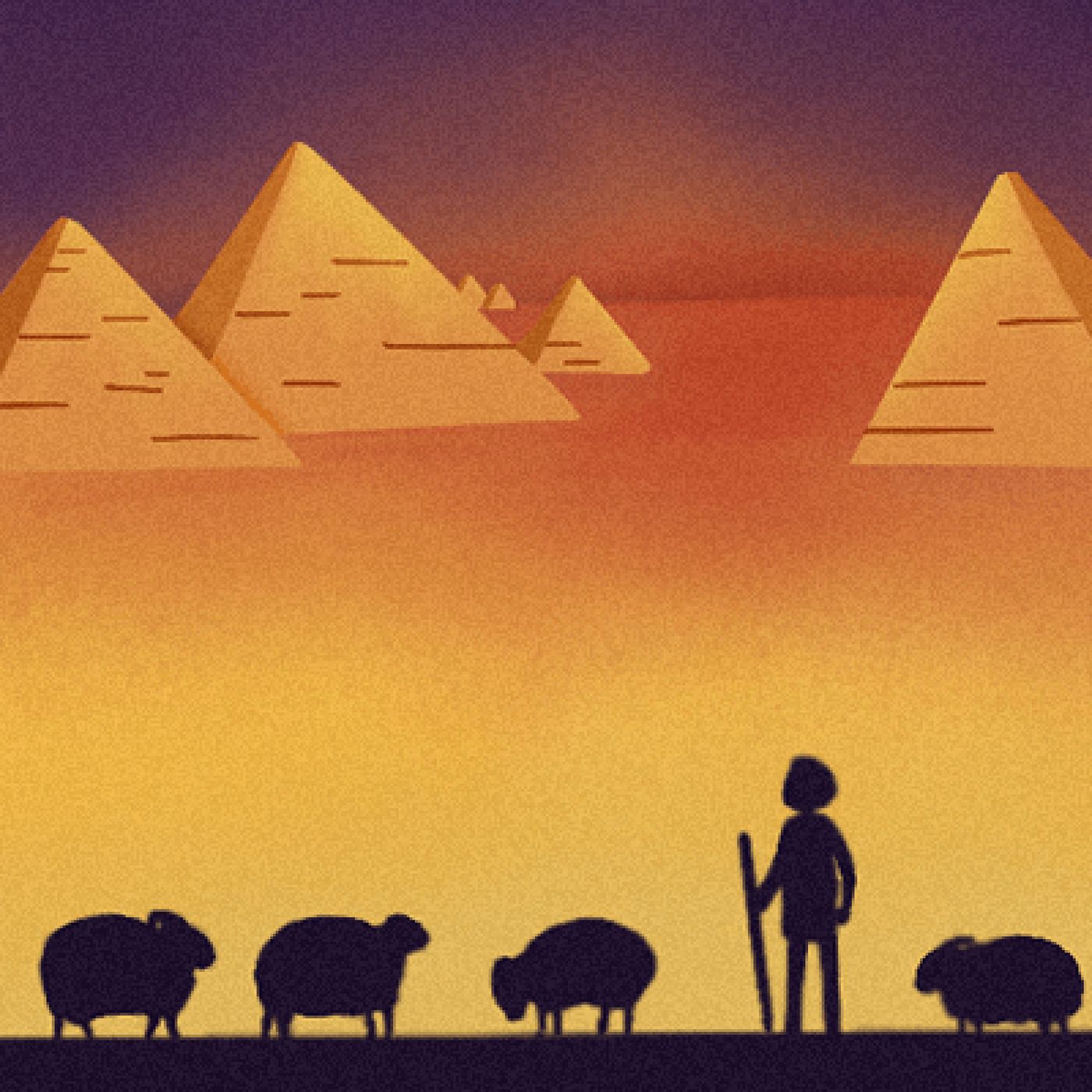
Transformative Alchemy: Unleashing Your Inner Potential
Chapter 1:Why the book The Alchemist classic Firstly, it is written in a simple and easy-to-understand language, making it accessible to a wide range of readers. The story is also compelling, with a meaningful and inspiring message that resonates with people of different ages and backgrounds.Secondly, the book explores universal themes such as self-discovery, following one's dreams, and the journey of life. Many people can relate to these themes and find inspiration from the characters' experiences in the book. Thirdly, the book has been translated into over 80 languages, making it accessible to readers all around the world. It has sold millions of copies worldwide, making it one of the most popular books of all time.Finally, the book's author, Paulo Coelho, has a significant influence on many people's lives through his writing and personal philosophy. He encourages individuals to seek their own spiritual path and embrace their destiny, which adds to the book's timeless appeal.Chapter 2:Themes from The Alchemist Personal Legend: The primary theme of this novel is that every person has a personal legend - a unique purpose or destiny that they must fulfill in life. Santiago, the protagonist, embarks on a journey to discover and pursue his own personal legend, which inspires readers to explore their own paths and follow their dreams.Courage: Another significant theme in the book is courage. Santiago faces many challenges and obstacles along the way, but he perseveres through them with strength and determination. This theme encourages readers to have the courage to pursue their goals and overcome adversity in their own lives.Fate vs. Free will: The concept of fate and free will is also explored in the novel. While Santiago believes in omens and signs that guide him towards his personal legend, he also exercises free will in making decisions and taking actions that shape his own destiny. This theme highlights the importance of balancing fate and free will in one's life.Learning from Nature: Throughout the story, Santiago learns valuable lessons from nature. He observes the flight patterns of birds, the behavior of animals, and other natural phenomena to gain insight into his own journey. This theme emphasizes the importance of respecting and learning from the natural world around us.Love: Love is another recurring theme in the book. Santiago falls in love with a woman named Fatima, whom he meets along his journey. This theme shows how love can inspire and motivate individuals to pursue their dreams and fulfill their personal legends. Chapter 3:How does The Alchemist end In "The Alchemist" by Paulo Coelho, the story ends with Santiago, the shepherd boy, finally finding his treasure. After a long journey filled with obstacles and challenges, Santiago reaches the Egyptian pyramids where he thinks his treasure is located. However, he finds nothing but a group of thieves who beat him up and take all of his money. Feeling defeated, Santiago has a dream that tells him to go back to where he started, to the place where he had first met the alchemist. When he returns, he discovers that the treasure he had been seeking was actually buried beneath the sycamore tree where he had slept on his first night in Andalusia. He digs it up and finds an enormous amount of gold and jewels. Santiago realizes that the true treasure he had been searching for was not the material wealth he had found, but rather the knowledge and wisdom he had gained from his journey. He returns to the love of his life, Fatima, and they live happily ever after.
01:4619/06/2023
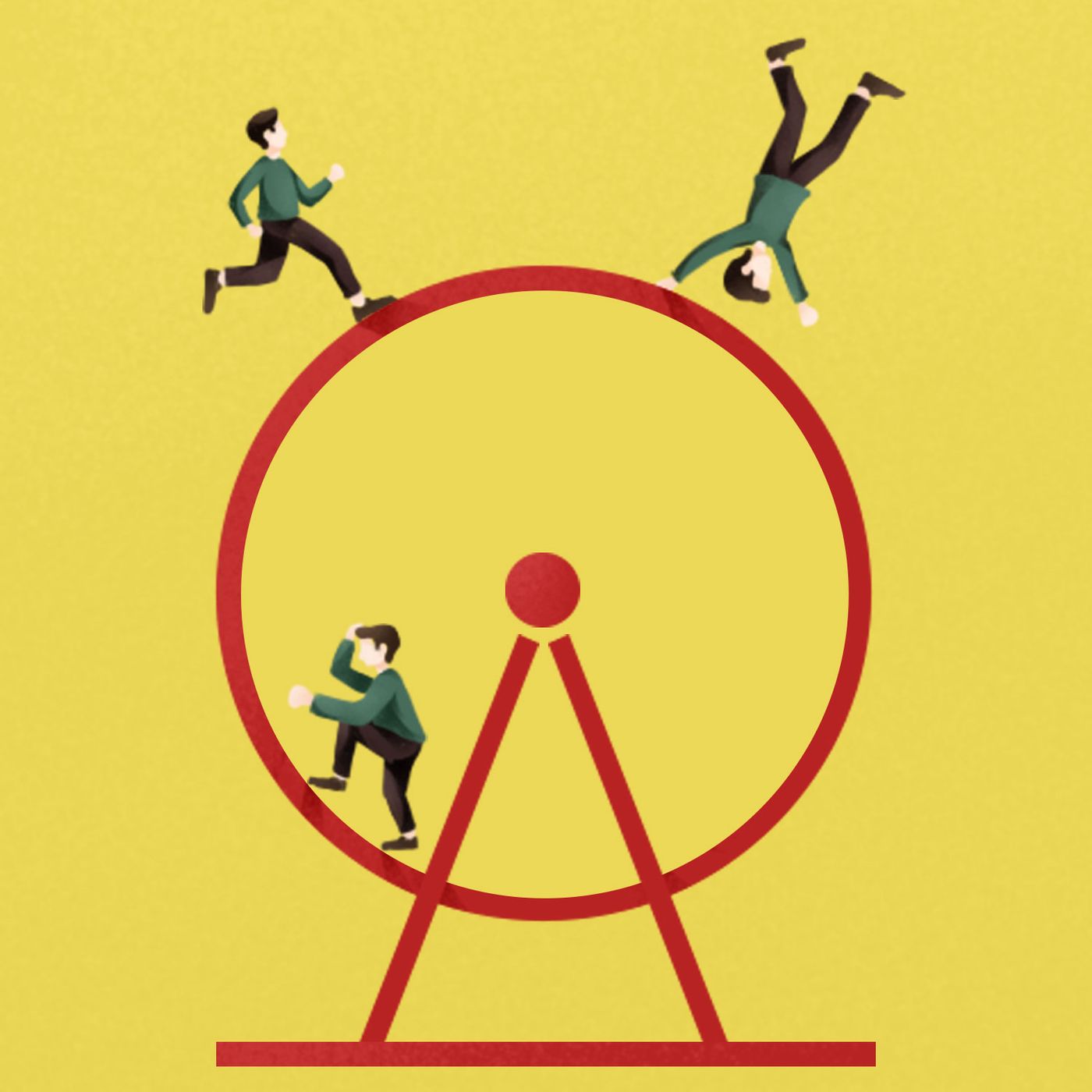
The Power Of Habit Book Introduction And Review
The Power Of HabitThe Power Of Habit Book Introduction And Review Do you think that your daily routine is the product of well-considered decision-making? In reality, it's anything but that. We are primarily driven by our habits, which, once formed, are there to stay. However, once we understand the way habits function, it becomes easier for us to control them. The Power of Habit is an in-depth analysis of habits. It shows how developing new habits can transform our lives beyond recognition.Author : Charles DuhiggCharles Duhigg is a former New York Times reporter who currently writes for The New Yorker magazine. He studied history at Yale University and received an MBA from Harvard Business School. He is an author of many bestsellers, including The Power of Habit and Smarter Faster Better, and a recipient of the Pulitzer Prize, the United States National Academies Communication Award, the National Journalism Award, the George Polk Award, the Gerald Loeb Award, and other accolades. He has also contributed to American Life, The Dr. Oz Show, and other periodicals throughout his career.Overview | Chapter 1Hi, welcome to Bookey. Today, we'll unlock the book The Power of Habit: Why We Do What We Do in Life and Business.What do you do first thing in the morning? Brush your teeth, wash your face, take a shower, or eat your breakfast? Do you tie your left or right shoe first? Which route do you take to work? When you arrive at the office, do you first check your email or make small talk with your colleagues? Do you eat a healthy salad or a hearty steak for lunch? After you get home in the evening, do you exercise or make your dinner first? You may think that all of these choices are the result of deliberate thinking, but they are not. Most of those actions are the byproduct of your habitual patterns. According to research published by Duke University in 2006, 40% of peoples' daily activities are born from habits, not decisions made after careful consideration.Habits play an essential role in our lives. Over time, they profoundly impact our health, productivity, financial security, and happiness. As a result, we all want to develop good habits or break bad ones. Nevertheless, most of us fail to do so and easily revert to our regular patterns. However, once we understand the science behind habit formation, we can break habits into segments and restructure them to develop good ones that fit our needs and support healthier eating patterns and higher productivity. Over the decades, Charles Duhigg, the author of this book, consulted hundreds of neuroscientists, psychologists, sociologists, and marketing specialists. Based on this extensive research, his book explains the neurology of habit formation and the mechanics of changing habits. We'll divide the premise of this book into five main areas: Part 1: The Neurology of Habit Formation Part 2: How to Change an Old Habit Part 3: How to Create a New Habit Part 4: Finding Keystone Habits Part 5: Are We Responsible for Our Habits?
30:1707/06/2023

Don Quixote Book Introduction And Notes
Don QuixoteDon Quixote Book Introduction And Notes The book revolves around the adventures of a middle-aged man of the lowest nobility. After reading so many chivalric romances, he loses his mind to become a knight-errant and save his country. After recruiting Sancho Panza as a squire, the two embark on their adventure.Author : Miguel De Cervantes SaavedraIt is widely considered that Miguel de Cervantes Saavedra was one of the world's greatest novelists and the greatest writer of the Spanish language. Don Quixote is his greatest work, widely recognized as the first modern novel and the pinnacle of world literature. Overview | Chapter 1Hi, welcome to Bookey. Today we will unlock the book Don Quixote. It is a classic novel by Miguel de Cervantes in the early 17th century. It follows the adventures of a middle aged man named Alonso Quixano, who becomes convinced he is a knight and sets out on a quest to right wrongs and defend the helpless. Accompanied by his loyal squire, Sancho Panza, Don Quixote encounters a series of comical and often absurd situations as he tries to live up to his chivalrous ideals. He battles windmills, challenges a group of priests to a duel, and even rescues a damsel in distress. Despite his well-meaning intentions, Don Quixote's actions often cause chaos and confusion, leading to humorous misunderstandings and misadventures. As he continues his journey, he begins to question the nature of reality and the role of imagination in shaping our lives.The novel explores themes of idealism, delusion, and the power of imagination to transform our world. The novel has been widely celebrated for its humor, satire, and exploration of human nature.The author of this book, Miguel de Cervantes, was born in 1547 in Alcalá de Henares, Spain. In Western literature, he is regarded as one of the greatest Spanish novelists, poets, and playwrights. Cervantes began writing at a young age and published several plays and poems before becoming a soldier in the Spanish Navy. He fought in many battles, including the famous Battle of Lepanto, where he was wounded and captured by pirates. After being released from captivity, Cervantes returned to Spain and continued to write. In 1605, he published the first part of Don Quixote, which quickly became a literary sensation and established Cervantes as one of the leading writers of his time. The second part of the book was published in 1615, and the complete novel was published in 1620. Cervantes died in Madrid in 1616, but his legacy as one of the greatest writers in history lives on.Moreover, the impact of Don Quixote has been profound and enduring. It is widely considered one of the greatest works of literature of all time, and its influence can be seen in countless other works of literature, art, and popular culture. The book's hero, Don Quixote, is a timeless symbol of the individual's struggle against the forces of conformity and oppression, and his unyielding idealism and courage have inspired countless readers to believe in themselves and their ability to change the world. Additionally, the novel's clever satire and brilliant storytelling have made it a beloved classic, and it continues to be read and enjoyed by people of all ages and backgrounds. In short, the impact of Don Quixote has been nothing short of revolutionary, and its lasting legacy is a testament to the power of great literature to inspire and transform the human spirit.Now, we will focus on Don Quixote’s adventures in three parts. In Part One, we will provide a plot summary of Don Quixote’s adventures. In Part Two, we will depict the key characters, like Don Quixote, his squire and lady love. In Part Three, we will elaborate on the style and theme.
08:5907/06/2023

The Lean Startup Book Introduction And Review
The Lean StartupThe Lean Startup Book Introduction And Review We have entered an era of unprecedented entrepreneurial renaissance, but the success rate of today’s startups is very low due to the absence of effective management. How to improve a startup’s chances of success has become an inevitable question for every entrepreneur. This book proposes the idea of ‘lean startup’. By developing minimum viable products and failing fast, a business could validate whether its product meets the customers’ needs or not at the minimum cost and in the shortest time. During the process, a startup can acquire “validated learning” and improve its chance of success. Author : Eric RiesThe author, Eric Ries, is the Co-Founder and CTO of IMVU as well as an Entrepreneur in Residence at Harvard Business School. His idea of ‘lean startup’ has been extensively reported in The New York Times, The Wall Street Journal, Harvard Business Review, The Huffington Post, and many other media. He also provides consulting services related to business and product strategy for a number of startups, large companies, and venture capital institutions.Overview | Chapter 1Hi, welcome to Bookey. Today we will unlock the book The Lean Startup: How Today’s Entrepreneurs Use Continuous Innovation to Create Radically Successful Businesses.In an era of unprecedented entrepreneurial renaissance, how could a startup stand out from fierce competition and succeed? A great product? An amazing team? Or an extraordinary idea? The answer is none of these. A business with a great product could easily fail if its marketing strategy is improper. But even a perfect marketing strategy does not guarantee success. A startup with both a good product and a marketing strategy in line with market demands might gain some early success, but it could still fail from blind expansion and excessive operating expenses. Even a world-renowned company like Kodak could eventually go bankrupt due to its inability to adapt to market changes and transform its business. On top of idea, product, team, and other elements, a startup that wants to be successful and continue to grow needs to have a set of scientific management practices. If a company can do this, it will develop and grow in an orderly manner and put itself in a nearly invincible position.Many startups fail due to improper management practices, so some entrepreneurs try to imitate the management practices of those long-established enterprises. But they neglected one fact: Although the traditional enterprises have mature management models, their models are not applicable or appropriate for startups. The practices of traditional enterprises are based on a stable market environment, while startups face a chaotic market environment with extreme uncertainty. As a result, the conventional management practices are not helpful to the development of startups, and sometimes those practices may even introduce bureaucracy and kill creativity instead. On the other hand, some other entrepreneurs do the exact opposite: They completely abandon the conventional management principles and just follow their instincts. But this also doesn’t guarantee success and can be problematic. So, how exactly should entrepreneurs manage their startups in order to succeed? This book proposes the idea of a ‘lean startup’. By developing a minimum viable product (MVP), a startup could quickly validate if a product meets customers’ needs at the minimum cost and in the shortest time. The process is called ‘validated learning’, which can help entrepreneurs improve their chances of success. The concept of ‘lean startup’ was highly regarded after being tested in the market, it’s also been extensively reported in The New York Times, The Wall Street Journal, Harvard Business Review, The Huffington Post and many other media.Eric Ries, the author of the book, is the Co-Founder and CTO of IMVU, and also an Entrepreneur in Residence at Harvard Business School. He created the concept of lean startup and established IMVU using this method. Ries provides consulting services related to business and product strategy for a number of startups, large companies, and venture capital institutions. He’s helped many startups to succeed. In this bookey, we will analyze The Lean Startup book in three parts:Part one, the fundamentals of a lean startup;Part two, using lean startup to achieve early success;Party three, how to further grow a startup.
10:3507/06/2023

The Intelligent Investor Book Introduction And Review
The Intelligent InvestorThe Intelligent Investor Book Introduction And Review This book covers all the classical investment practices any stakeholder needs to know. It has been known by many as the “Stock Market Investing Bible” since it was first published in 1949. This book analyzes the difference between “investment” and “speculation,” and discusses how investors respond to market fluctuations. It also introduces the core idea of value investing, “margin of safety,” and what strategies defensive and enterprising investors should use. Author : Benjamin GrahamBenjamin Graham, an American economist and investment guru, is the founder of value investing theory. He is known as “the Dean of Wall Street” and “the Father of Modern Security Analysis”. Graham was not only Warren Buffett’s research supervisor at Columbia University’s Business School, but he was also regarded by Buffett as his “spiritual mentor.” Overview | Chapter 1Hi, welcome to Bookey. Today, we will unlock the book The Intelligent Investor.When it comes to stock investment, most people’s first reaction will be to think of Warren Buffett, the “Oracle of Omaha.” The book we’re reading today is written by Benjamin Graham, whom Buffett,referred to as his “mentor for life.” When unlocking Buffett: The Making of an American Capitalist and The Snowball: Warren Buffett and the Business of Life, we mentioned that Buffet read The Intelligent Investor in 1950 when he was 19 years old. The book struck him immediately. Not long after, Buffett enrolled in Columbia University’s Business School, where he studied value investing, with Graham as his mentor. Three years after graduation, Buffett got a job at Graham’s company, and during his first two years there, Buffett learned about value investing strategies and grew his wealth from $9,800 to $174,000.When Buffett read The Intelligent Investor again in 1972, he said, “I read the first edition of this book early in 1950, when I was nineteen. I thought then that it was by far the best book about investing ever written. I still think it is.”Since its initial publication in 1949, the book has been regarded as a world-renowned classic in investment practices. It has been considered a revolutionary text often referred to as the "Stock Market Investing Bible" by investment gurus such as Warren Buffett. Buffett even wrote the preface and commentary for the book. It's been 40 years since the fourth edition of this book was published, and you may be wondering if the investment strategies mentioned in the book still hold true today. In fact, Graham himself emphasized in the introduction that the book focuses more on the principles of investing and the attitudes of investors. Therefore, we can still learn a lot today from this perspective. Benjamin Graham, an American economist and investment thinker, is the founder of value investing theory. He is known as “the Dean of Wall Street” and “the Father of Modern Security Analysis”. Graham was not only Warren Buffett’s research supervisor at Columbia University’s Business School, but also regarded by Buffett as his “spiritual mentor” throughout his life. His security analysis theory and knowledge of the field was a tremendous shock to the investment field, affecting almost three generations of the biggest fund managers on Wall Street.Next, we will unlock the book for you from three areas:First, the fundamentals of value investing;Second, investment suggestions for defensive investors;Last, investment suggestions for enterprising investors.
12:5907/06/2023

The Five Dysfunctions Of A Team Book Introduction And Review
The Five Dysfunctions Of A TeamThe Five Dysfunctions Of A Team Book Introduction And Review You might find it strange that, sometimes, companies armed with better and newer technology, stronger directors, and more capital than their competitors still fall behind in terms of revenue and customer growth. How can this be? The Five Dysfunctions of a Team: A Leadership Fable uses the story of a CEO rescuing a company to show us the dysfunctions that can hinder teamwork and performance and how overcoming them can set a company off to a brand-new start.Author : Patrick LencioniPatrick Lencioni is the president of the management consultancy The Table Group as well as a bestselling business writer and speaker devoted to the study of corporate and team management. He has consulted thousands of senior executives from Fortune 500 companies, high tech start-ups, universities and non-profit organizations. He has been named one of America's top five business speakers by The Wall Street Journal, as well as one of the “ten new gurus you should know” by Fortune Magazine. Overview | Chapter 1Hi, welcome to Bookey. Today we will unlock the book The Five Dysfunctions of a Team: A Leadership Fable.In today’s competitive market, we often see companies equipped with cutting-edge technology, more capital and better talent still falling behind their competitors in terms of revenue and customer growth. Likewise, the imaginary, Silicon Valley-based software company presented in this book, DecisionTech Inc., boasts an accomplished, prestigious executive team and an impeccable business plan. Yet two years after its founding, the company is on the verge of bankruptcy. What has led to its failure? Can the company be revived and how? These and more questions are answered in this management tale.True to the literary tradition of the fable, the author uses the tribulations of fledgling CEO Kathryn Petersen, tasked with saving the company before it’s too late, to explain the five dysfunctions that can make even the best teams ineffective, and how to overcome them. As such, the book can be of help to any company who find themselves reflected in the narrative. It shows that the process of building an outstanding team that can really make good use of the company resources, while not easy, is not too complicated either. All it takes is to direct everyone’s energies towards the common goal, a result that can prove useful across any industry and market condition.Author Patrick Lencioni is a founder of the consultancy The Table Group. Since 1997, The Table Group has dedicated themselves to helping company leaders improve organizational performance and interdepartmental communication. A prolific speaker, Lencioni himself shares his thoughts on organizational management and leadership with over ten thousand people every year, and his deep insights into the difficulties of teamwork have led him to elaborate original solutions to common team dysfunctions.And now, let’s begin to learn about the following five dysfunctions of teams and their solutions:Part One: The first dysfunction: without trust, there can be no teamwork;Part Two: The second dysfunction: fear of conflict lowers efficiency in problem solving;Part Three: The third dysfunction: lack of commitment, where team decisions are impossible to define;Part Four: The fourth dysfunction: avoidance of accountability, and a lack of pressure among coworkers;Part Five: The fifth dysfunction: inattention to results, when team performance is not prioritized.
08:1307/06/2023

The Black Swan Book Introduction And Notes
The Black SwanThe Black Swan Book Introduction And Notes Before the discovery of the first black swan, people were convinced that all swans were white. Hence, a “Black Swan” indicates an unexpected and impactful rare event. From the financial crises to the sinking of the Titanic, or the September eleven attacks, “Black Swans” exist in all fields. This book provides an in-depth analysis of the nature and the rules of “Black Swans.” It enables us to understand both how society operates, and how to gain the upper hand in this uncertain world.Author : Nassim Nicholas TalebNassim Nicholas Taleb is a researcher at the New York University Courant Institute of Mathematical Sciences. He is the author of several bestselling books, such as ‘Fooled by Randomness’, ‘An-tifragile’, and ‘Skin in the Game’. As a practical researcher of “uncertainty,” Taleb has written fifty academic papers investigating “uncertainty” and is known as a thinker with “rare courage and broad knowledge.” His thoughts and works have influenced a large population of readers worldwide. He has also helped in making the “Black Swan” become a household concept.Overview | Chapter 1Hi, welcome to Bookey. Today we will unlock the book ‘The Black Swan: The Impact of the Highly Improbable’.If someone said that tomorrow is always full of unknowns and risks, you may think that they are being a bit alarmist. However, this was true of September the tenth, two thousand and one. Who could have ever predicted that terrorist attacks would happen the very next day? These events stunned the entire world. That morning, terrorists hijacked four passenger airliners. One of the planes crashed on the ground. Two planes crashed into the World Trade Center in New York. The sky was filled with clouds of smoke, and both towers collapsed within two hours. The fourth plane crashed into the Pentagon in Washington and partially damaged the building. Nobody on those four planes survived. About three thousand people were killed, six hundred more than the victims of the attack on Pearl Harbor. It can be said that the September eleventh attacks destroyed the entire World Trade Center and part of the Pentagon. But more importantly, it damaged America’s sense of peace and security. What was shocking about the attacks were not only its sudden and disastrous consequences, but also why the Unites States of America, which has the world’s most advanced means of communication and intelligence, failed to predict this long-planned plot.Now, you may have an idea about what the term “Black Swan” refers to. It indicates an unexpected and impactful event. It’s beyond expectations and brings about immense influence. The September eleven attacks are a typical “Black Swan.” However, if you think that “Black Swans” are limited to national affairs, you are wrong. In fact, “Black Swans” are everywhere. They have an impact on issues ranging from national and social security, to our daily lives. Hence, let’s see what the book ‘The Black Swan’ has to say about why it’s hard to predict a “Black Swan” and how we should cope with the unpredictable future. The author of this book, Nassim Nicholas Taleb, is a researcher at the New York University Courant Institute of Mathematical Sciences. He also wrote several bestselling books, such as ‘Fooled by Randomness’, ‘Antifragile’, and ‘Skin in the Game’. In his early years, he was a businessman and dealt with various financial products in New York and London. Now, he serves as a Distinguished Professor at New York University. ‘The Black Swan’ is the epitome of Taleb’s thoughts concerning “uncertainty”, and a book full of prophetic wisdom. Taleb is also known as the “father of the Black Swan” for putting forward the “Black Swan Theory.” Besides enjoying the status of a classic in the socio-cultural field, the book was listed as a bestseller by the New York Times for more than a year and has been published in over thirty languages.Next, we will deconstruct the core contents of ‘The Black Swan’ in three parts to understand how we can cope with the unpredictable future.Part One: What are the characteristics of the “Black Swan”?Part Two: Why can’t we predict the “Black Swan?”Part Three: How can we cope with the impact of the “Black Swan?”
16:1607/06/2023

Start With Why Book Introduction And Notes
Start With WhyStart With Why Book Introduction And Notes Why was Steve Jobs able to make Apple a worldwide craze? Start With Why reveals that the secret lay in Jobs using The Golden Circle, always asking WHY before anything else. This book introduces the concept of The Golden Circle, and through ample examples, explains why The Golden Circle is so effective, the process of using it, and how to increase your ability to exert influence through The Golden Circle. Author : Simon SinekSimon Sinek is a British-American author and inspirational speaker, as well as a prominent voice in leadership theory. He became famous due to his discovery of The Golden Circle. He has served as an advisor for numerous leaders and organizations, from SMEs and startups to large enterprises such as Microsoft, to non-profit organizations, and has even advised governments and politicians. His views are frequently quoted in major newspapers and magazines. His other works include Leaders Eat Last among others. Overview | Chapter 1Hi, welcome to Bookey. Today we will unlock the book Start With Why: The Golden Circle that Jobs followed to make Apple a global success. Everyone knows Apple. In 1976, Steve Jobs and Steve Wozniak founded Apple Computer in California. In its first year of business, selling only one product, Apple made a million dollars in revenue. By year two, their sales had soared to 10 million dollars. And by the sixth year, Apple had become a billion-dollar company with over 3000 employees. In April 2012, Apple became the world’s biggest company, with a market value of over 520 billion.Why was Apple able to achieve such enormous success? You could say it’s because Apple’s products are perfect, their advertisements are full of innovation, and consumers everywhere love them. However, the author of Start With Why, Simon Sinek, thinks that the reason Apple was able to succeed was in fact because its founder used a brand new perspective to look at personal computers, and dared to challenge traditional market views. He did this by first asking WHY. While the majority of companies were still thinking that the biggest market for computers lay in business use, Apple envisioned that it would become a commodity for everyone and not simply a tool that sits on an office desk. It's exactly because Apple insisted on asking WHY before anything else, that they were able to achieve non-stop innovation and push aside these traditional views, and it was this very concept that won Apple widespread long-term trust and support from consumers. The book we'll unlock for you today, Start With Why, provides a deep analysis of the secret to Apple becoming a global success – The Golden Circle, or in other words, asking WHY before anything else.Now, let’s learn to understand this principle by looking at three separate areas:Part One: Why The Golden Circle is so effectivePart Two: How to use The Golden Circle Part Three: Using The Golden Circle to win support
10:5607/06/2023

Leaders Eat Last Book Introduction And Notes
Leaders Eat LastLeaders Eat Last Book Introduction And Notes Some enterprises perform well in the short-term but, in the long-term, end up failing. While this unfortunate scenario happens to some branches around the world, other can miraculously grow their stock prices in over 1200% increase in stock prices. Why does that happen? What is the difference between those that succeed and those who fail? Many enterprises regard short-term rises in earnings as a sign of success, but overlook long-term growth and sustainability. So, how can we inspire employees with ideals of dedication and cooperation whilst keeping up with an extraordinary performance? This book, used as training material by top organizations including Microsoft, American Express, the US Department of Defense, and the United Nations, will open the door to a sustained increase in performance in your teams.Author : Simon SinekSimon Sinek is known as the pathfinder of leadership philosophy. His pioneering "selfish & selfless chemicals" leadership rule initiated the integration of human biology principles into leadership philosophy. Sinek also put forward other important leadership principles to leaders all around the world, including the “Golden Circle" and the "Circle of Safety". His leadership speech streamed on TED has over 54.77 million views, and ranks among the top videos of the platform. Overview | Chapter 1Hi, welcome to Bookey. Today we will unlock the book “Leaders eat last: Why some teams pull together and others don’t”.If you were to visit the United States Marine Corps, you will notice an interesting fact: the local restaurant has a different dynamic. Many organizations opt to serve their leaders or their top-tier employees before anyone else in the team. However, in the American Marine Corps, junior employees are served first, before the group of senior leaders, who are usually the last ones to get a meal. Surprisingly, there is no standing order which dictates this behavior, the habit is just a product of the strong leadership culture of the foundation.Exceptional leaders genuinely care about their employees, as they understand that they are the ones who put the power in their hands. Good leaders put others before themselves, sacrifice personal interests, and advance the interests of the organization, gaining true respect from their peers and strengthening their leadership as a consequence. The principle of "leaders eat last" is not only applicable to the Marines. If typical enterprises or organizations can blend this concept into their own corporate cultures, they will also be capable of building and sustaining a well-motivated team. However, in reality, we will see that the "kick the cat" effect often exists in many companies. The term “kick the cat” refers to a chain reaction where those who rank higher in a company vent dissatisfaction to people – or employees - considered inferior. When the upper-level group of employees of an enterprise is under extreme pressure in an enterprise, they tend to pass the pressure to the middle level workers. Following the cycle, the pressure will then end in the group of employees with the lowest level of knowledge. When this group is under duress, working becomes a burden for them. The entire working environment becomes a "pressure barrel", where the employees at the bottom of the “barrel” feel exhausted and suffocated. The results are clear-cut: loss of employees and following company crises.How can an enterprise on the verge of bankruptcy revitalize its fortune? How can leaders inspire employees' passion for work? How can we functionally improve a company's efficiency? The book "Leaders Eat Last" offers fascinating insights about the creation of a winning company culture and helps people to become outstanding leaders. As the best training material for team management, this book integrates base human survival principles into leadership philosophy. The "selfish & selfless chemicals" leadership rule tells readers how to establish a "Circle of Safety" that leads the way to a sense of security. This “circle” is powerful enough to inspire employees with ideals of dedication, cooperation, promoting stronger and more effective team performance. The author, Simon Sinek, believes that positive long-term outcomes can only be achieved when members of an organization share common values and are sincerely respected in their work environment. Even in the face of adversity, a team in a “Circle of Safety” will eventually overcome obstacles, increasing the business’ chances of survival.Next, we will take a look at the upcoming three parts:Part One: How to improve team cohesion and create a "Circle of Safety"Part Two: How to relieve employees' stresses and maintain the "circle of safety"Part Three: How to safeguard the "Circle of Safety" in the face of challenges and temptations
13:2707/06/2023

I Am Malala Book Introduction And Review
I Am Malala I Am Malala Book Introduction And Review When Malala Yousafzai was born in Pakistan, she was a normal girl, but she went on to resist terrorists and advocate for women’s right to education. As a result, she was shot in the head by armed militants at the age of 15, but she miraculously survived. Her story moved the world, and she won the 2014 Nobel Peace Prize at only 17 years old. How did she have the superhuman courage to face death, and how did she maintain such strong convictions in her fight for equality? Let’s experience this brave and visionary tale together. Author : Malala Yousafzai, Christina LambMalala Yousafzai, born in 1997 in Pakistan, became well-known when she published an article on the BBC website at age 11 that argued for children’s and women’s rights to education. When she won the 2014 Nobel Peace Prize, she was only 17 years old, making her the youngest person to ever win the prize. Christina Lamb is a well-known British war journalist who started covering Pakistan and Afghanistan in 1987. She has been named Britain’s Foreign Correspondent of the Year five times, and she has received Europe’s highest honor for war correspondents, the Prix Bayeux-Calvados. Overview | Chapter 1Hi, welcome to Bookey. Today we will unlock the book, I Am Malala: The Story of the Girl Who Stood Up for Education and Was Shot by the Taliban. In the beginning of the 21st century, most people living in peaceful countries enjoyed comfortable lives, and they saw the right to education as a given. They could hardly imagine that, under the same sky, many corners of this world were full of war. The dark places were overrun with fear. Citizens of those countries were being tossed between endless oppression and torment, and countless children were yearning for education and equal treatment, but they struggled in vain. They may have been impacted by poverty, illness, or war, but all of them wanted the world to hear their voices, and the author of this book, Malala Yousafzai, was one of them.Malala was born to a normal family in the Swat Valley of Pakistan. When frequent terrorist activity broke out in Pakistan, and an anti-government organization, the Taliban, controlled their small village in the Swat Valley, she refused to be silent. Instead, she stood up to her oppressors and fought for the right to an education. She was regarded as the terrorist organization’s enemy, a label that put her life in jeopardy. She was shot by a terrorist at the age of 15. After miraculously surviving, she became the youngest person to ever win the Nobel Peace Prize at the age of 17. I Am Malala, the autobiographical account of these experiences, was on the New York Times best-seller list for over a year. In the book, she reveals a terrorist organization’s evil deeds and darkest facets, giving an account of her extraordinary struggle to secure women’s right to education. Time magazine commented, “In trying to silence this Pakistani schoolgirl, the Taliban amplified her voice. She is now a symbol of the struggle for women’s rights all over the world.”Malala mentions in her book that there are 57 million children in the world who have not been able to attend elementary school, and Pakistan is one of the countries where this problem is most serious. In 2014, the World Bank released a report that showed there were 7 million people in Pakistan who were deprived of education, and two thirds of those people were women. Most of the people who have lost out on schooling don’t have basic arithmetic, reading, or other language skills. A UNESCO survey found that the main barriers that stand between children and education are gender, geography, poverty, and armed conflicts, those conflicts being one of the top reasons that students are unable to attend school. Among elementary-age children that are unable to attend school, over one third of them live in areas impacted by war or similar conflicts. Maybe we have no way to imagine how people live in Pakistan, especially in the areas and times most heavily impacted by conflict and terrorism. When their lives are hanging in the balance, do they still have dreams? When facing hardships, do they choose to be resigned to their fate, or do they stand up and fight? Do the children learn from their life experiences instead of learning from teachers? All of these questions will be answered after we have finished listening to this bookey. In this bookey, we will see what we can truly gain from Malala Yousafzai in three parts:Part One: A cry for freedom in the face of Taliban terrorists;Part Two: A struggle for education under the oppression of the Taliban;Part Three: A call for world peace after being attacked by the Taliban.
10:2607/06/2023

Guns, Germs, And Steel Book Introduction And Review
Guns, Germs, And SteelGuns, Germs, And Steel Book Introduction And Review Why did the inhabitants of the Eurasian continent conquer the American natives, instead of the other way around? Why are wheat, maize, and livestock like pigs and cows found in certain regions of the world and not in others? This book reveals the facts behind the broader environmental elements that have helped shaped the world’s history, thereby effectively refuting anthropological theories based on racism. It also records the underlying causes of the current situation and the many injustices visible in our modern world. This book can be considered as a true history of all the races and ethnicities of the world. Author : Jared DiamondJared Diamond is a polymath spanning a wide range of fields including anthropology, ecology, physiology, and evolutionary biology. He is a current professor of geography and former professor of physiology at University of California, Los Angeles (UCLA). He is also a member of the American Academy of Arts and Sciences and the National Academy of Sciences, as well as an editorial board member of Skeptic magazine. Dr. Diamond has received a MacArthur Foundation Genius Award, in addition to research prizes and grants from the National Geographic Society. He is well-known for his popular science books such as The Third Chimpanzee; Guns, Germs, and Steel; Collapse; and Why Is Sex Fun?Overview | Chapter 1Hi, welcome to Bookey. Today we will unlock the book Guns, Germs, and Steel: The Fates of Human Societies.In 1972, the author, Jared Diamond, was walking along the beach in New Guinea when a local friend Yali asked him, “Why is it that you white people developed so much cargo and brought it to New Guinea, but we black people had little cargo of our own?” To his surprise, Dr. Diamond found it difficult to answer this seemingly simple question. Why is that so?Yali’s question may seem like a simple question about the difference in the production of goods, but his question actually contains many hidden caveats. Why, for example, did the people of New Guinea still seem to be “living in the Stone Age” two centuries ago, while the Europeans already had a wide variety of inventions such as steel axes, gunpowder, garments, soft drinks, and umbrellas? Taking a closer look at the difference in lifestyles of these two groups of people, we may connect it to the broader spectrum of disparities in the modern world and ask: why is it that people of Eurasian origin (including those who have settled in North America) control most of the world’s wealth and power today? Moreover, some ethnic groups, like the indigenous peoples of Australia, the Americas, and Sub-Saharan Africa, no longer hold their homeland but have been subjugated or even wiped out. Around the start of the 16th century, European countries began to occupy territories all over the world. Why was it the Eurasians who conquered and subjugated native peoples, rather than the native Americans, Africans, and Australian aborigines, conquering or subjugating the Eurasians? Some people claim that around that time, Eurasia already had many advanced empires with all kinds of technological and weapons advantages that people in other parts of the world did not. It was these technological and political differences that led to the inequalities that we see in the world today. While this is an obvious answer, the deeper question remains as to what caused these differences in the first place. Historically, certain groups have claimed that Europeans are naturally more intelligent and genetically superior to other races. Of course, today we know that such an explanation is not only racist and offensive, but also factually incorrect. So, what is the true cause of these differences? In the years since his conversation with his friend, Dr. Diamond has conducted significant research into human evolution, history, and language, and he published Guns, Germs, and Steel twenty-five years later as an attempt to answer Yali’s question.Like The Third Chimpanzee, which we unlocked in a previous bookey, Guns, Germs, and Steel has also won the Royal Society’s Science Book Prize for Dr. Diamond. In addition, it was a New York Times bestseller and has won the Pulitzer Prize for general non-fiction. The book reveals some broad environmental factors that have benefitted the historical development of certain regions of the world, thereby debunking anthropological theories based on race and racial superiority. At the same time, it offers possible causes for many of the inequalities that we see in the world today. It can be regarded as a true history of the peoples of the world. In this bookey, we will introduce the book in three parts:Part 1: Guns, germs, and steel;Part 2: Time, flora and fauna, and geographical barriers;Part 3: China, Oceania, and Africa.
12:2307/06/2023

Getting Things Done Book Introduction And Review
Getting Things DoneGetting Things Done Book Introduction And ReviewDo you often complain about not having enough time or having a lot of work to do? Getting Things Done: The Art of Stress-free Productivity will help you solve all your problems. This book introduces a method called GTD time management. It is an efficient workflow practice proven to help you "Win at the Game of Work and Business of Life." This book is based on the author’s over 30 years of consulting experience and personal exploration. It has been published in 33 countries, helping millions of readers around the world to get their work done easily and efficiently. Author : David AllenDavid Allen, an American author, is the founder of David Allen Company, a management consulting enterprise. He is one of the most influential thinkers in improving work efficiency and a leading authority in the field of time management. He created the GTD time management method and was recognized by Forbes as one of the foremost executive coaches in the U.S.Overview | Chapter 1Hi, welcome to Bookey. Today we will unlock the book Getting Things Done: The Art of Stress-free Productivity.Are you confused when you are busy as a bee every day at work but can’t get the promotion or income you expect? Do you still have a lot of work to do when it is time to go home? Most of us are annoyed by tight schedules, a heavy workload and too much stress.It seems that the reason these things happen is because we have too much work to do – but in fact, we have poor time management skills. No matter if you want to lose 40 pounds, take control of your financial destiny, disentangle your family relationships or pursue your dreams, you will need to manage your time to improve productivity. The method introduced in this book is GTD time management. It is a set of proven and highly efficient workflow practices which can free you from excessive work and enable you regain control of your life. GTD is short for "Getting Things Done" and it simply means to get things done. This method has been popular worldwide for more than a decade. Many people even greet others by saying, "Are you GTD today?" You can see how great the impact is.The book is written by David Allen, an American training expert with more than 30 years of experience in management and pioneering research on improving productivity. He has spent thousands of hours helping people in "work trouble" to manage their work. This book is a collection of the author's practical experiences over the years, and it will guide you to produce maximum output with minimum effort. The nature of time management is to manage our minds and actions. GTD time management holds that the most important point is to move all distracting work arrangements out of your brain through some external tools and techniques. In this way your brain remains relaxed and happy. GTD time management methods can make you more successful, and more importantly, help you live a happy life.In this Bookey, we will talk in detail about the four parts of the GTD time management method. Part one: how to prepare for GTD time management? Part two: the five stages of lateral mastering work flow.Part three: the five phases of longitudinal project planning.Part four: the three keys to yielding twice the result with half the effort.These four parts will help you to set up your time management system. Now let's begin to talk about them, one by one.
16:0407/06/2023

21 Lessons For The 21st Century Book Introduction And Review
21 Lessons For The 21st Century21 Lessons For The 21st Century Book Introduction And Review Artificial intelligence has already entered our lives. While we enjoy the convenience it brings us, we are also worried that it might take our jobs, access our data, and make decisions for us. Given the numerous challenges we will be facing in the future, how do we make sure we can stay at the forefront of time and survive? Following Sapiens: A Brief History of Humankind and Homo Deus: A Brief History of Tomorrow, as the finale of the trilogy, the book 21 Lessons for the 21st Century will bring you to a significant discussion about human destiny in the twenty-first century.Author : Yuval Noah HarariThe author of this book is Yuval Noah Harari, an Israeli writer, also known as “the young geek“. Not only does the book take a historical perspective, but also covers a wide range of knowledge areas, such as biology, sociology, psychology, philosophy, and religion, fully demonstrating the author’s extensive knowledge. Unlike traditional historians, Harari, being creative, makes videos based on the content of his book and uploads them on YouTube, gaining a large number of young fans.Overview | Chapter 1Hi, welcome to Bookey. Today we will unlock the book: 21 Lessons for the 21st Century.According to statistics from the Internet Data Center (IDC), the amount of data generated globally in the year 2008 was zero point four nine zettabytes (ZB). If we assume that a book has 200,000 words, that amounts to an equivalent of fourteen hundred trillion books, which can fill two hundred and eighty thousand libraries. By 2011, the amount of data had increased by two point seven times, which equals to an average increase of 250,000 libraries per year.Fortunately, artificial intelligence (AI) can process a great amount of data, and allows us to enjoy the technological advancement it brings to our lives. However, when we benefit from technology, have we ever thought about the possibility of AI taking our jobs, accessing our data, and even making decisions for us? When it comes to this point, how will we survive? The book, 21 Lessons for the 21st Century by Harari discusses this exact question. Not only does it take a historical perspective, but it also covers a wide range of knowledge areas: biology, sociology, psychology, philosophy, and religion. The author believes that individuals can have a direct influence on the world.Known as the young geek, Yuval Noah Harari is a historian who obtained his doctoral degree from the University of Oxford. Besides this book, he has published another two global bestsellers, Sapiens: A Brief History of Humankind and Homo Deus: A Brief History of Tomorrow, completing his trilogy. Unlike the other two books, the one we are going to discuss today is more instructive. It focuses more on the challenges people are facing at the present moment. It gained enormous popularity and wide attention around the world since it was published, and has so far been authorized for publication in over twenty countries.This book has selected twenty-one significant topics on the solutions relevant to the future of humans. This Bookey will divide them into three main parts.Part One talks about the challenges the information explosion era poses to human beings;Part Two is about how individuals can find the truth;
14:3607/06/2023





